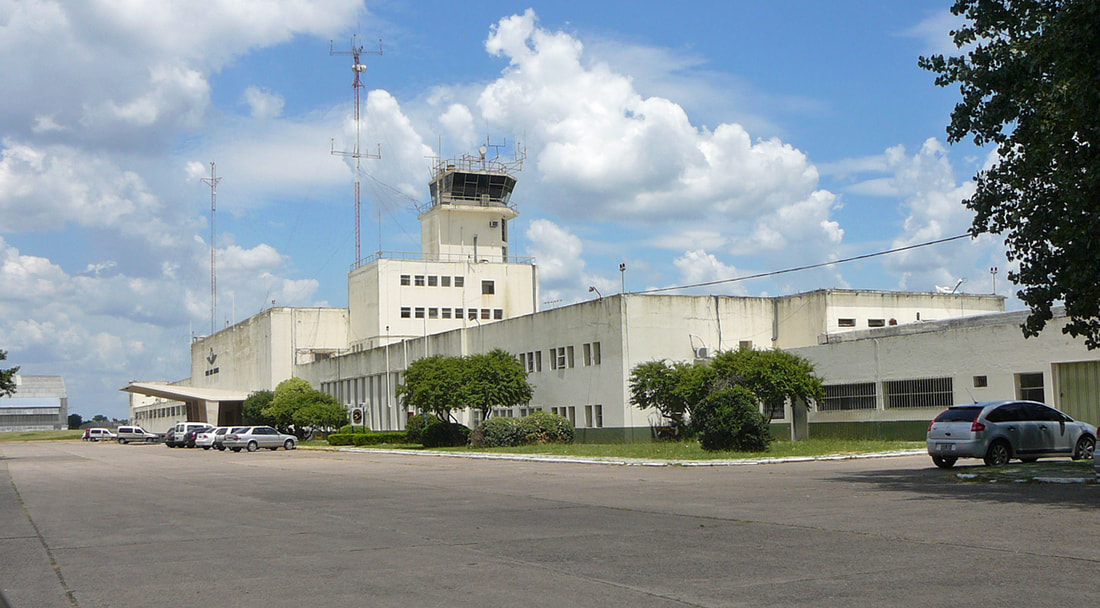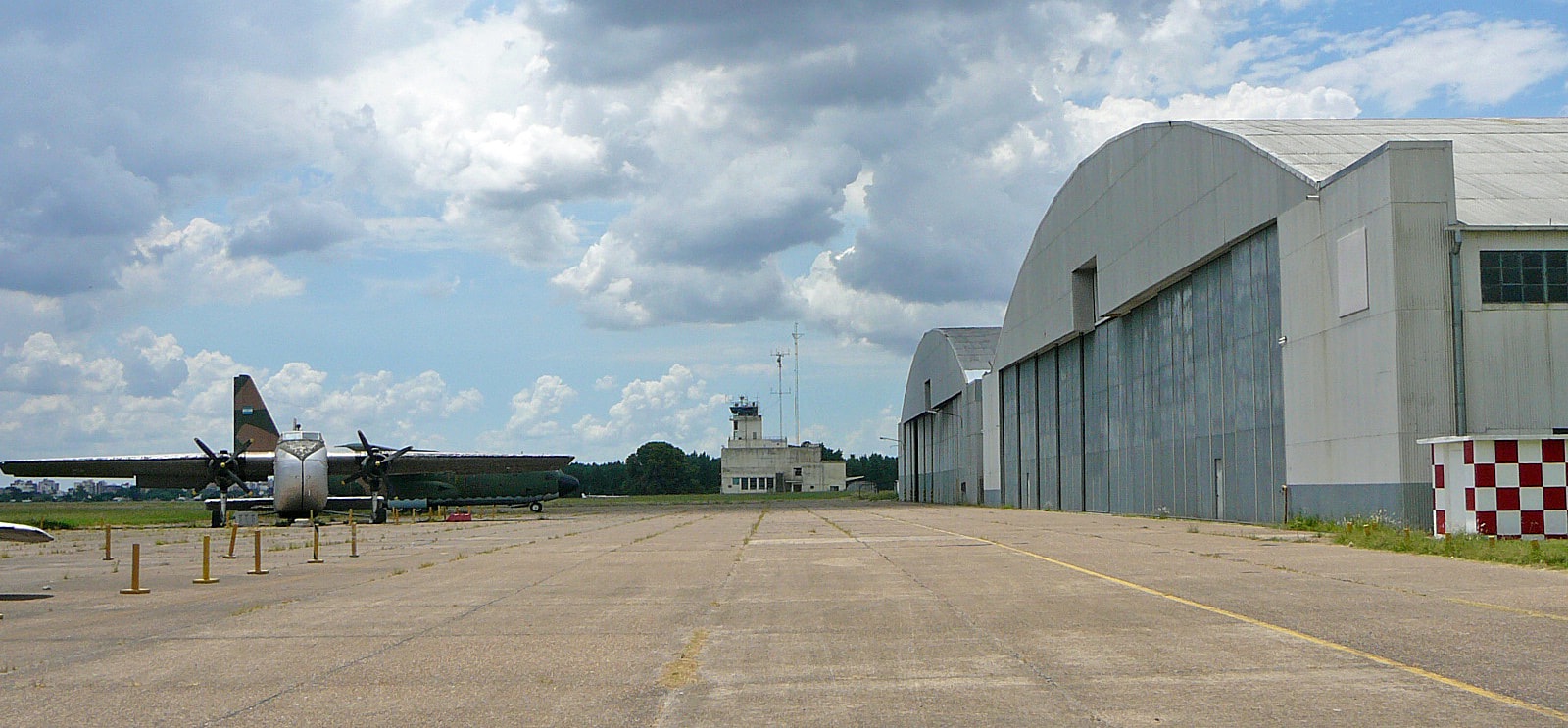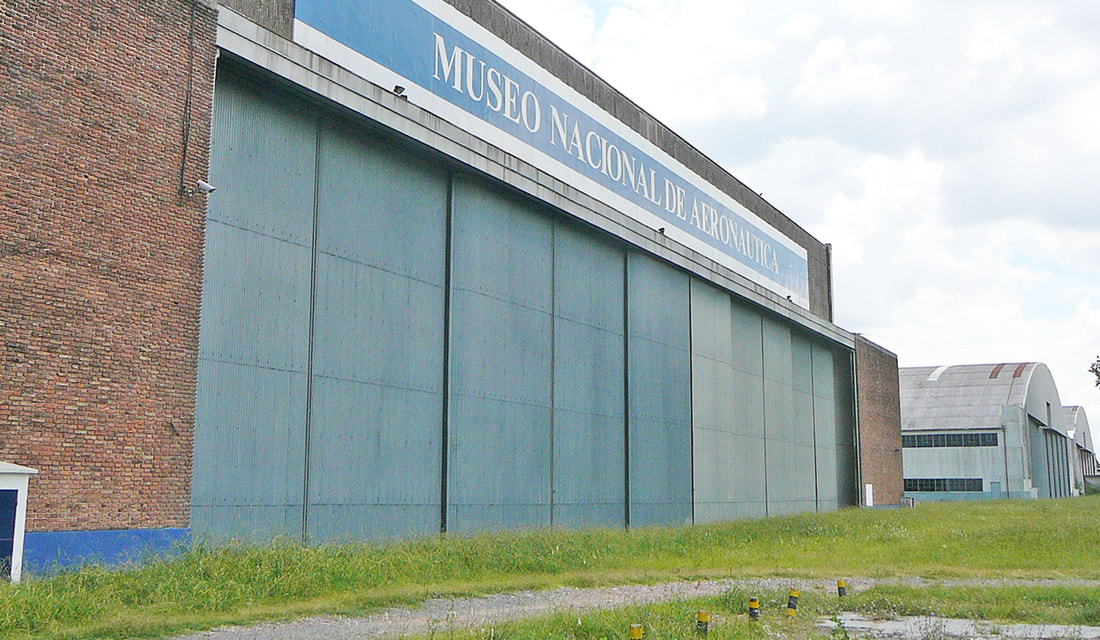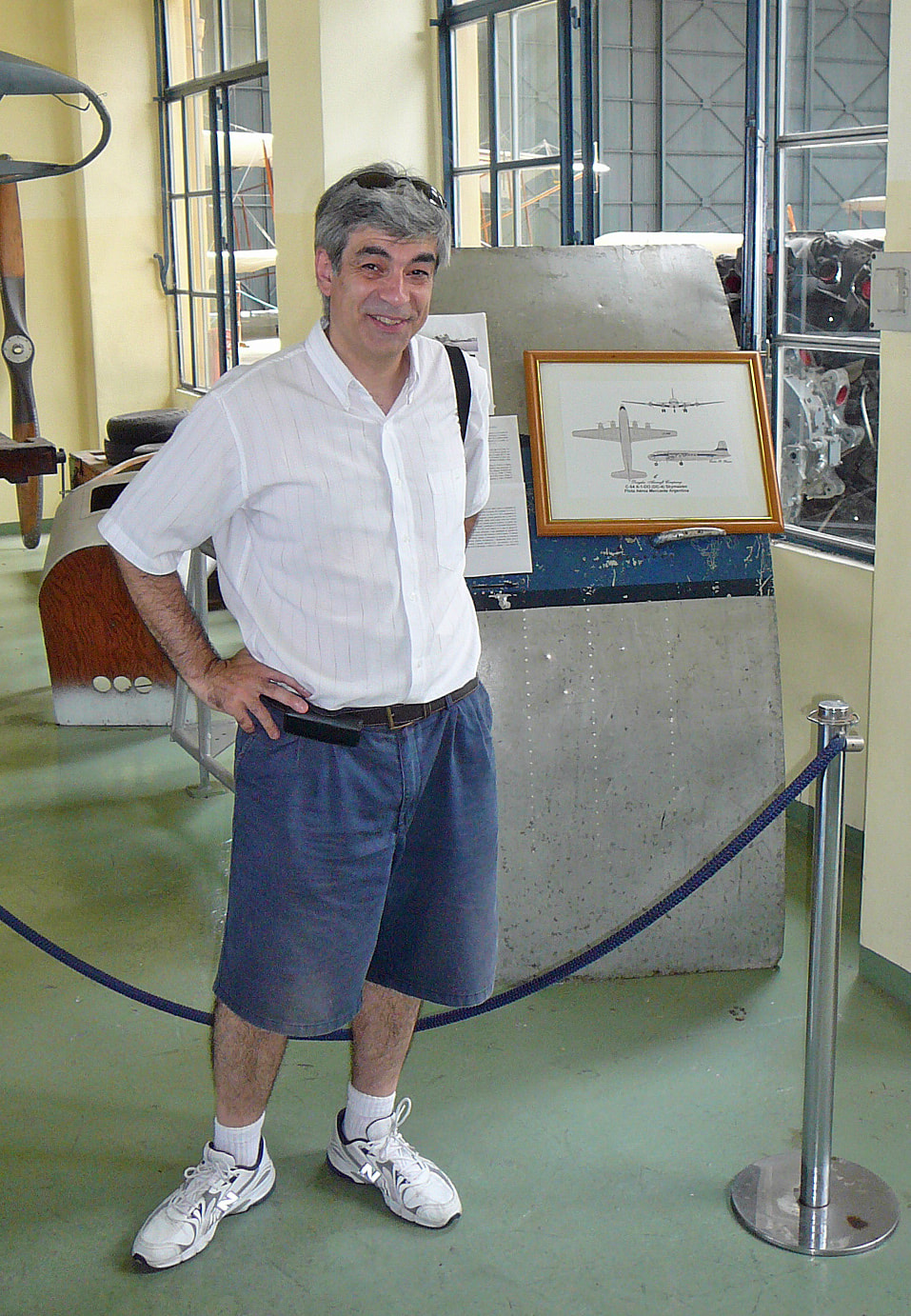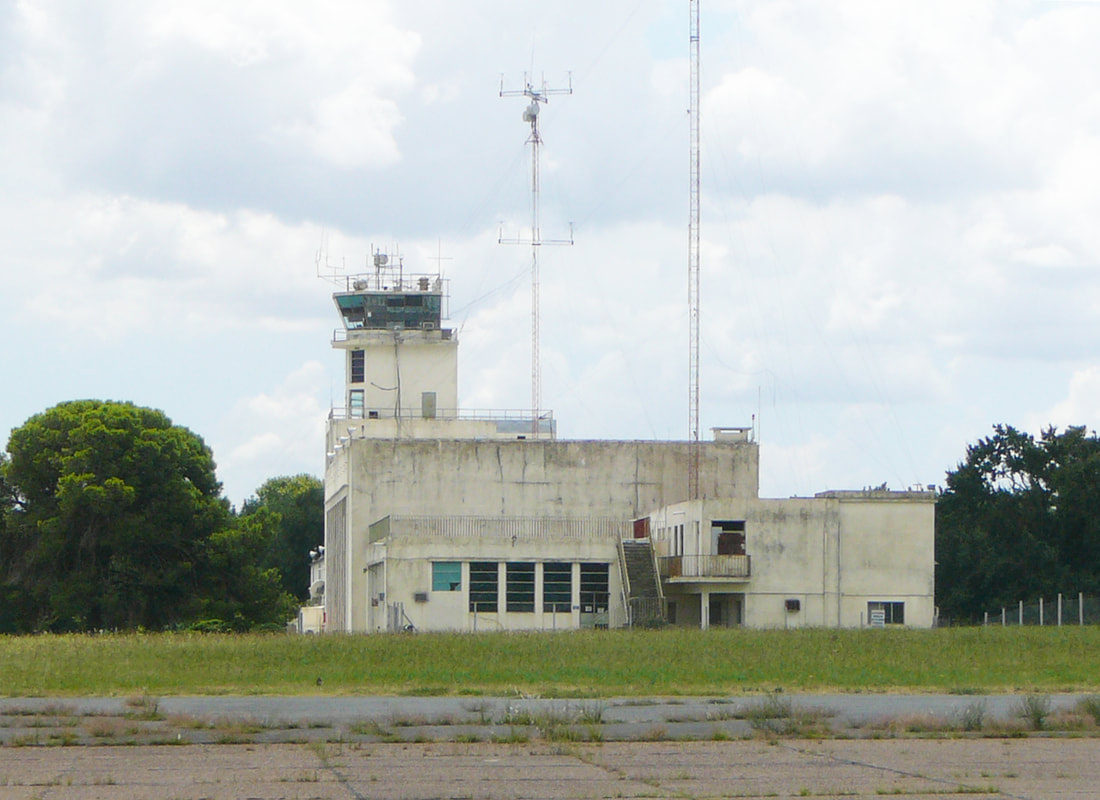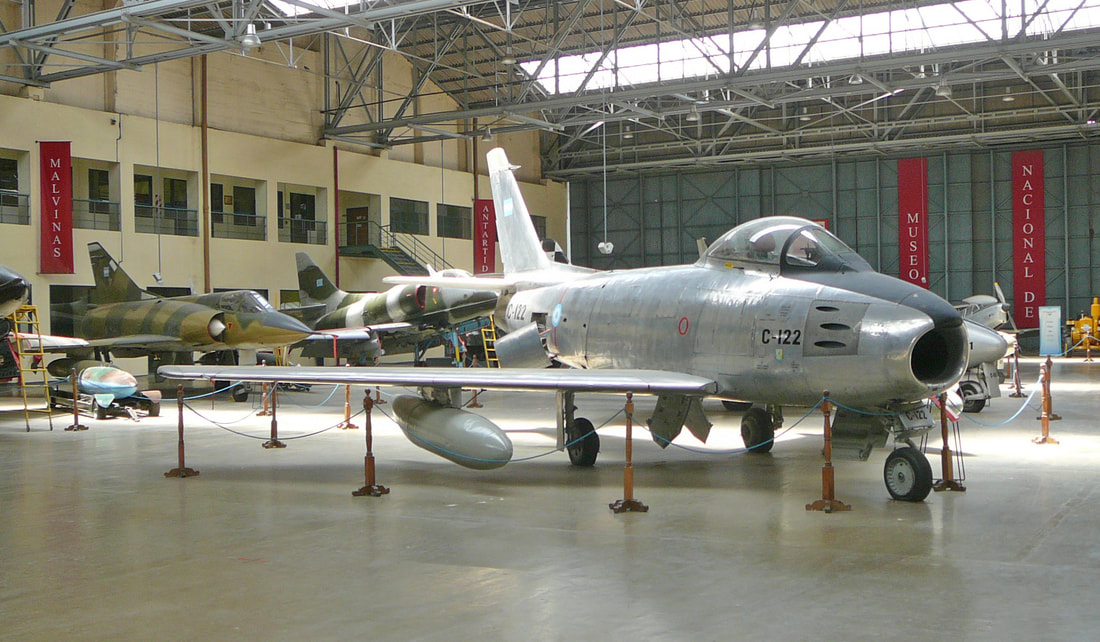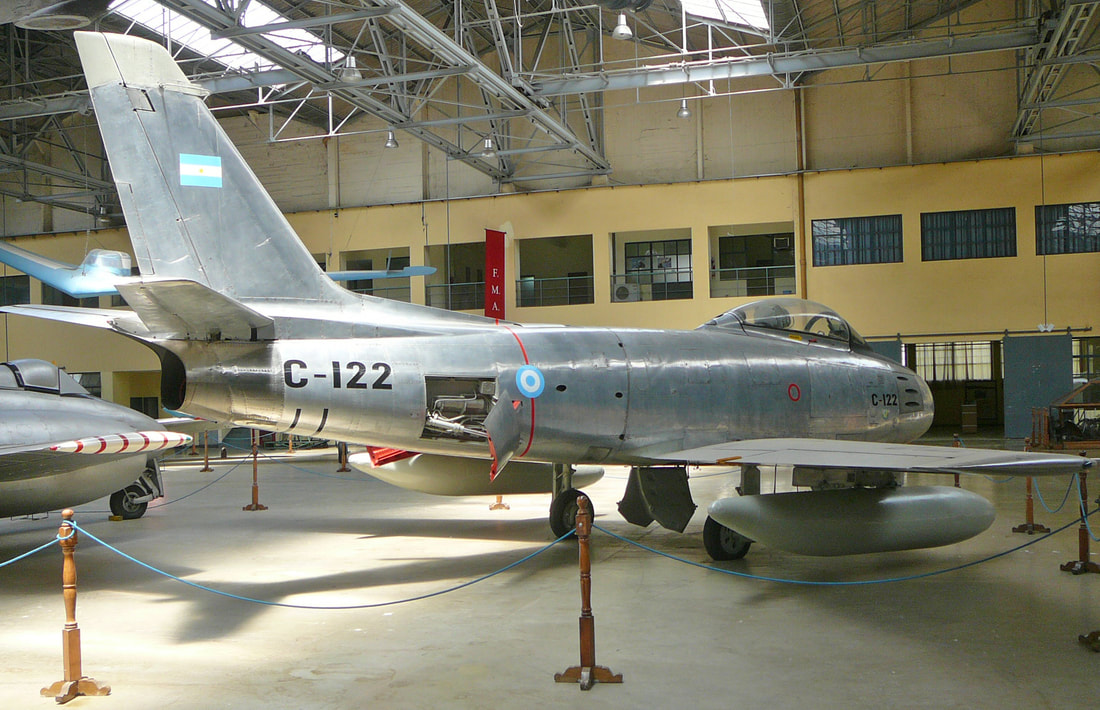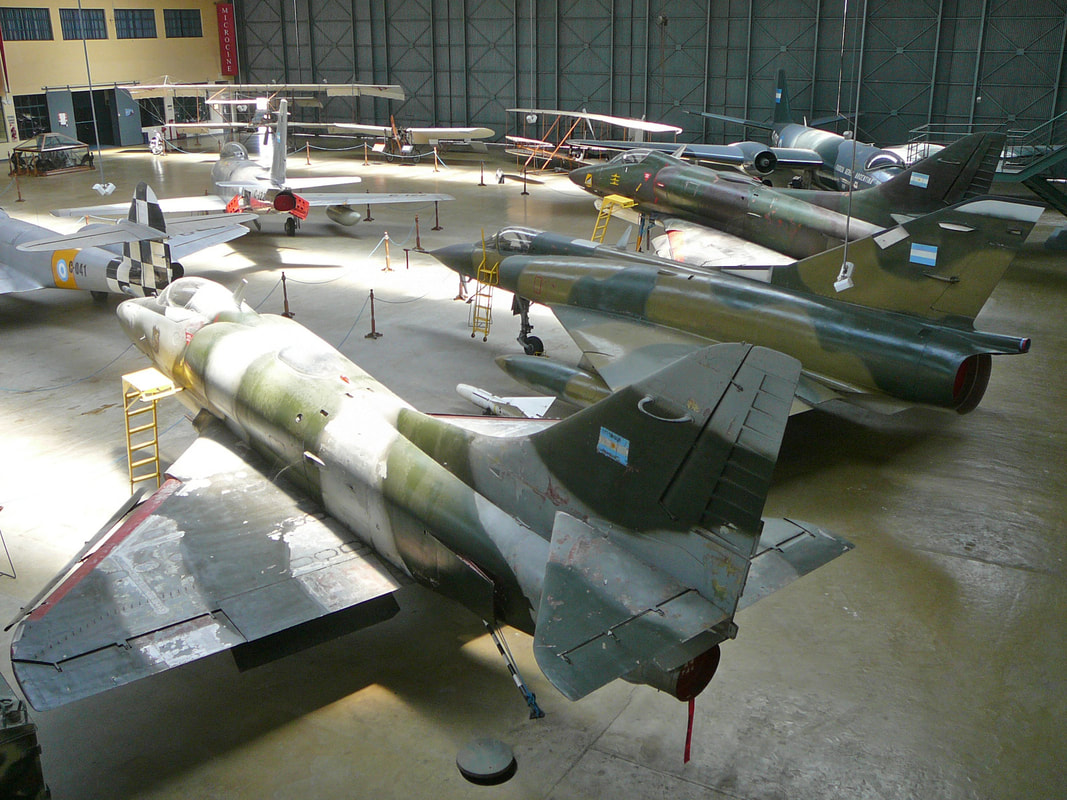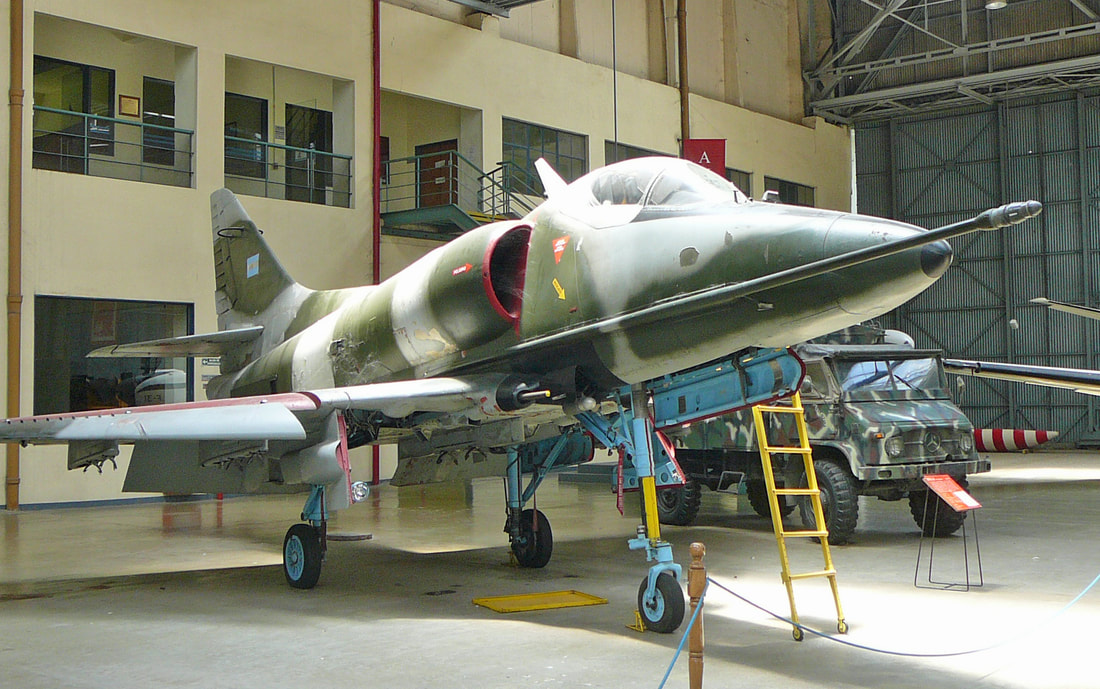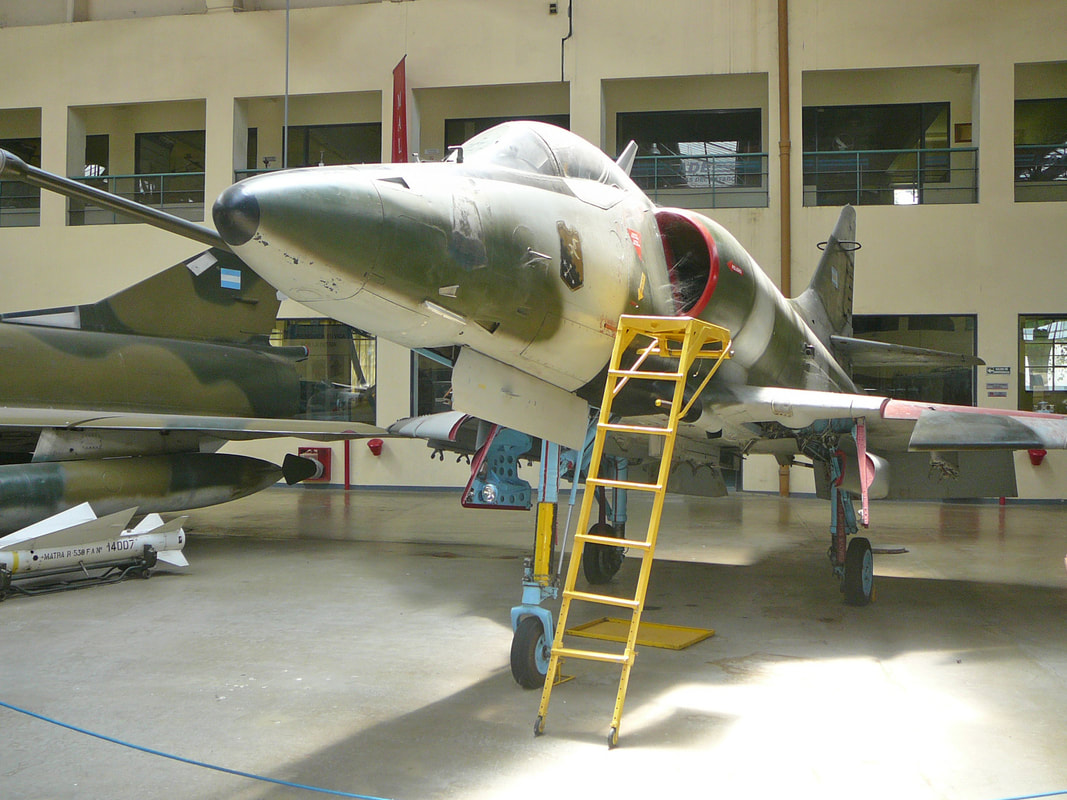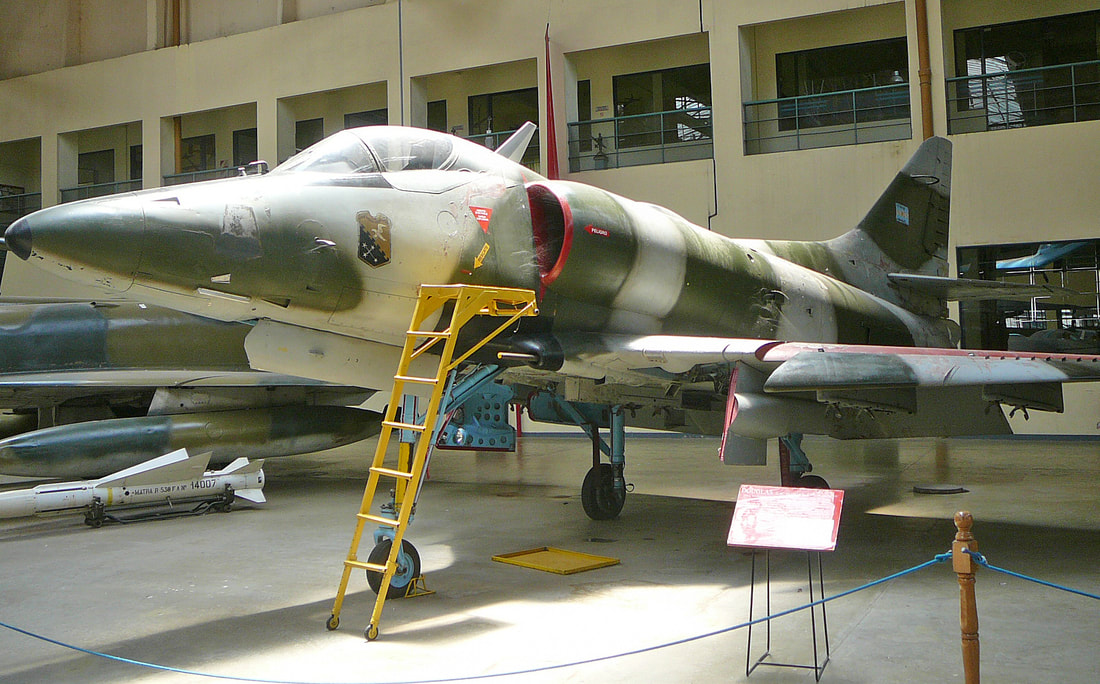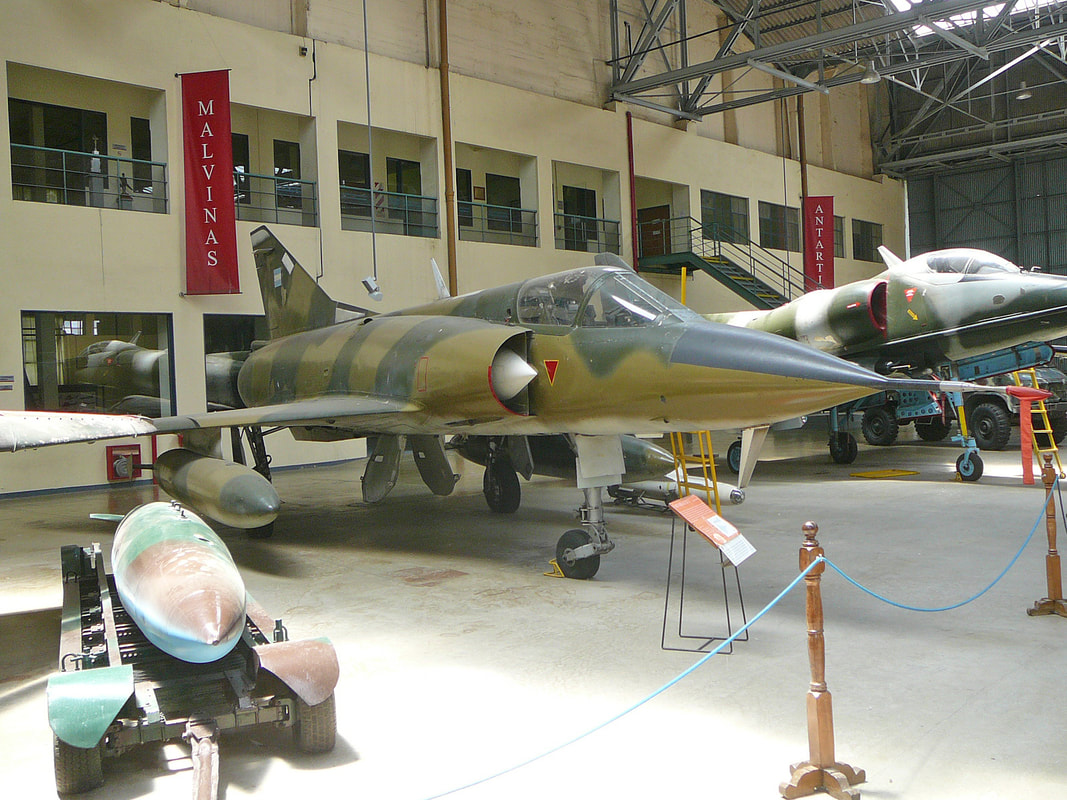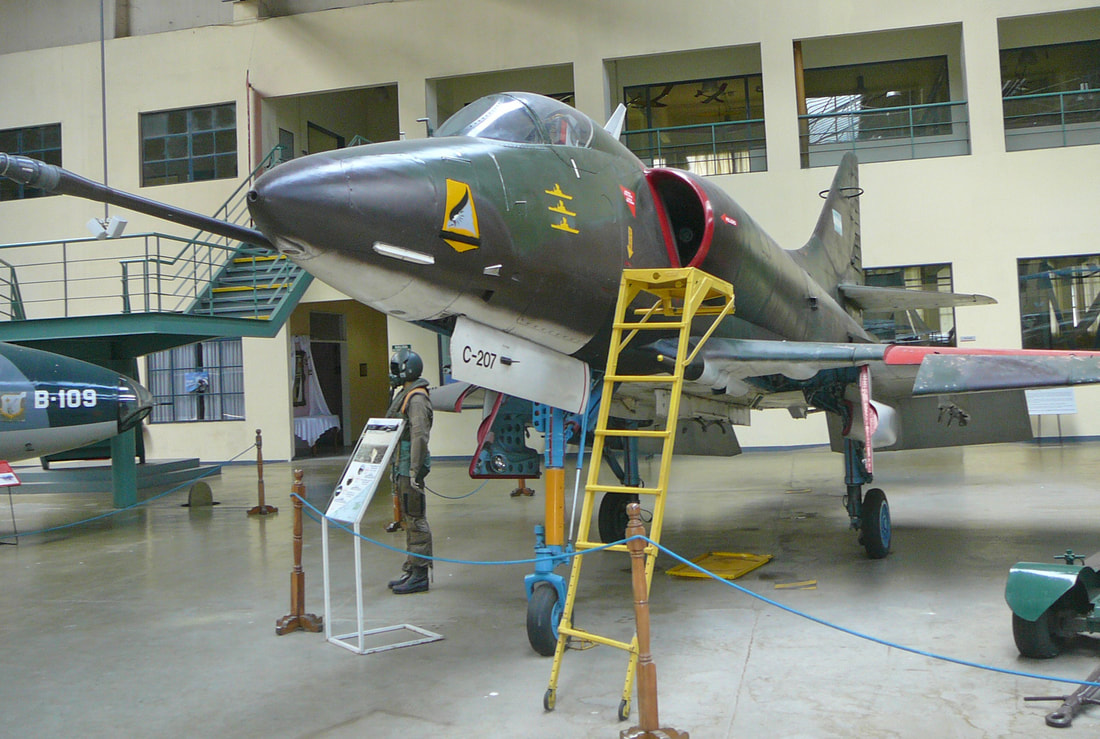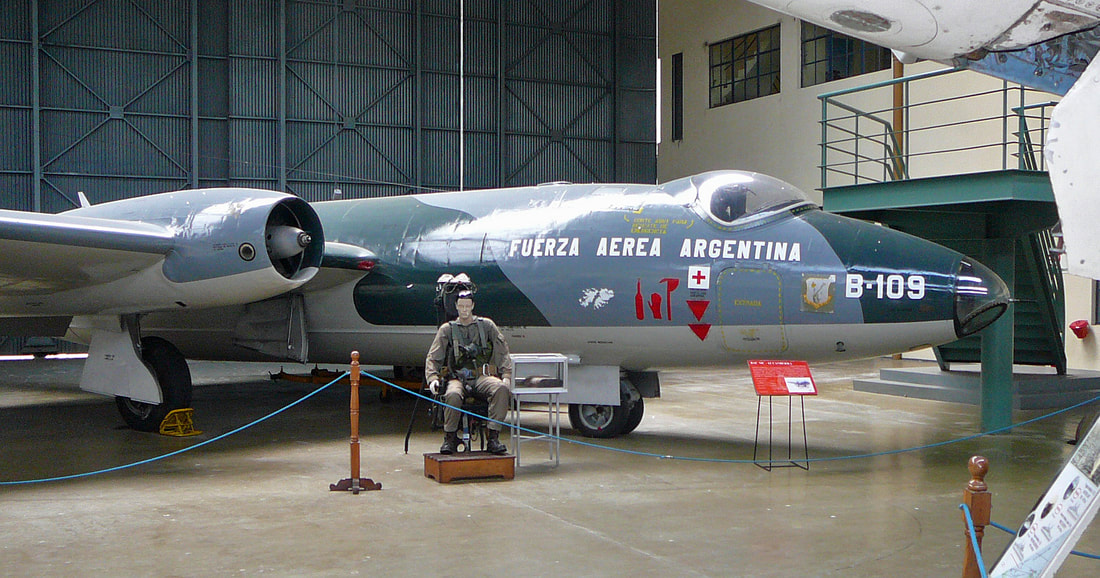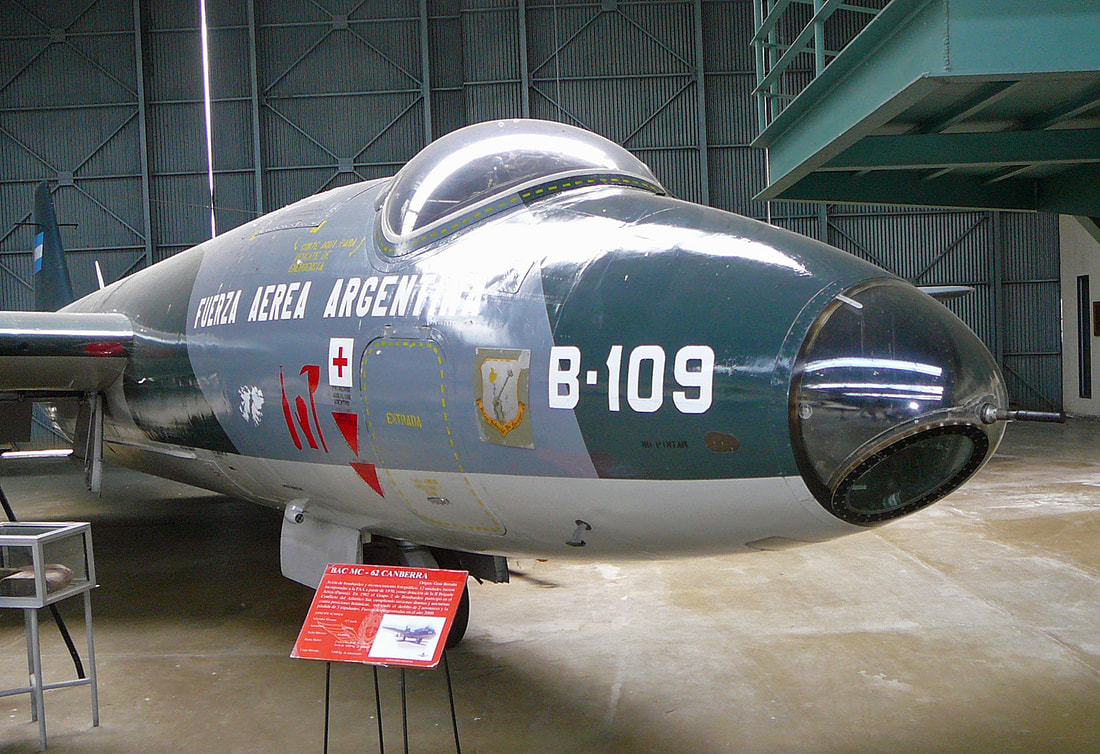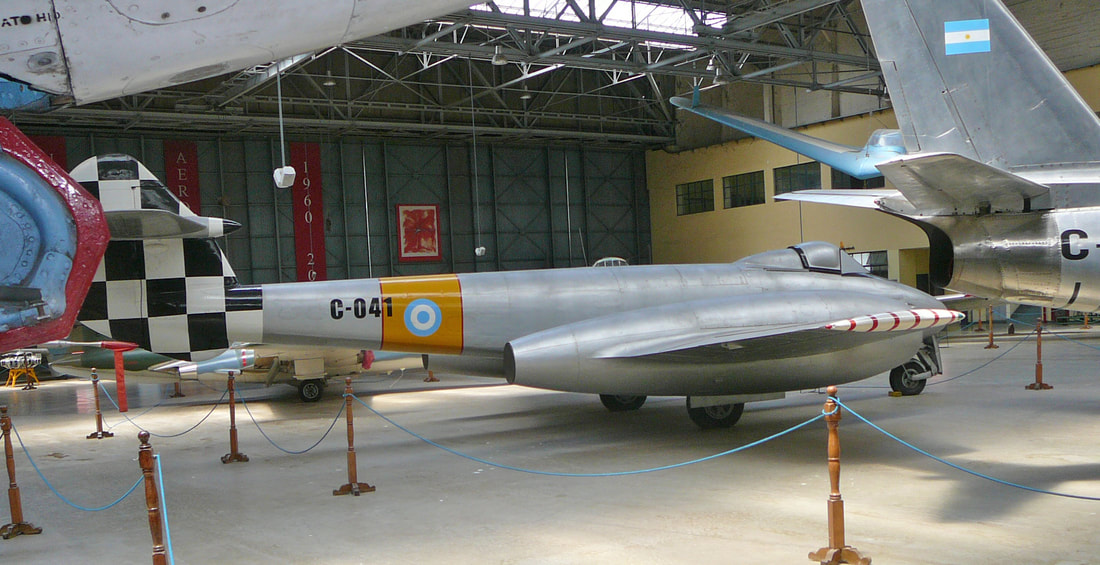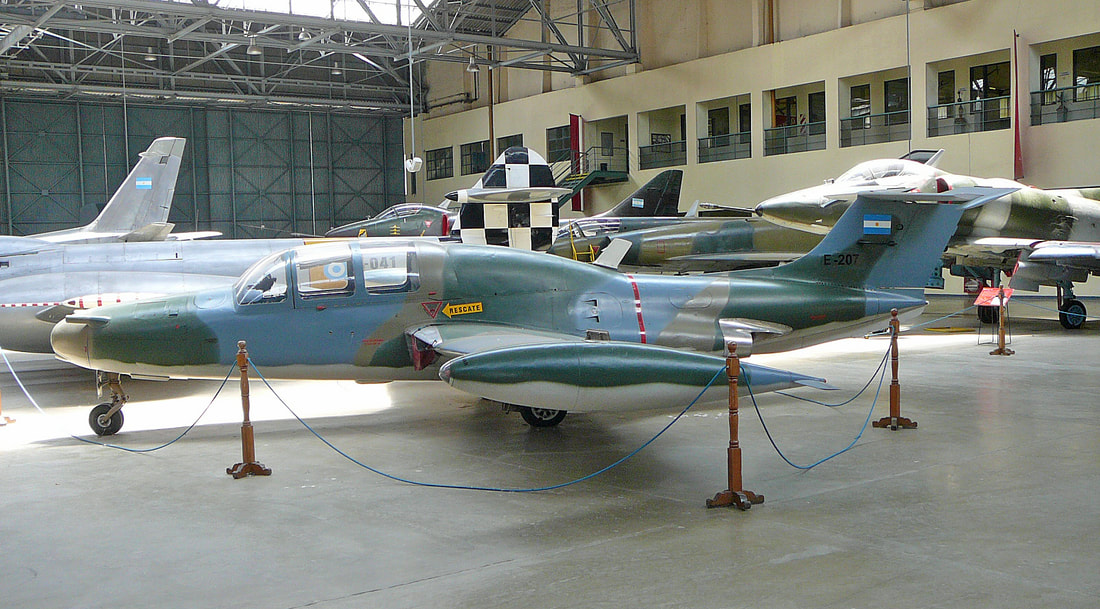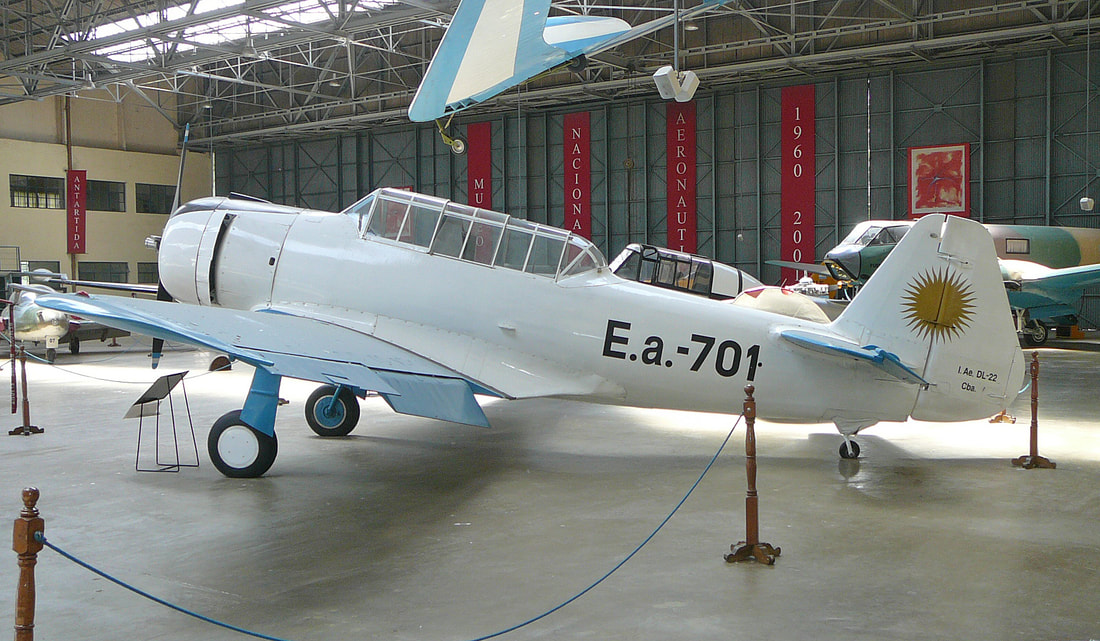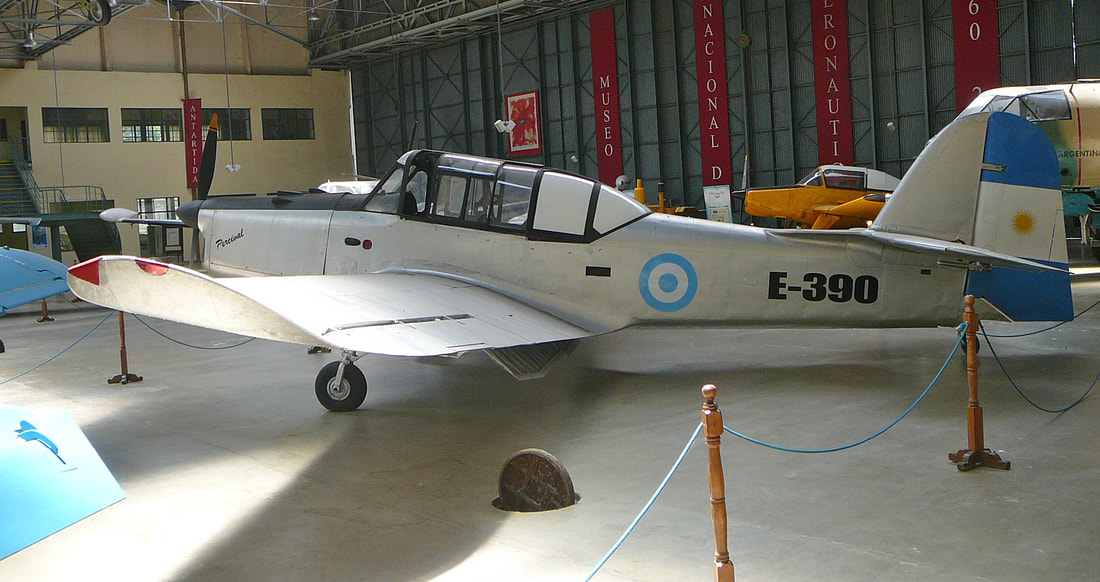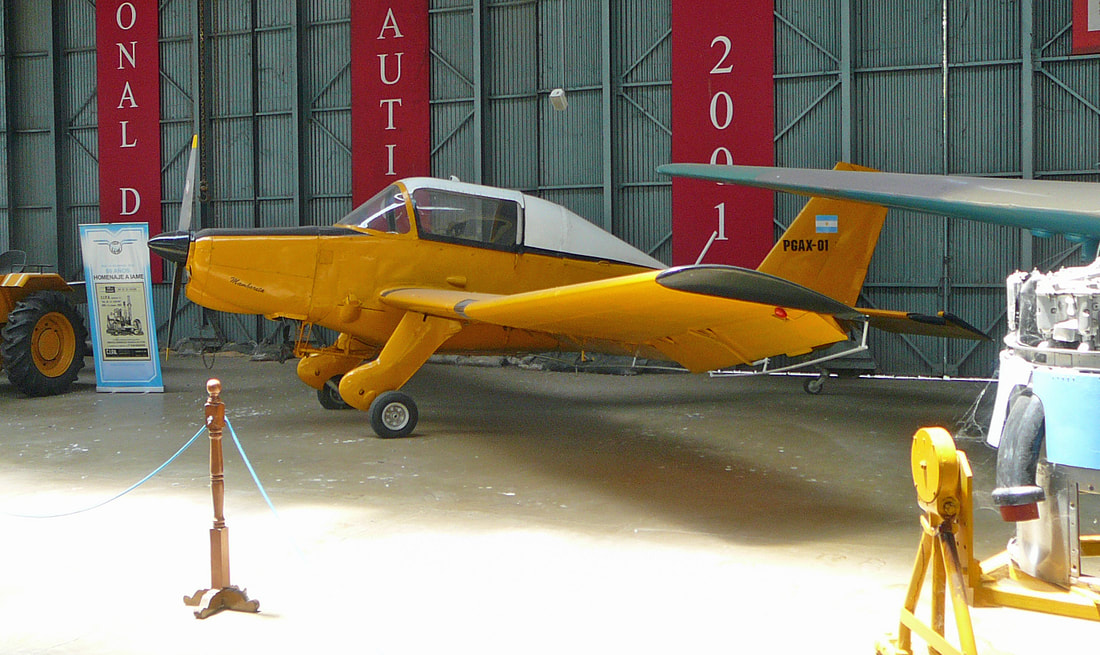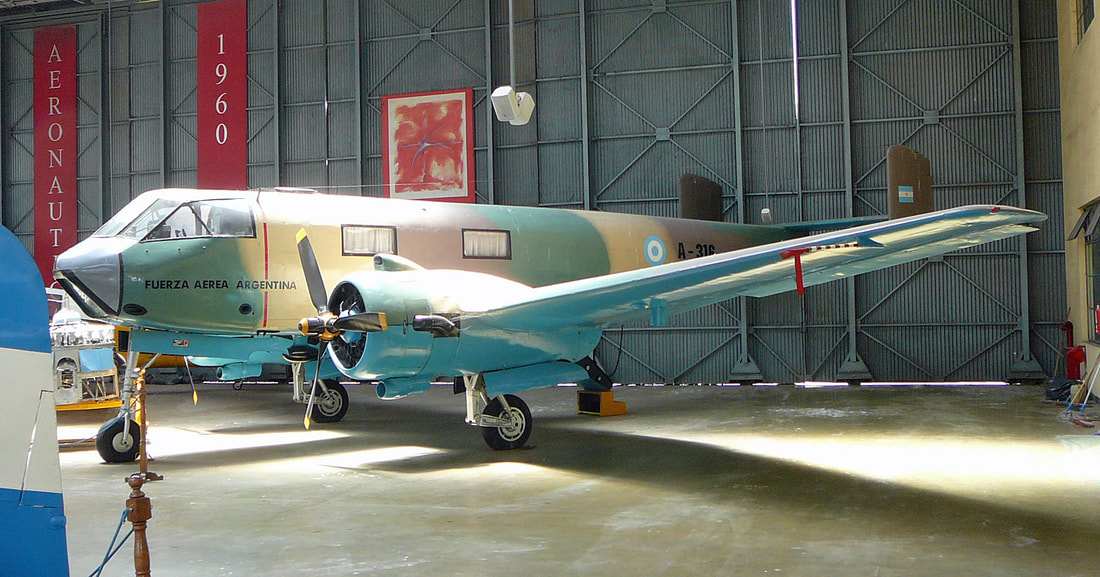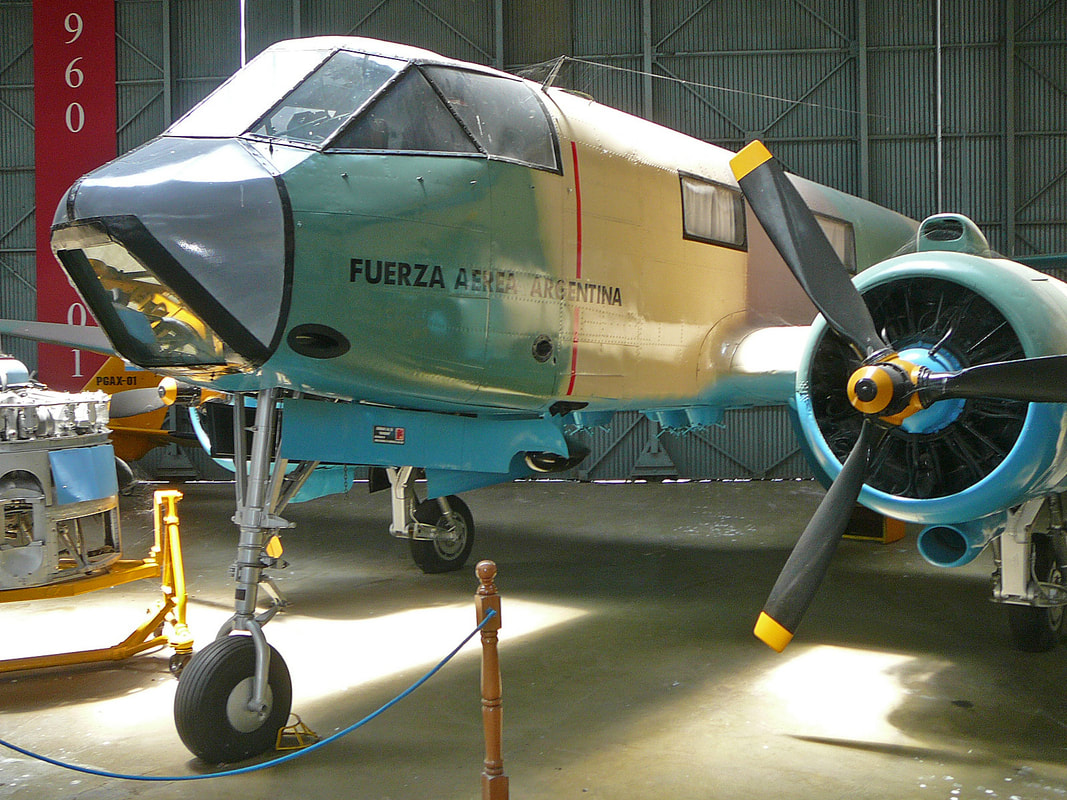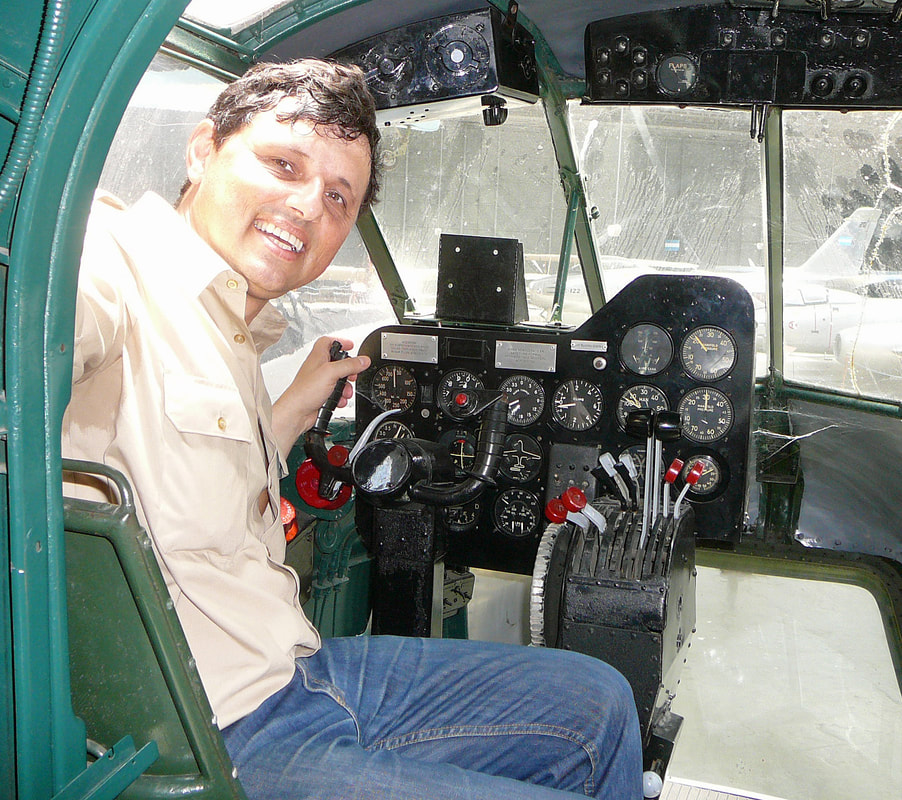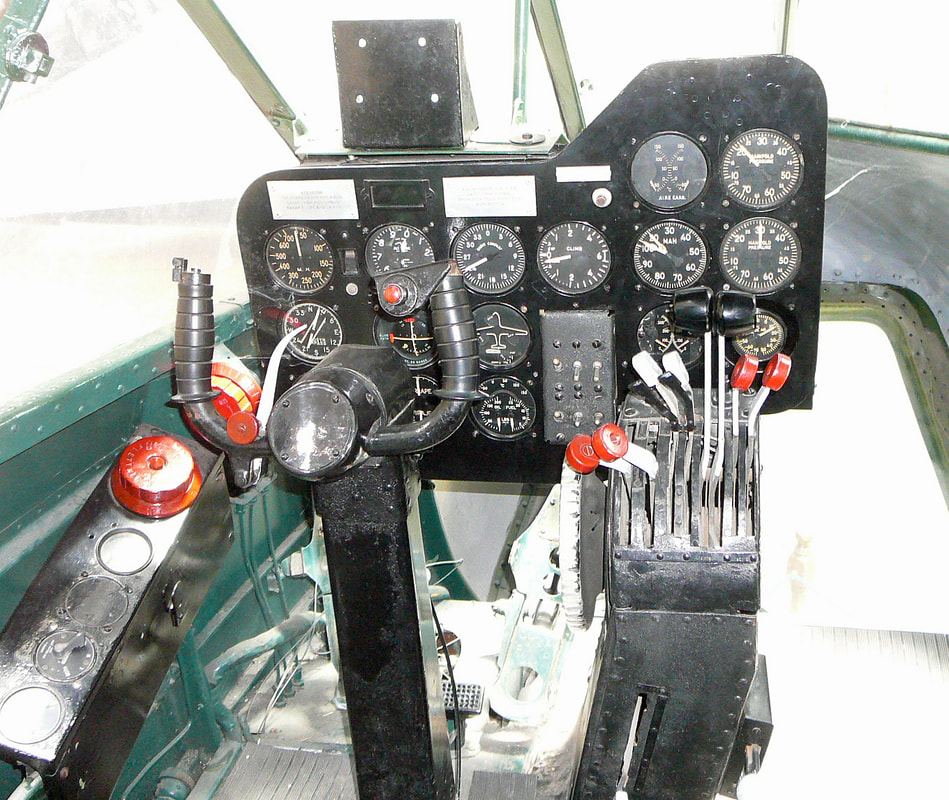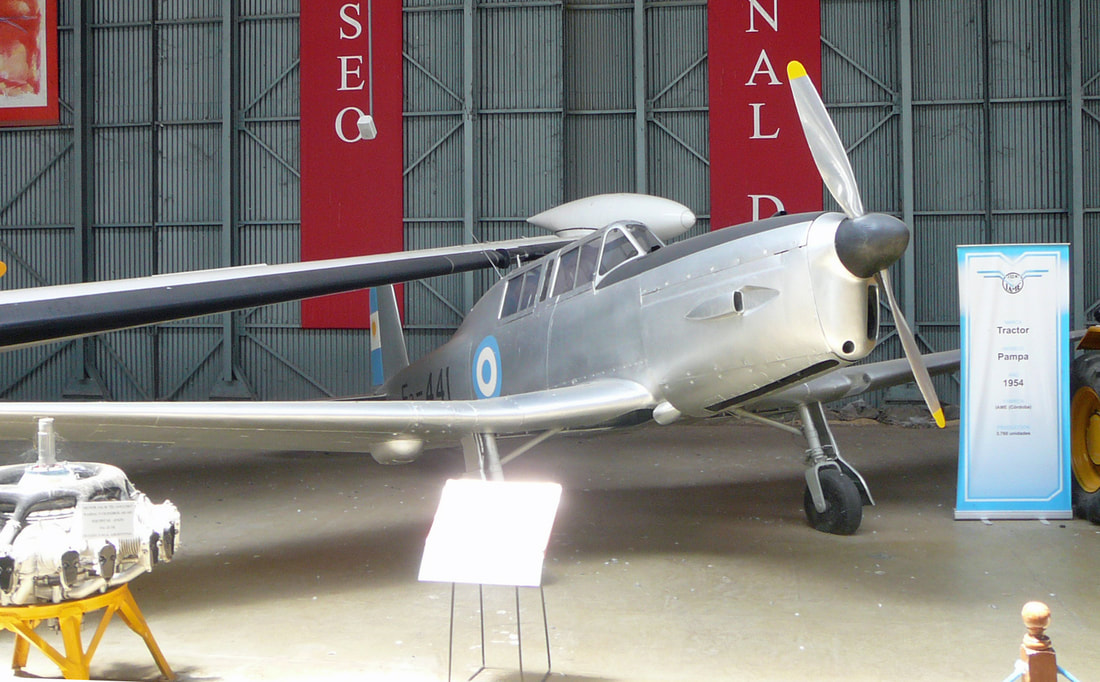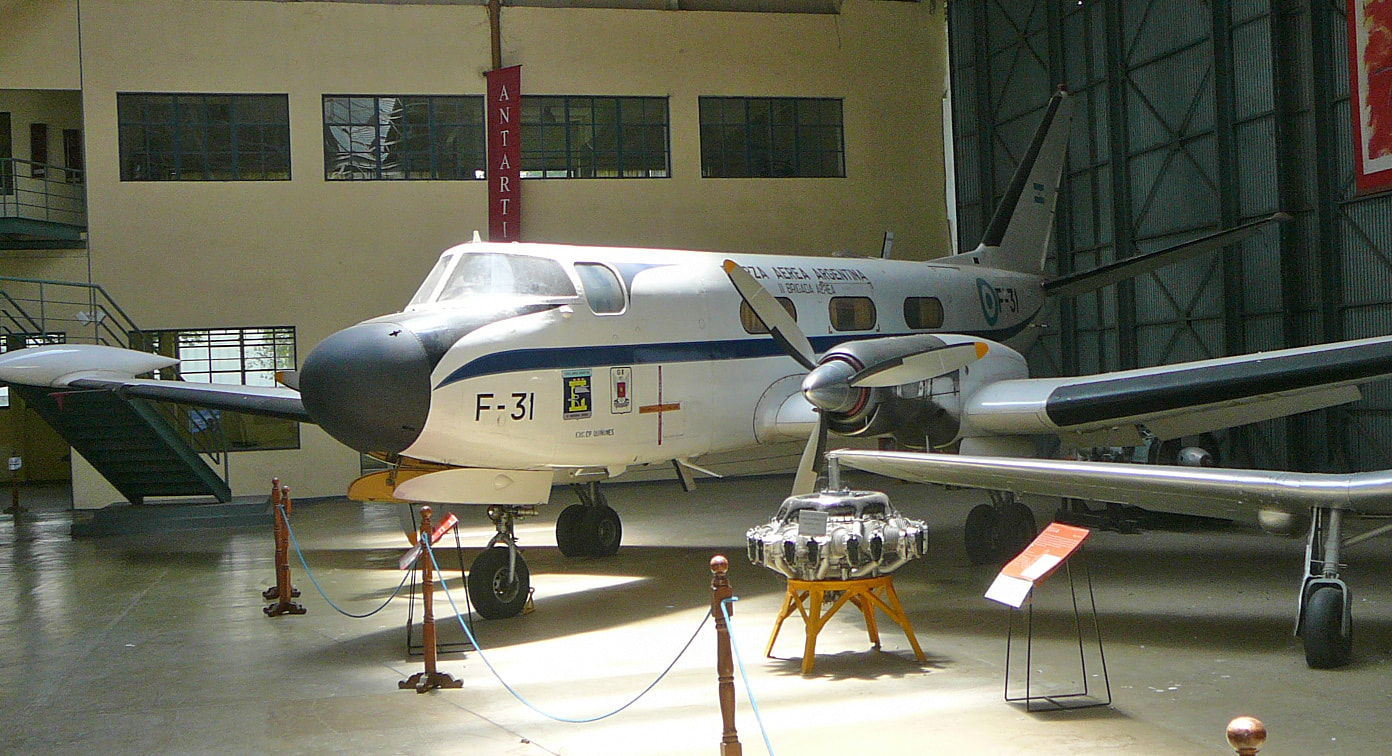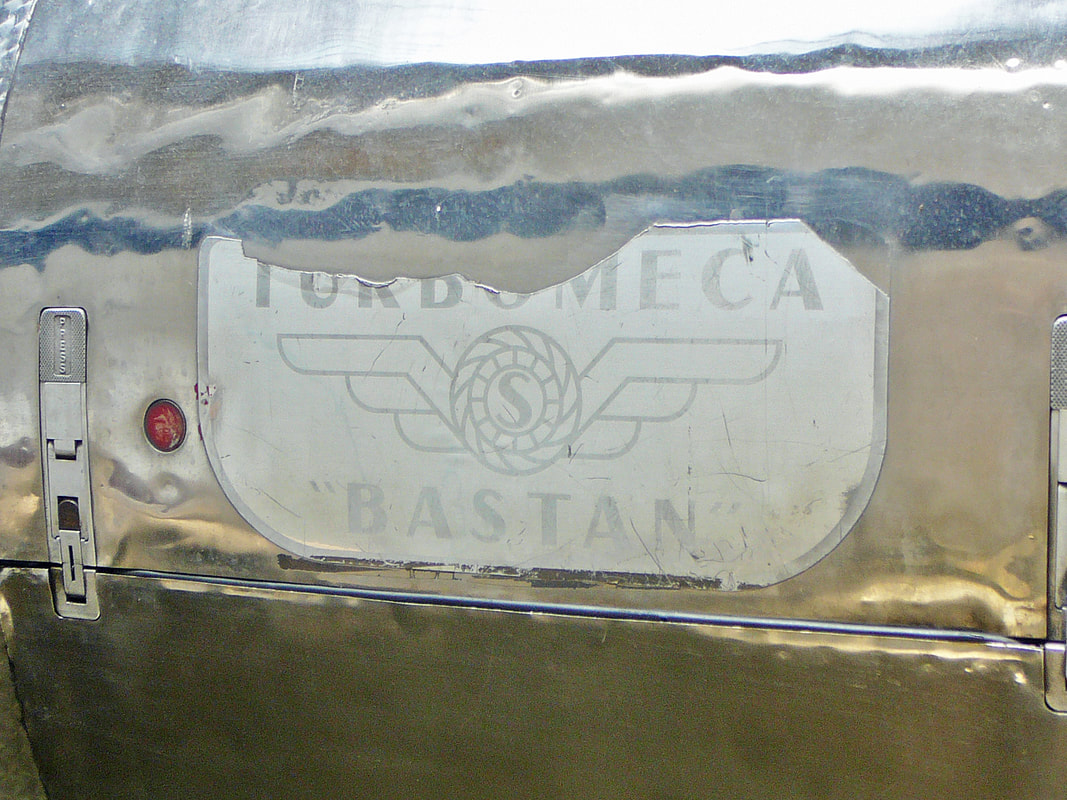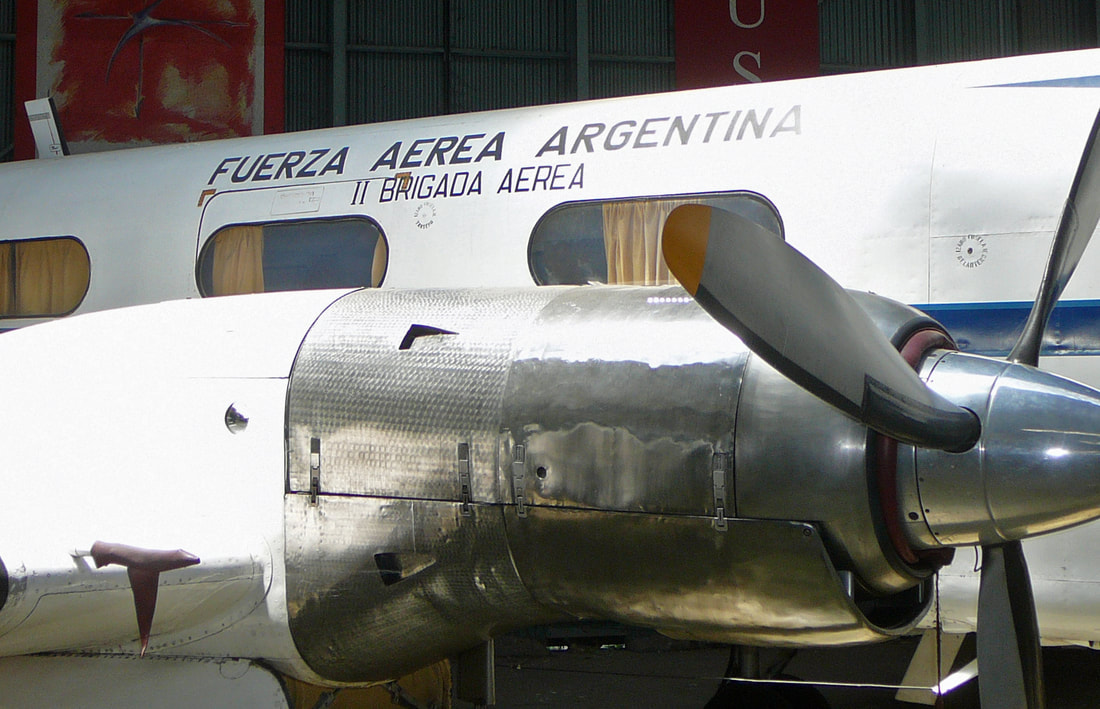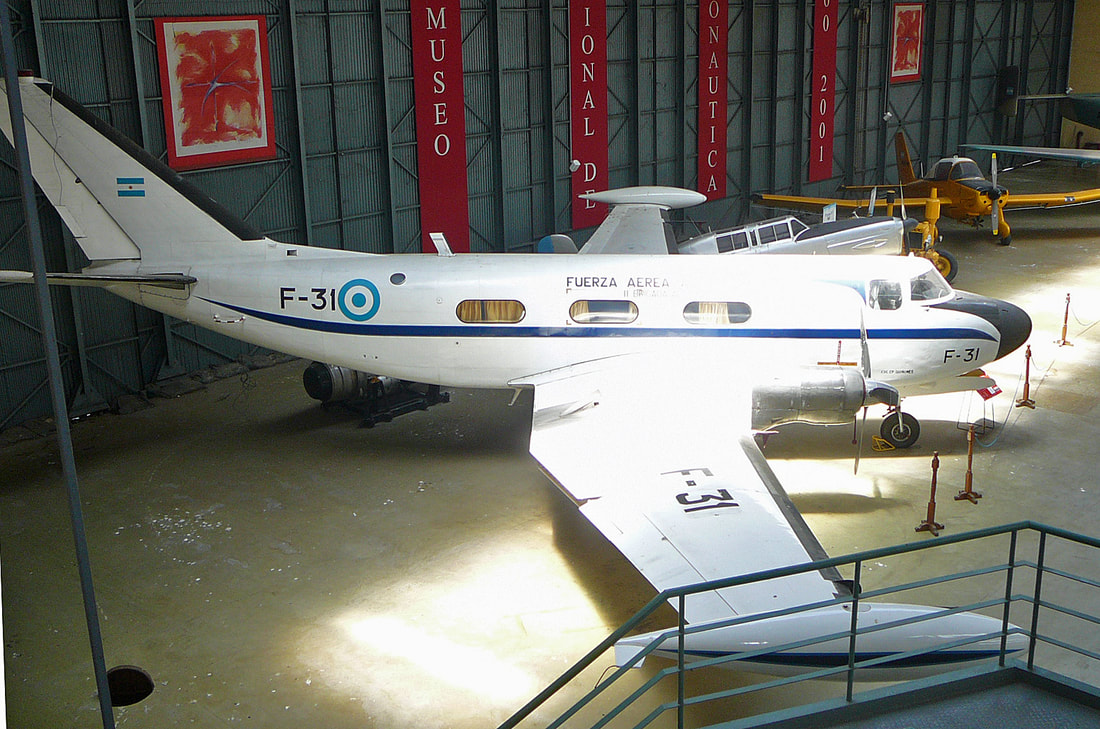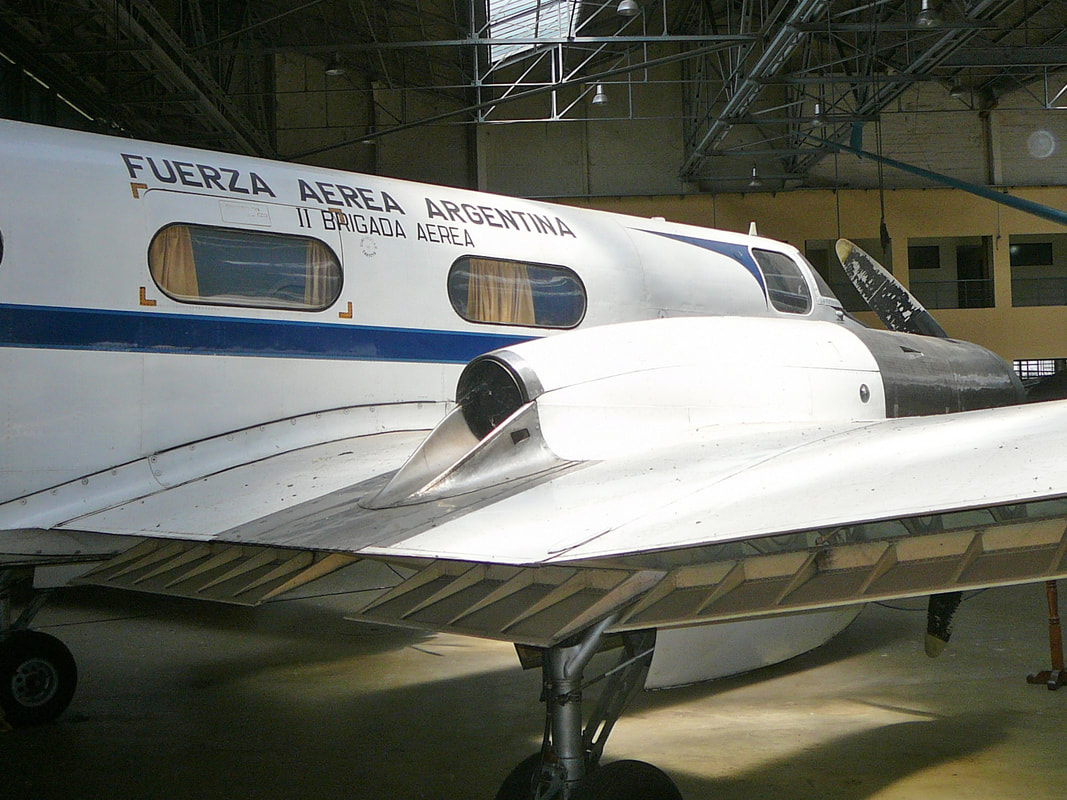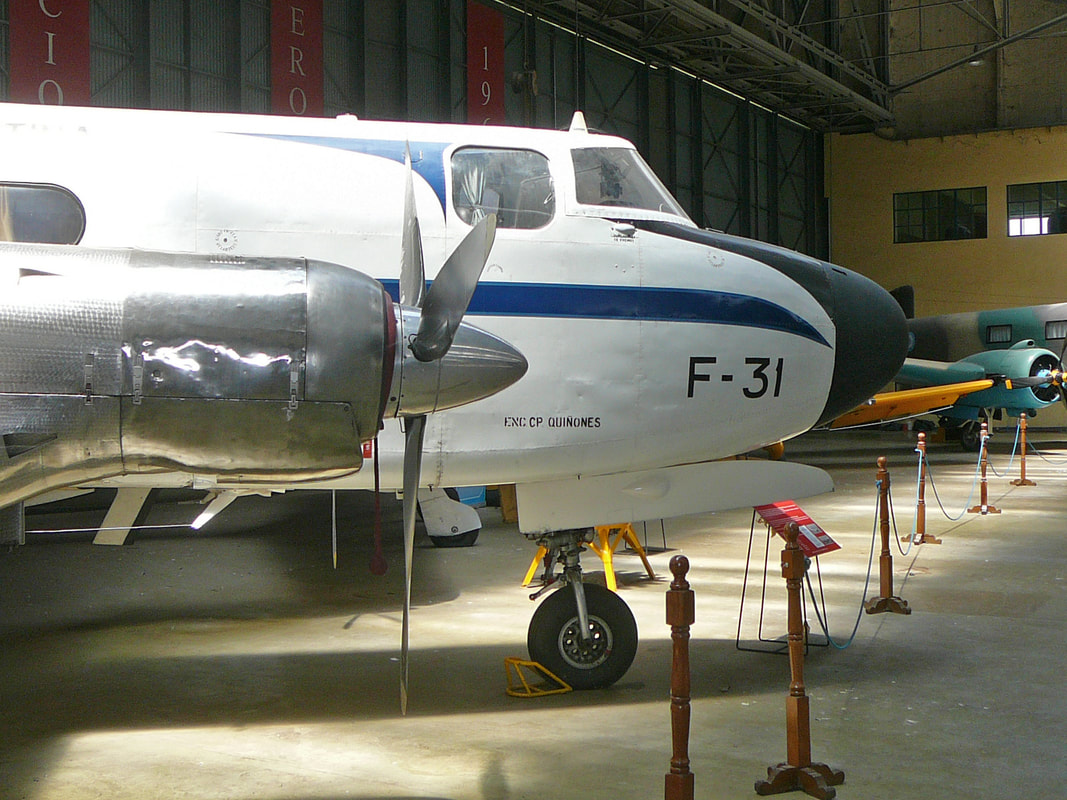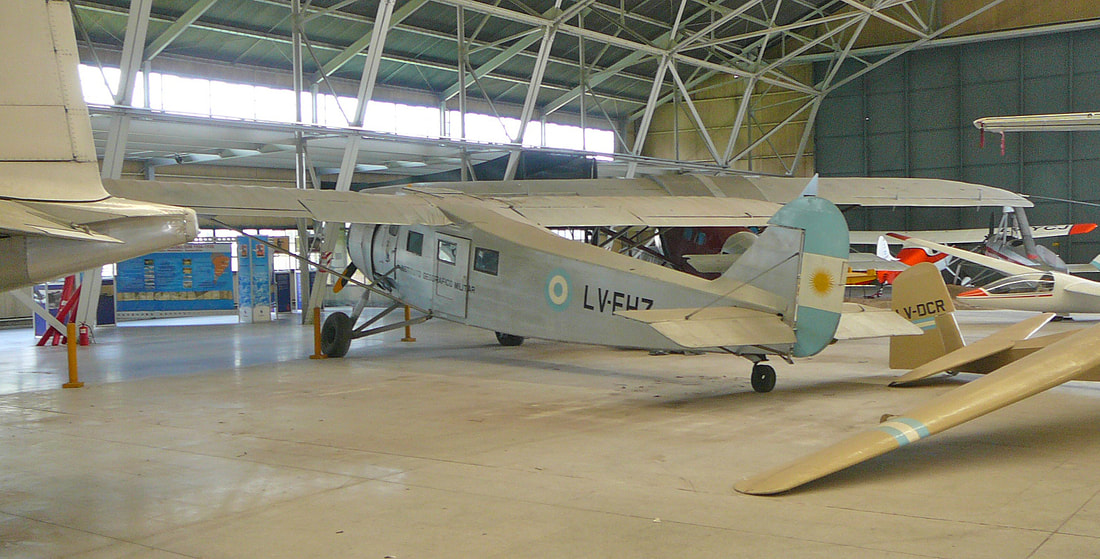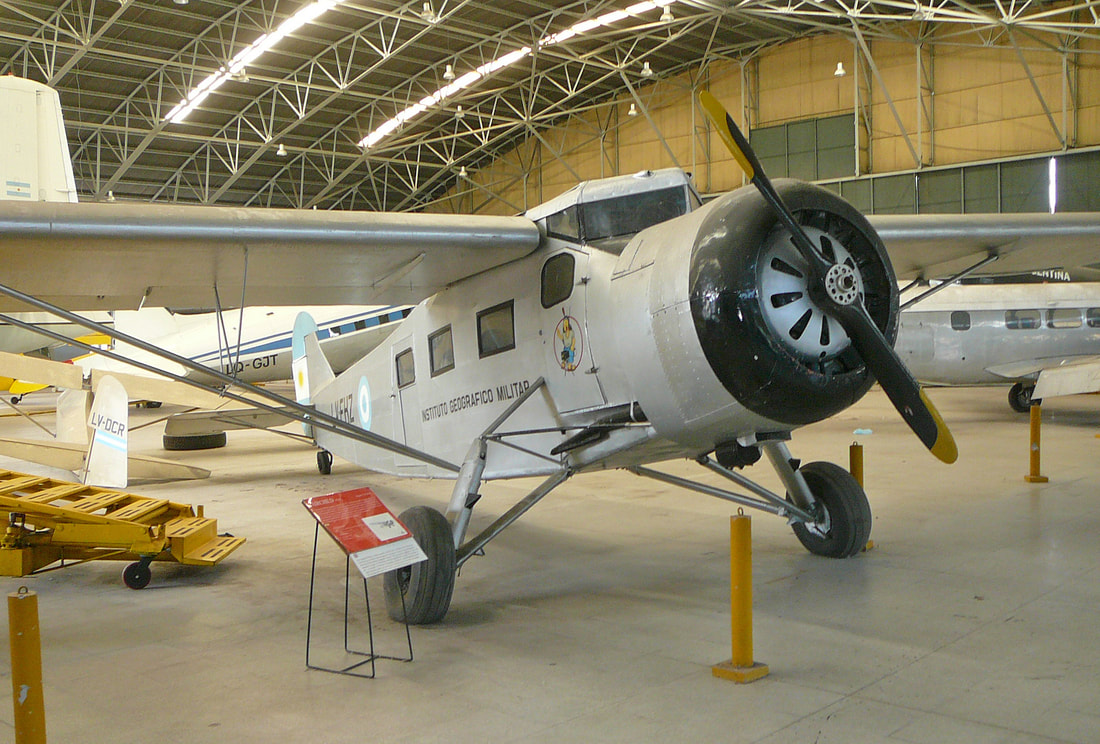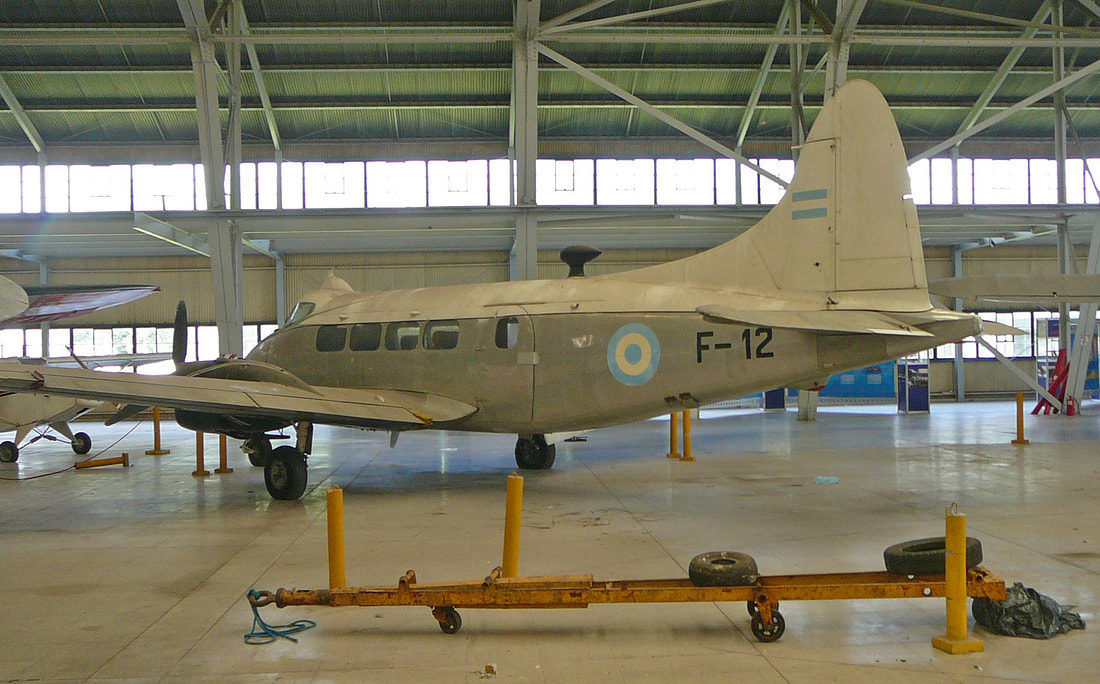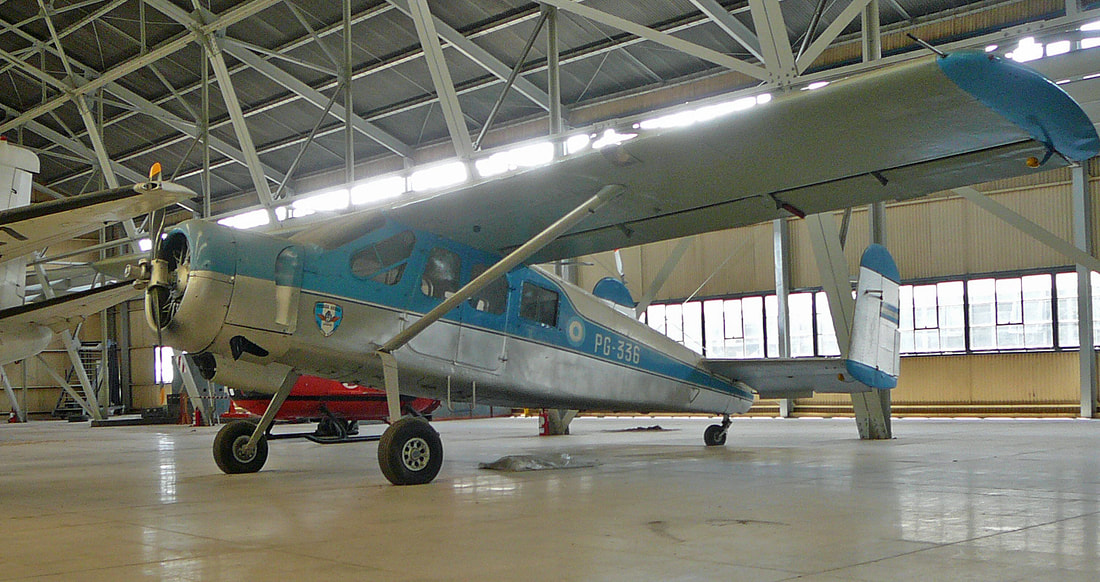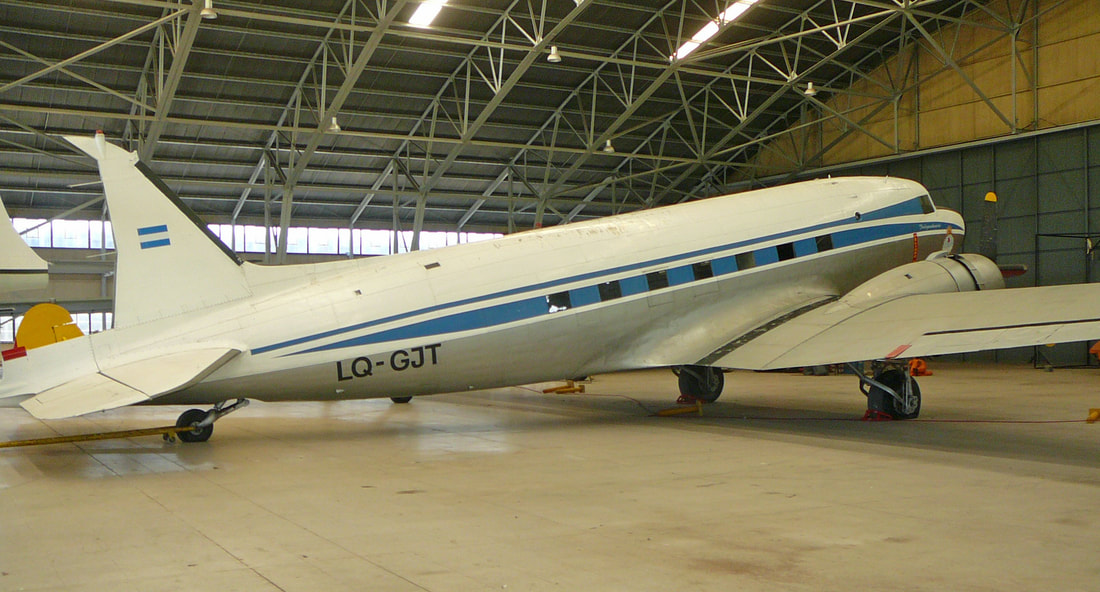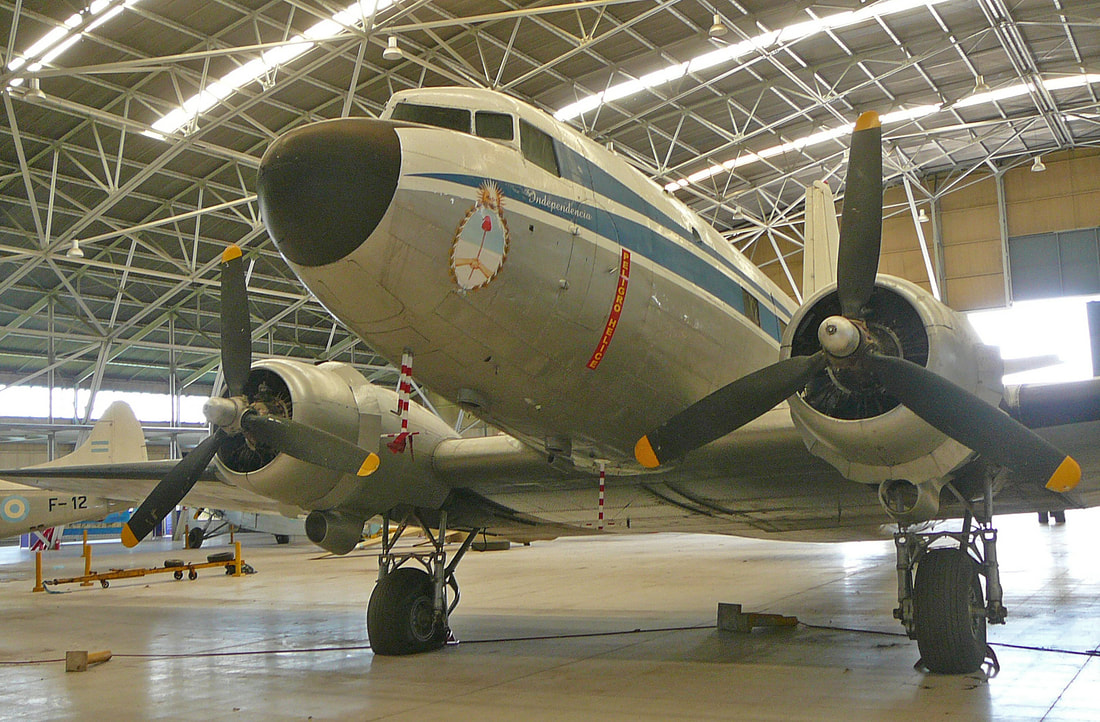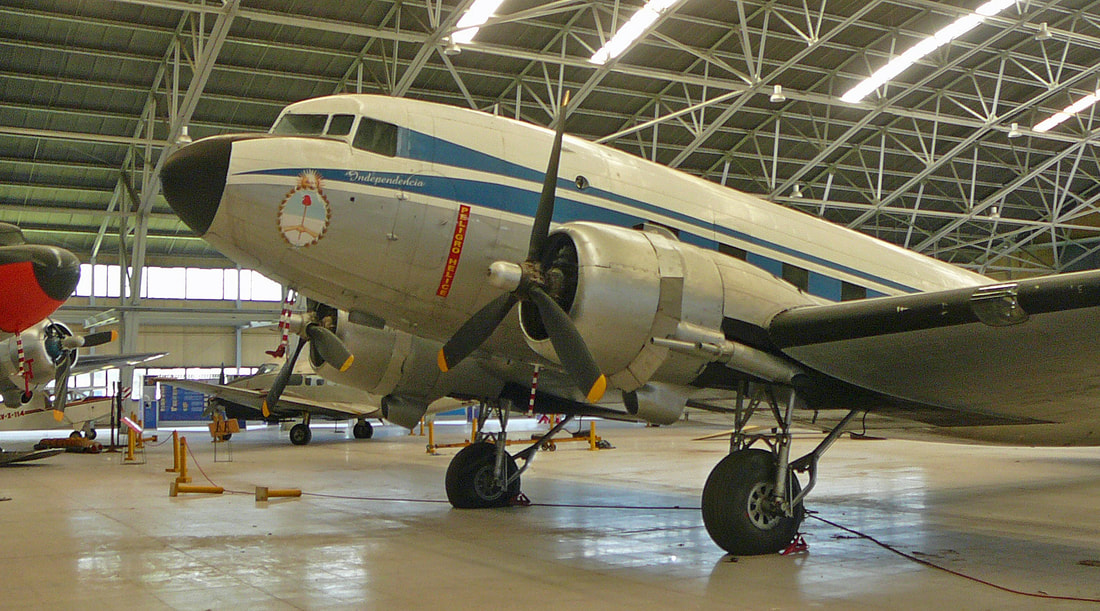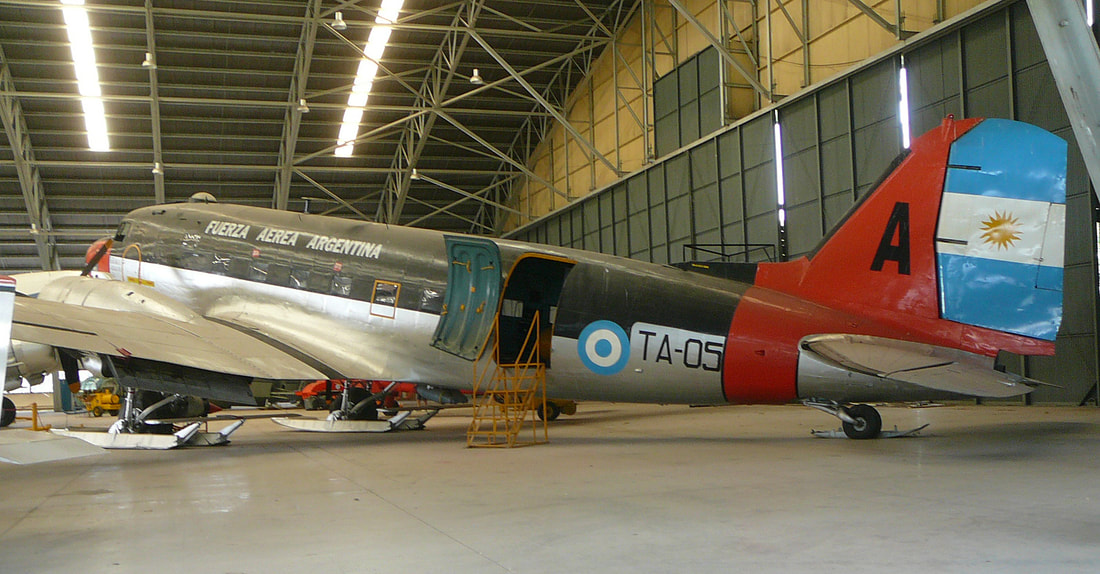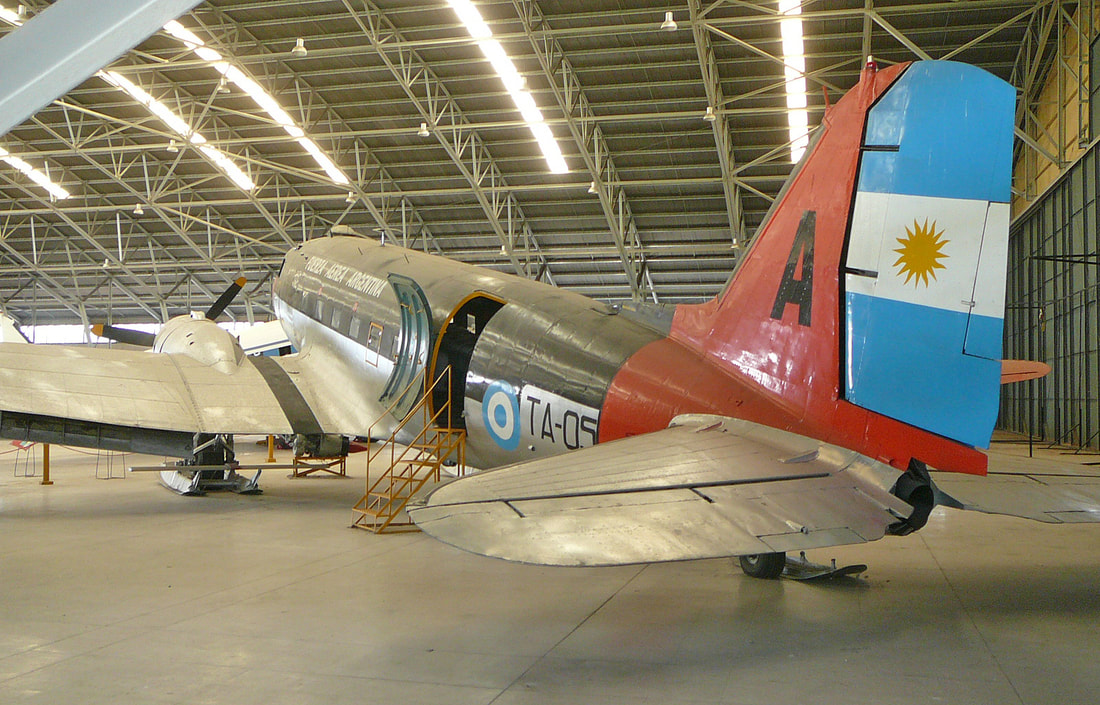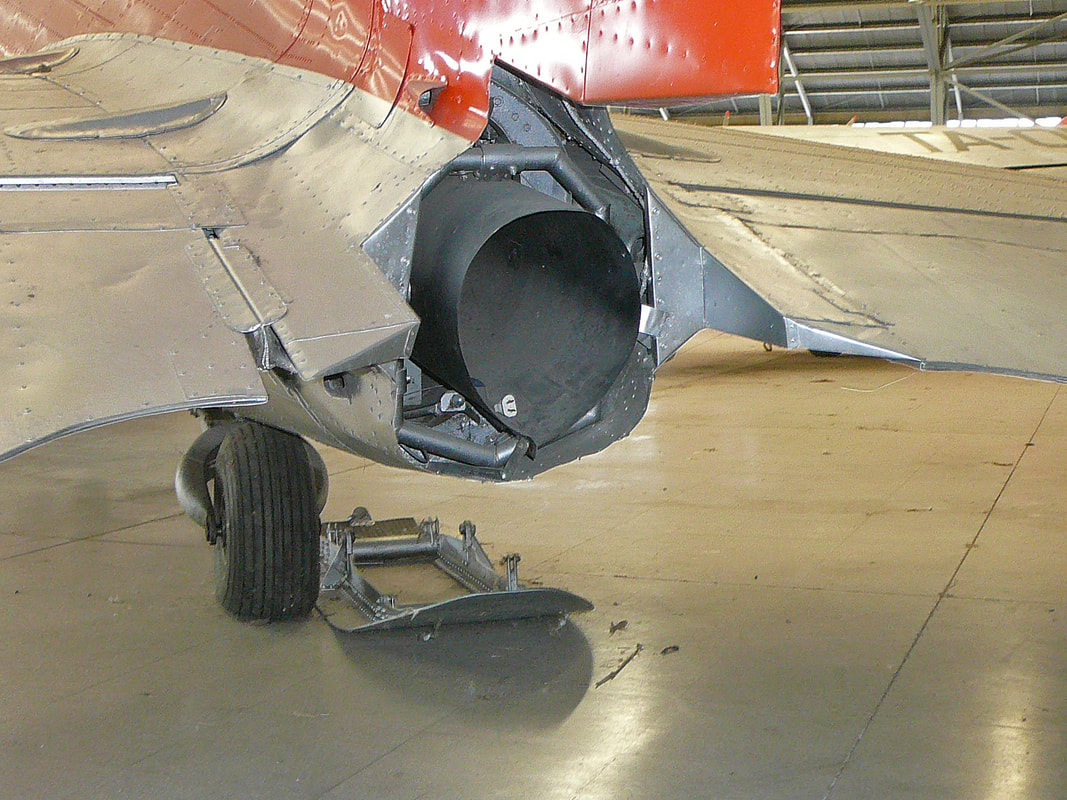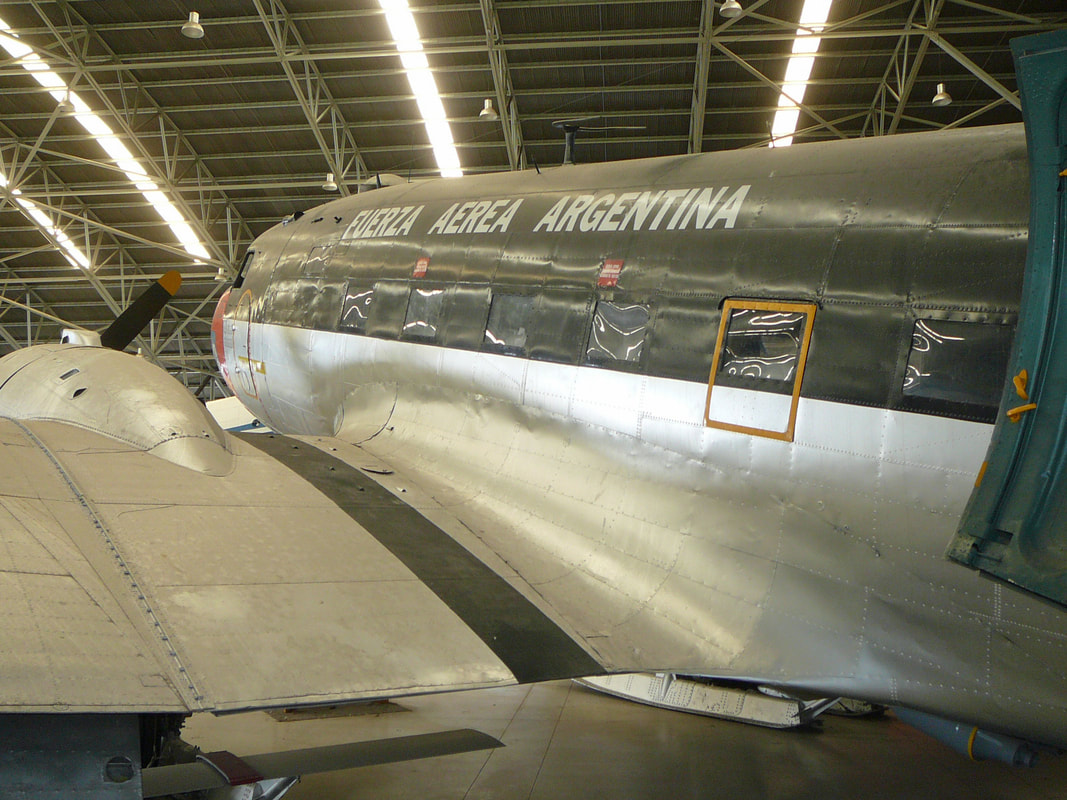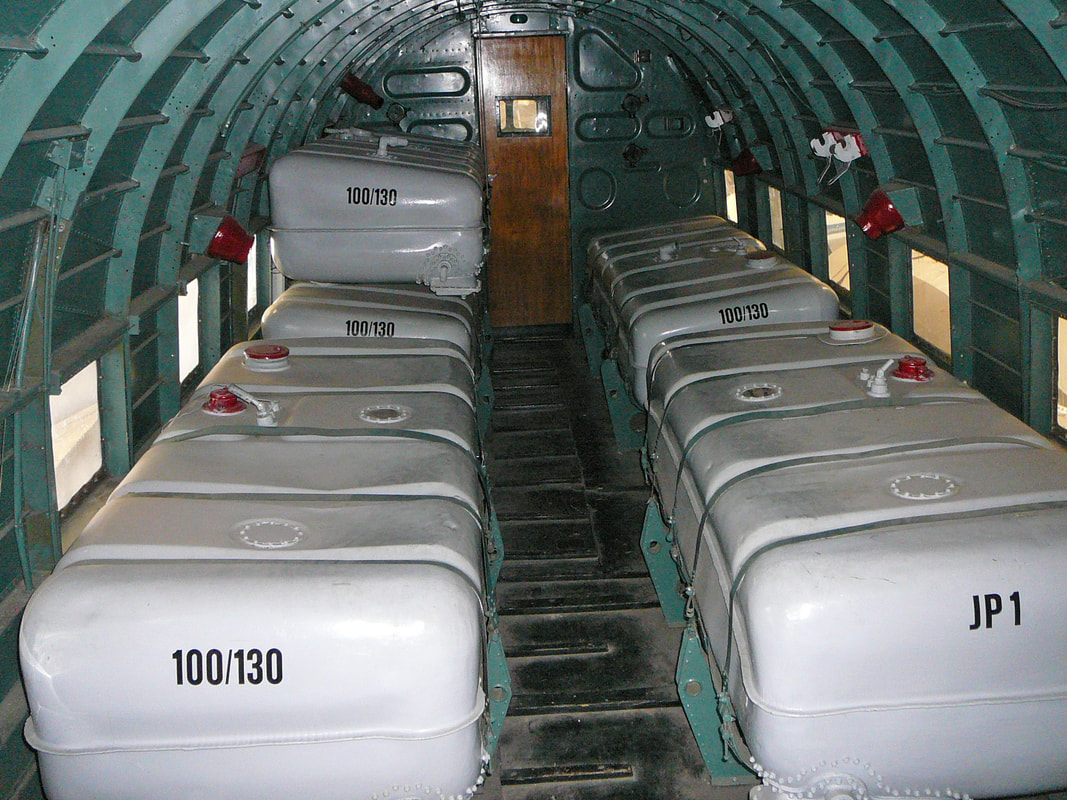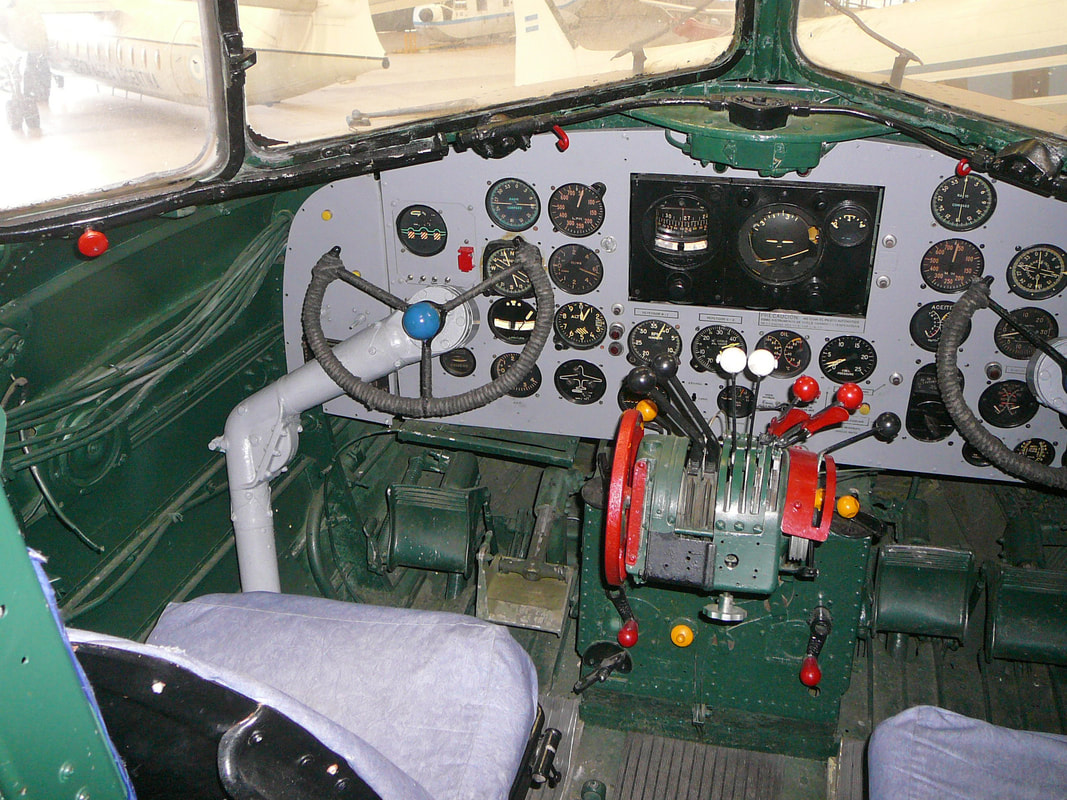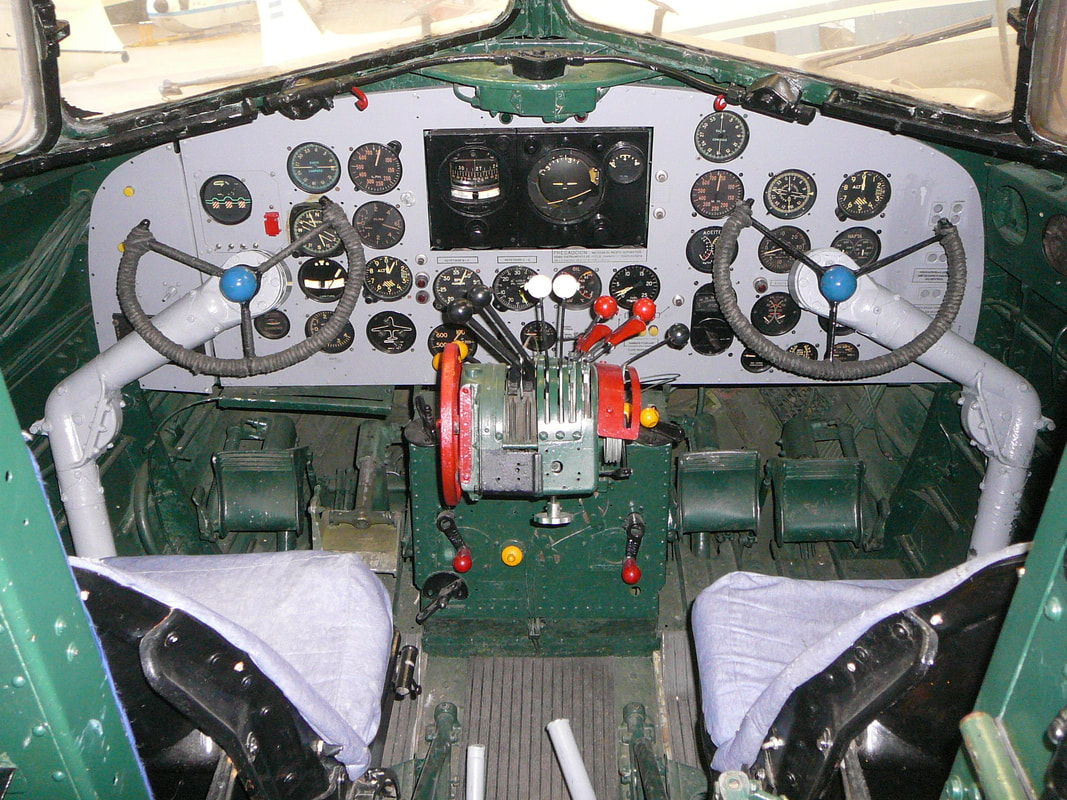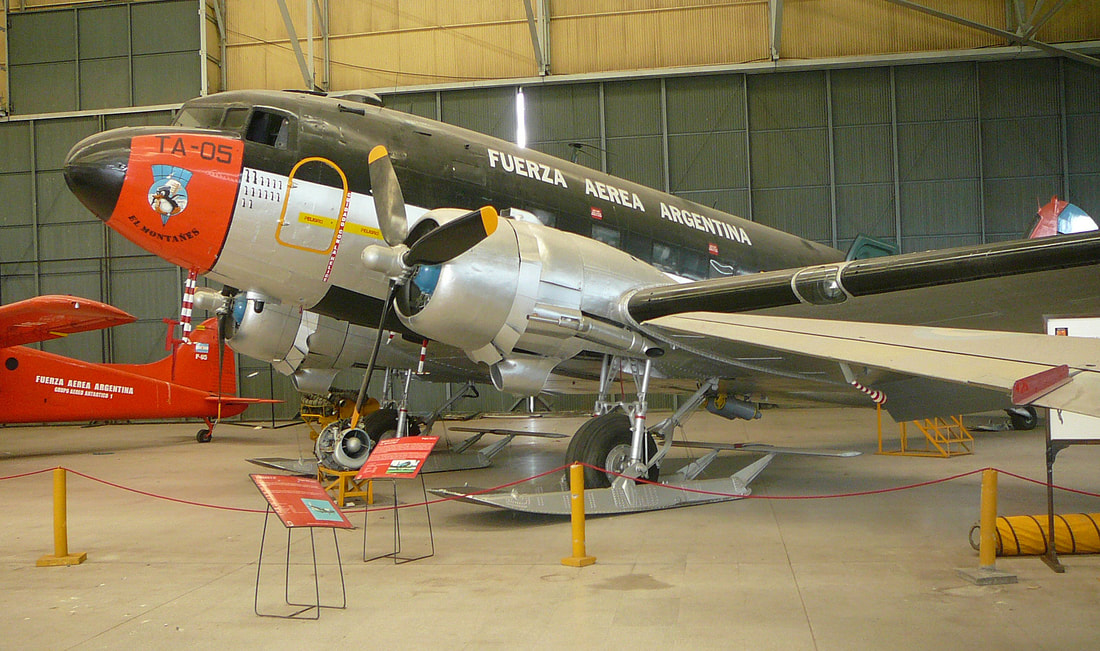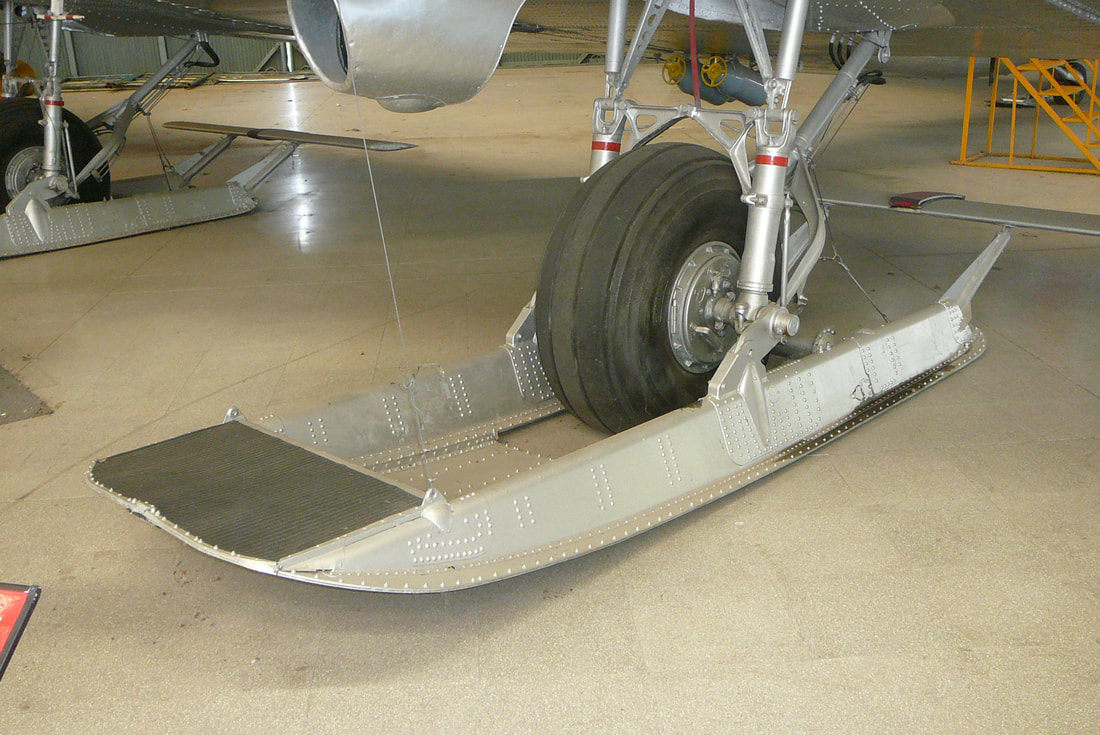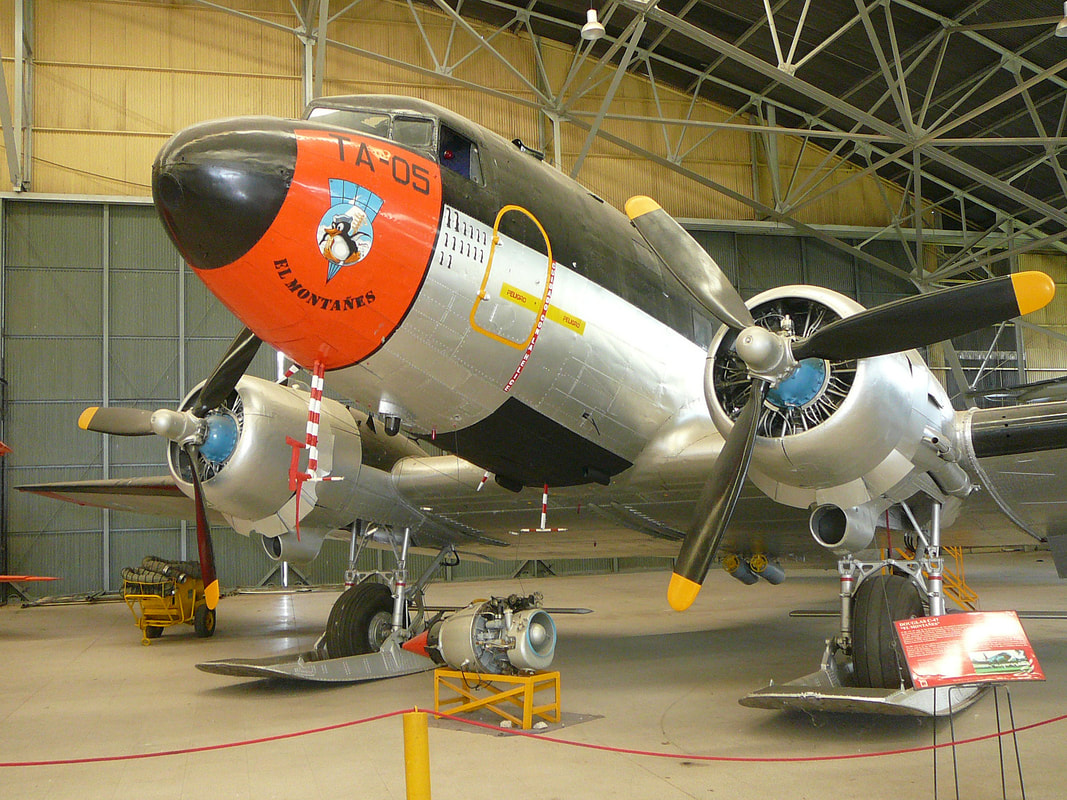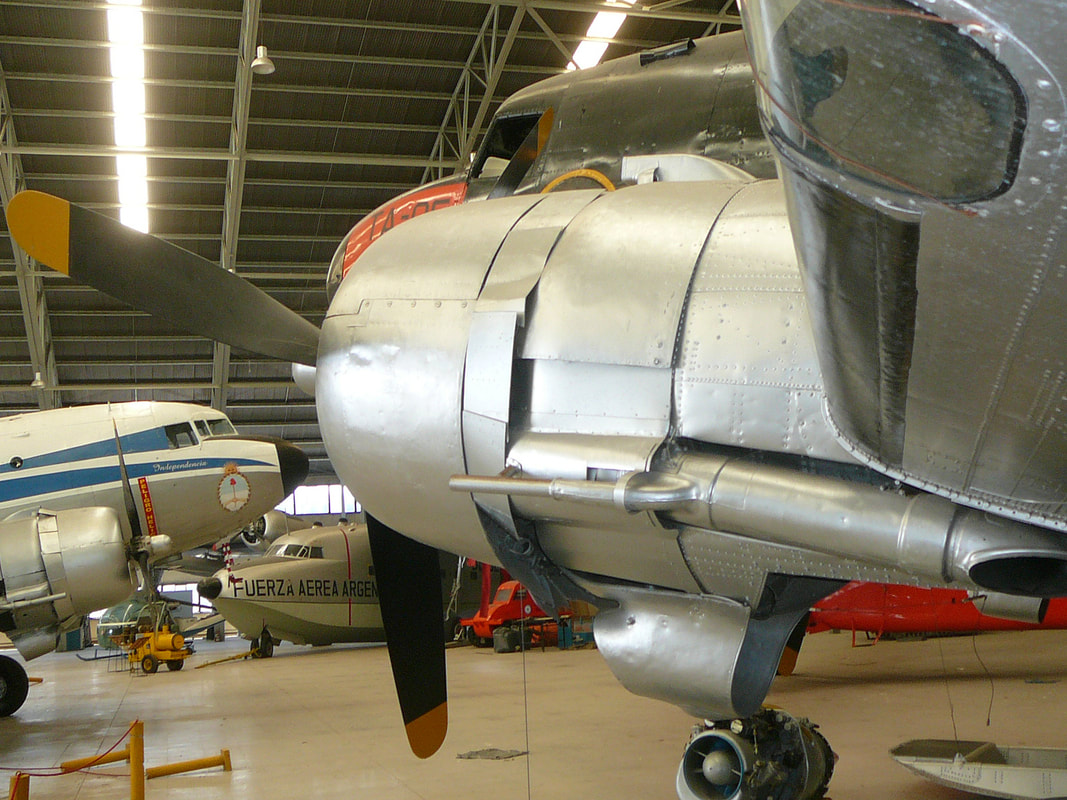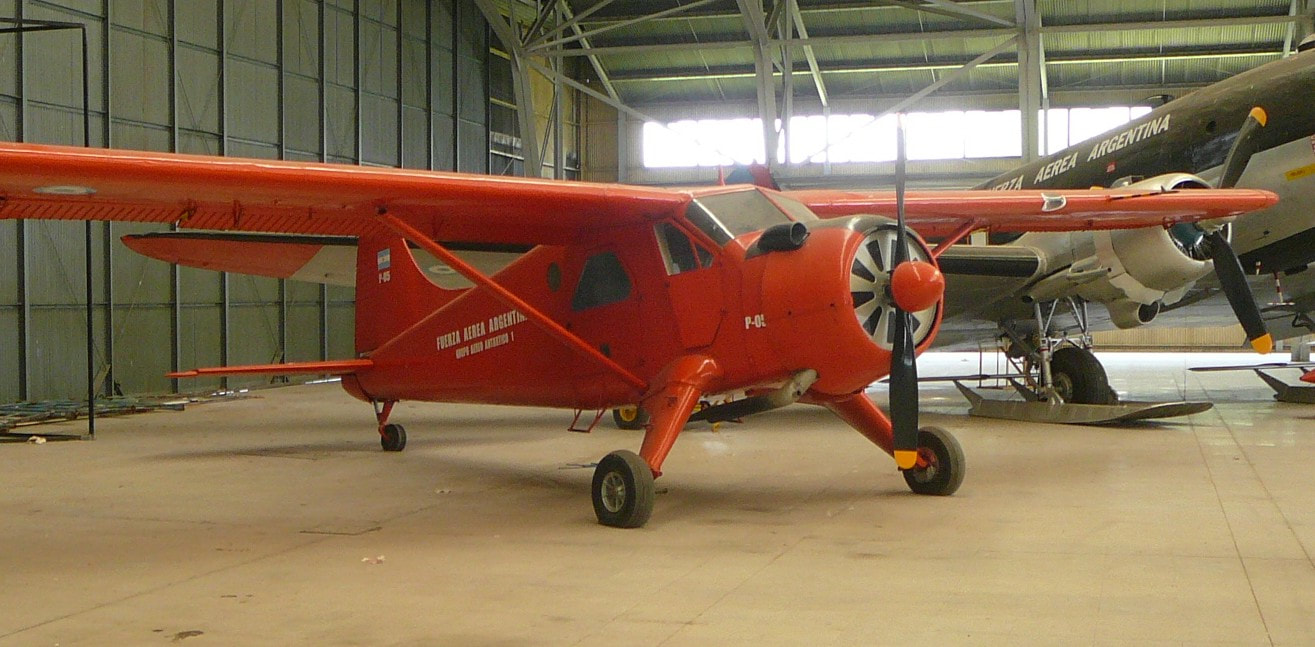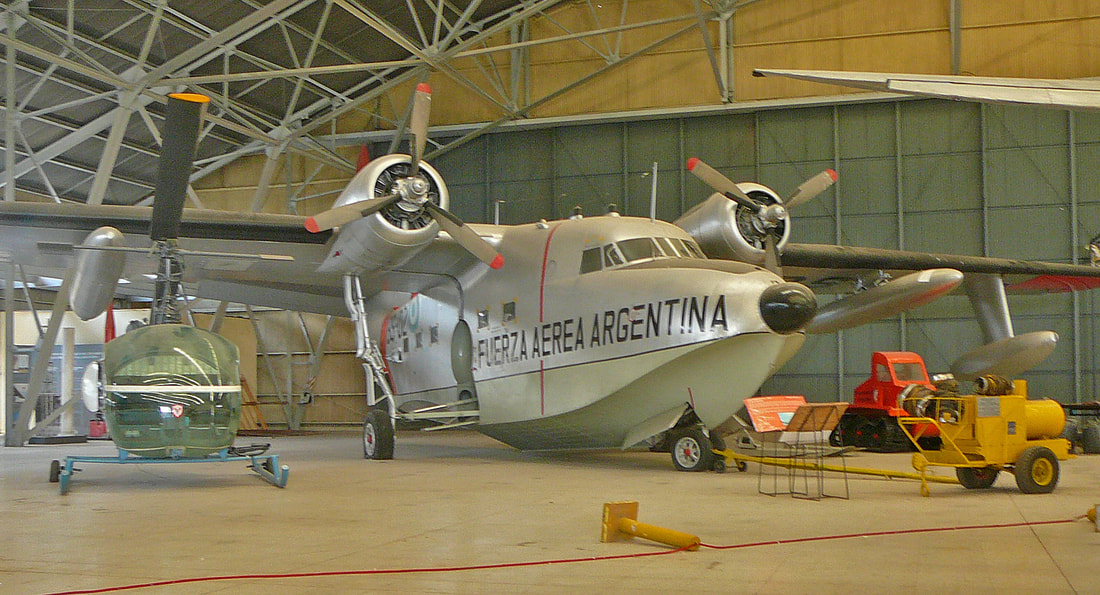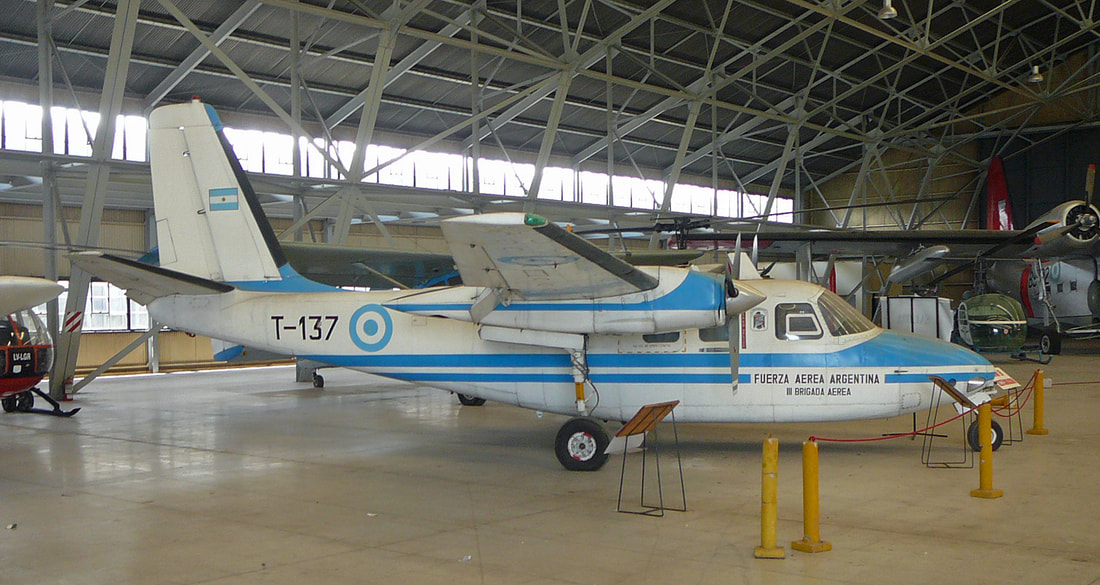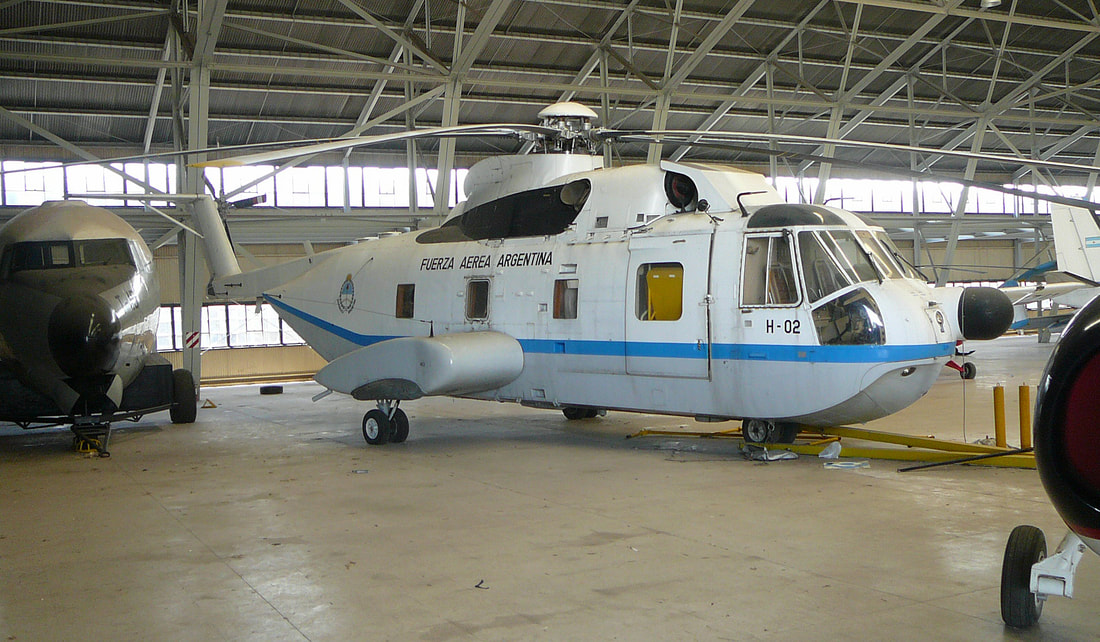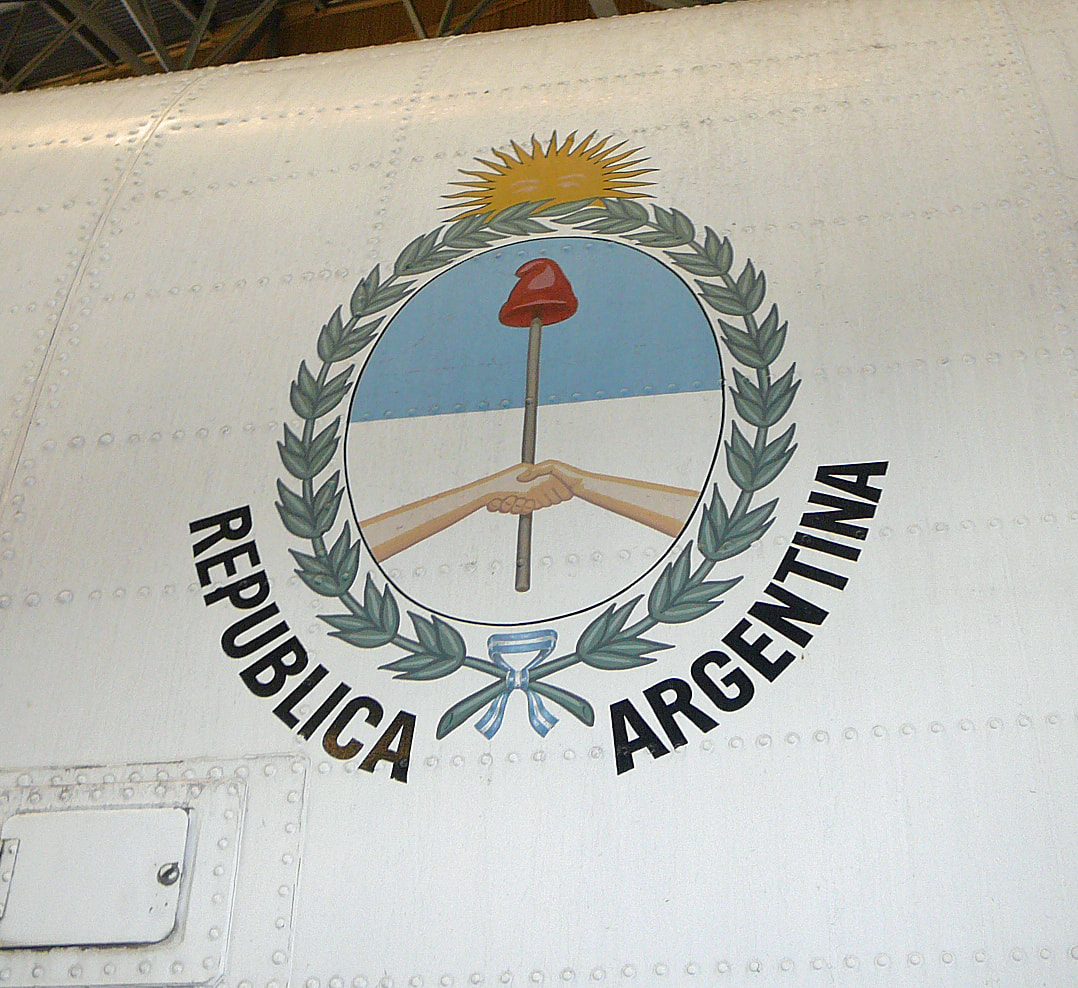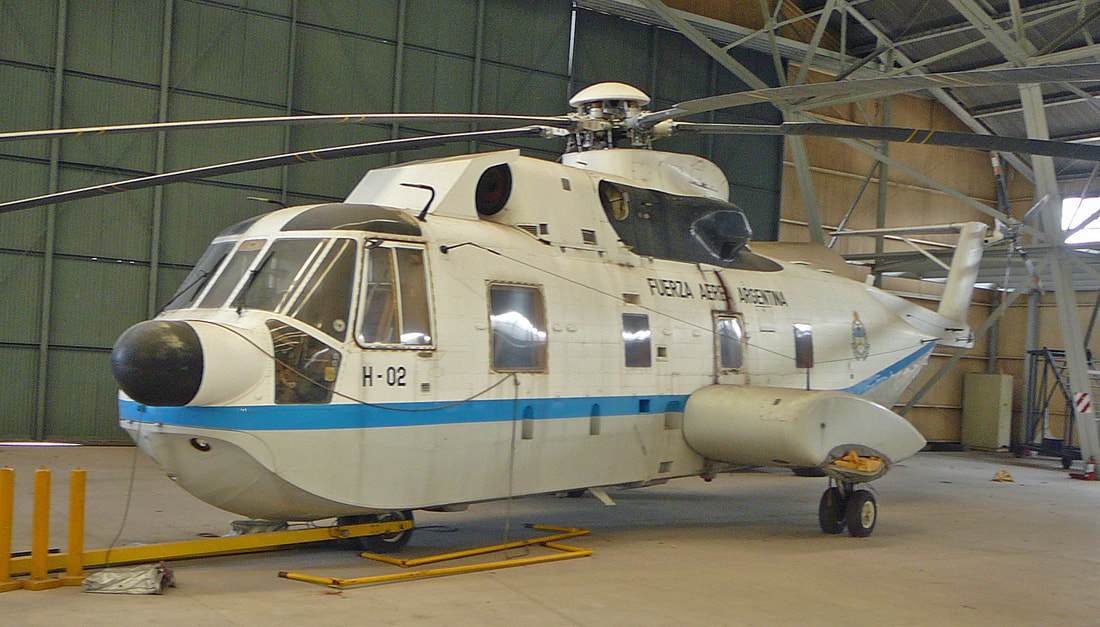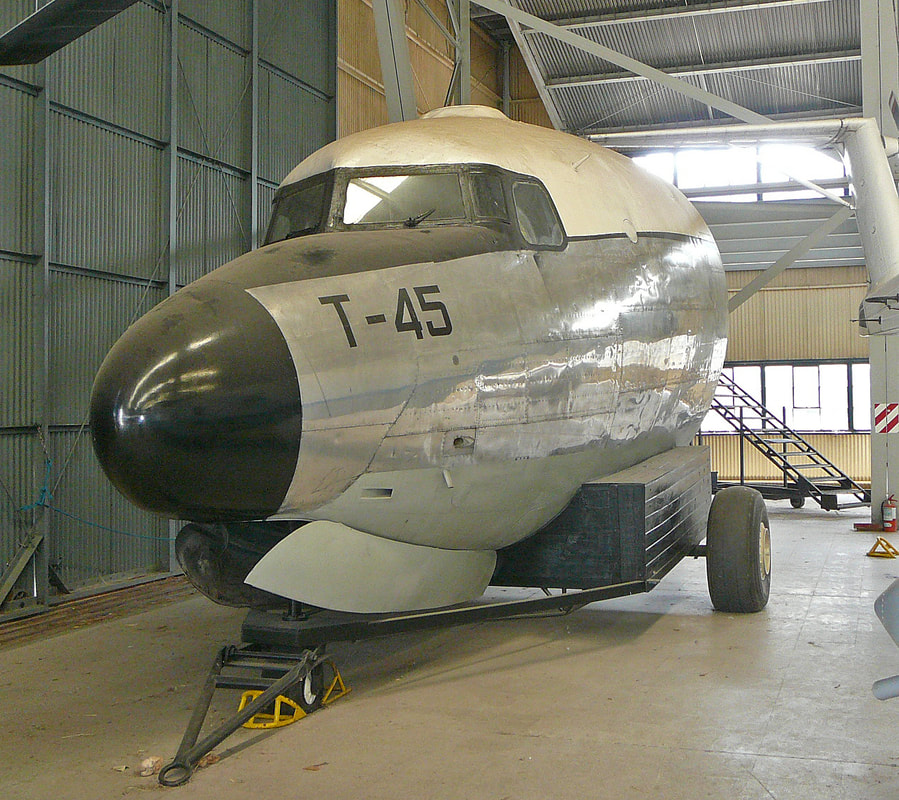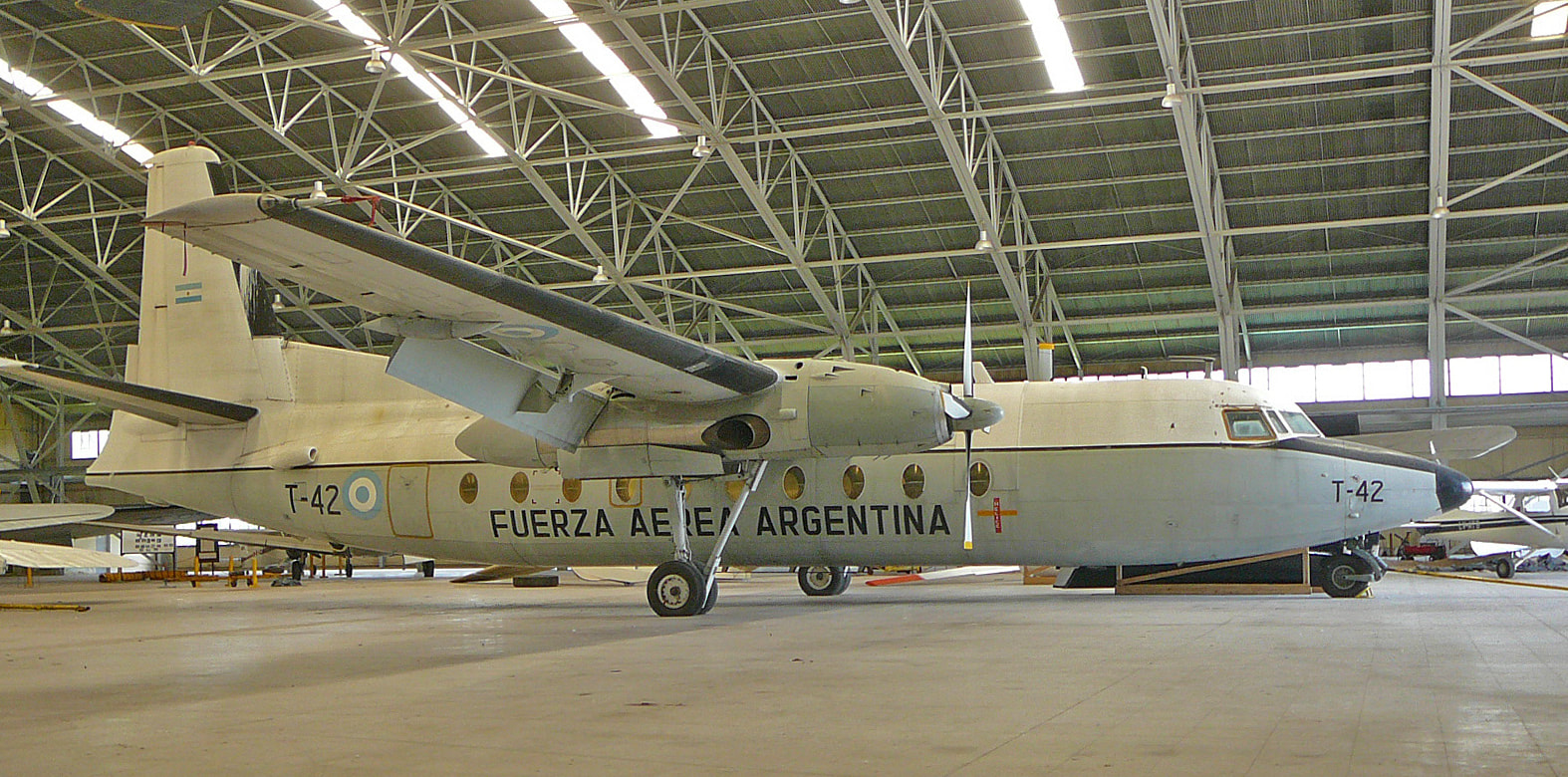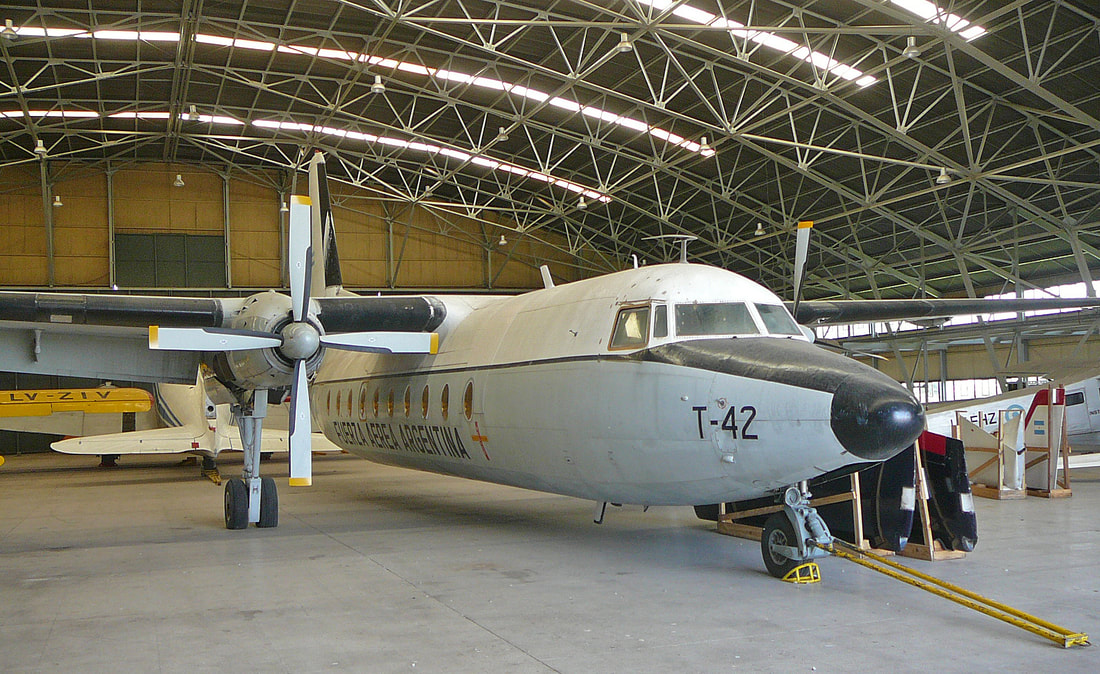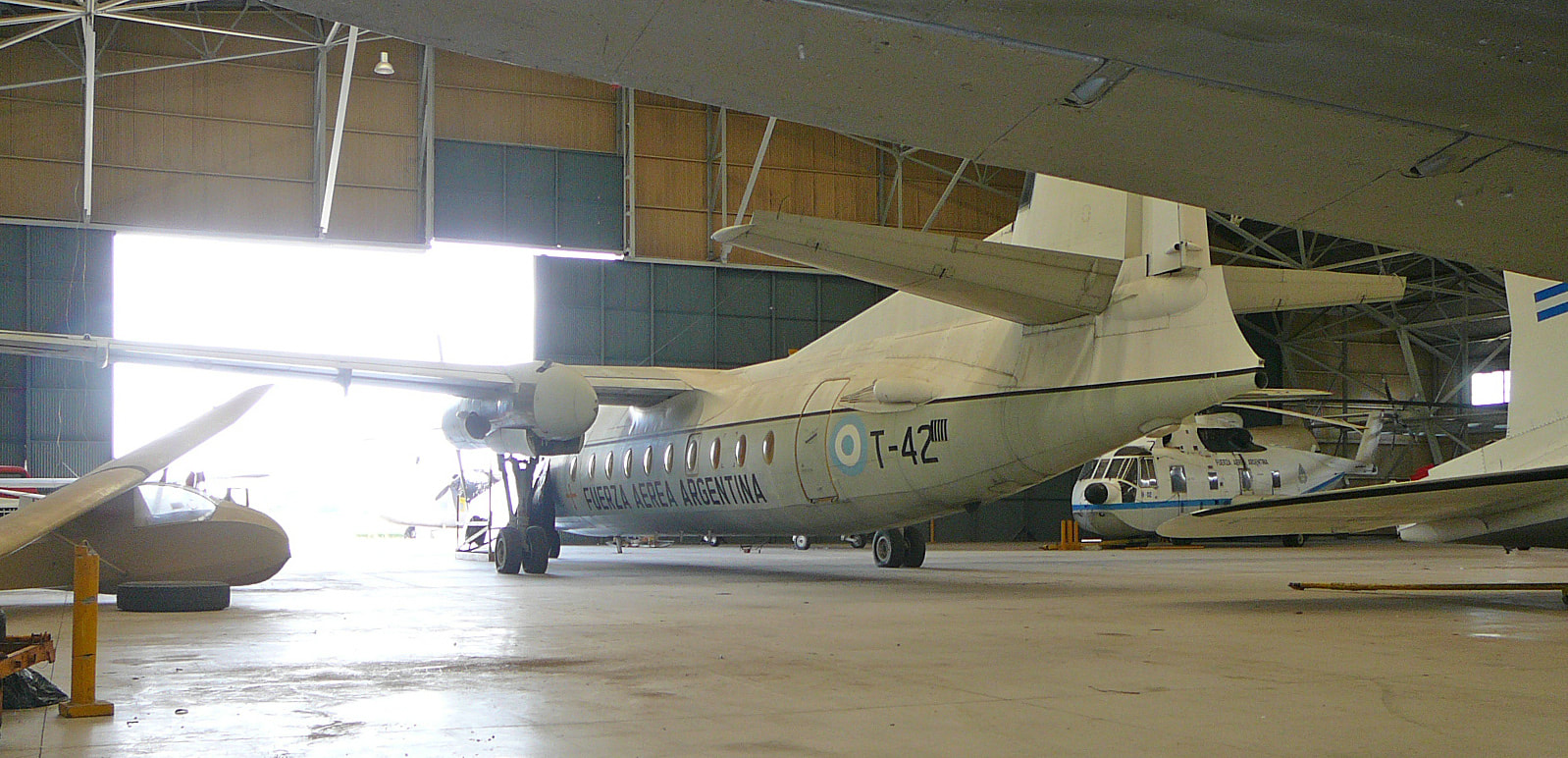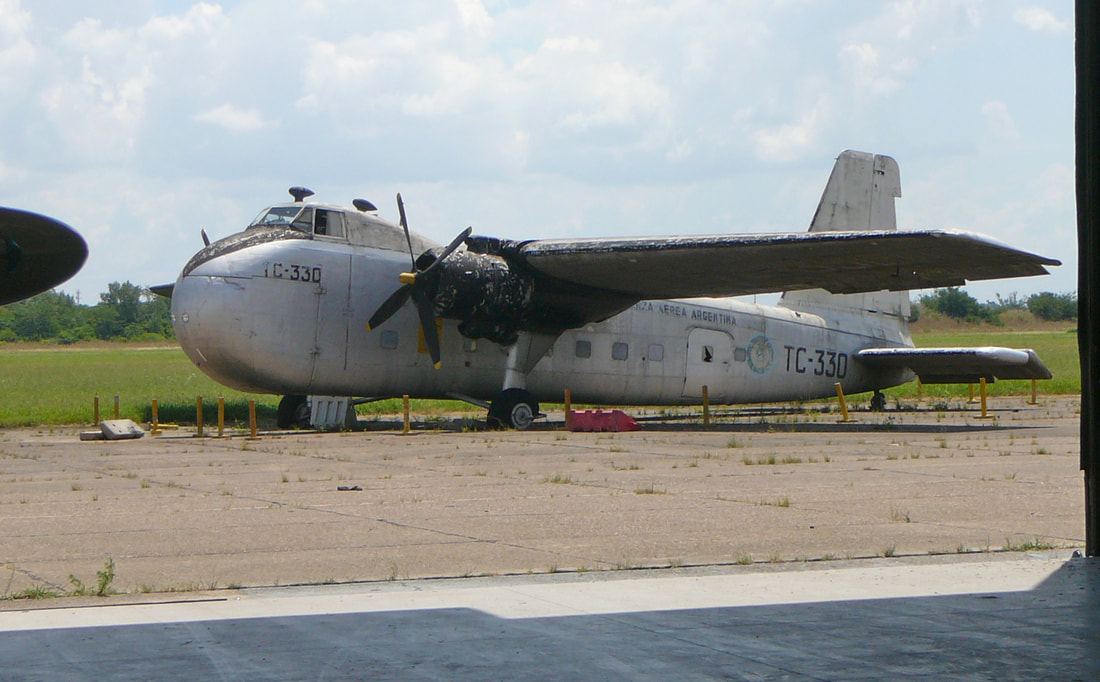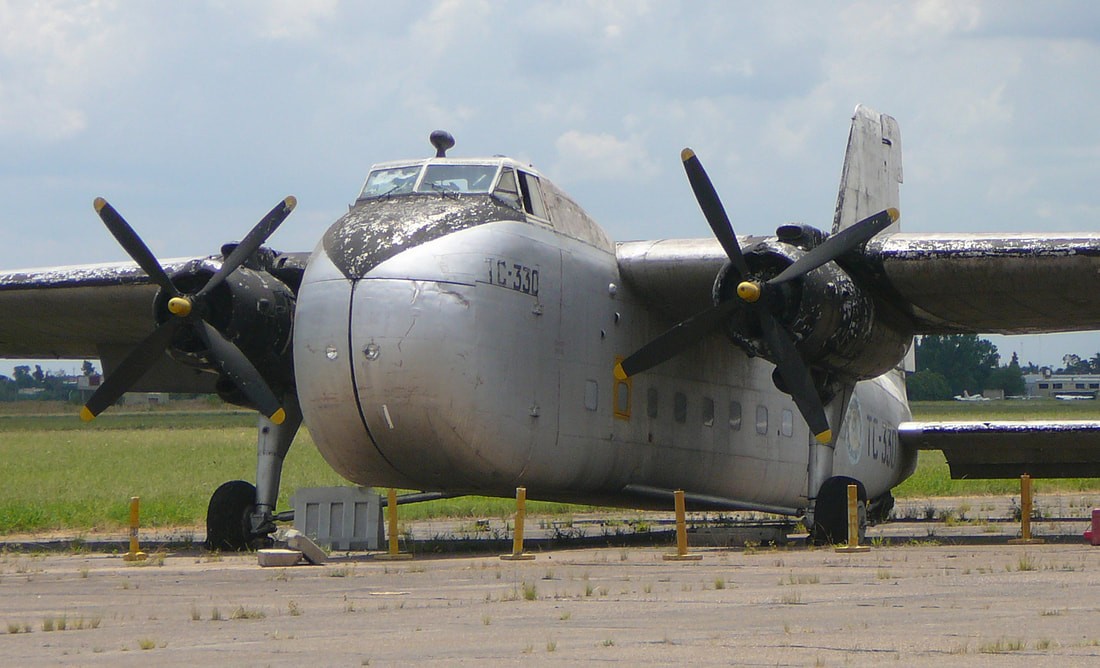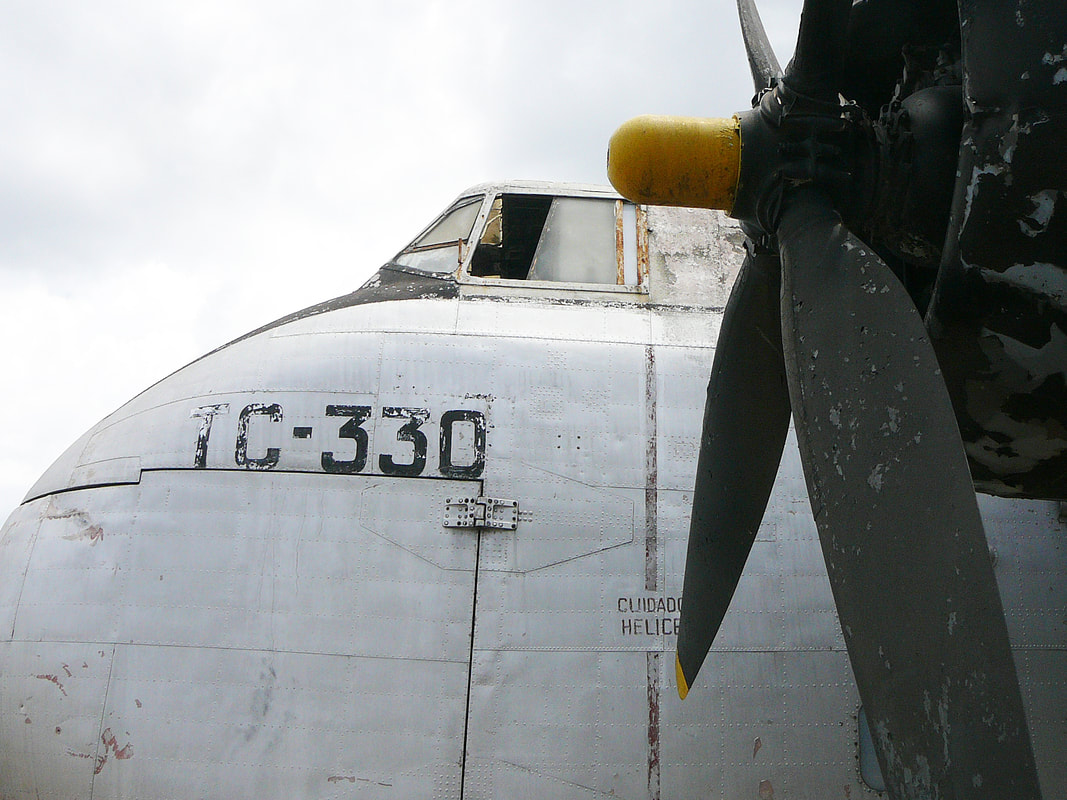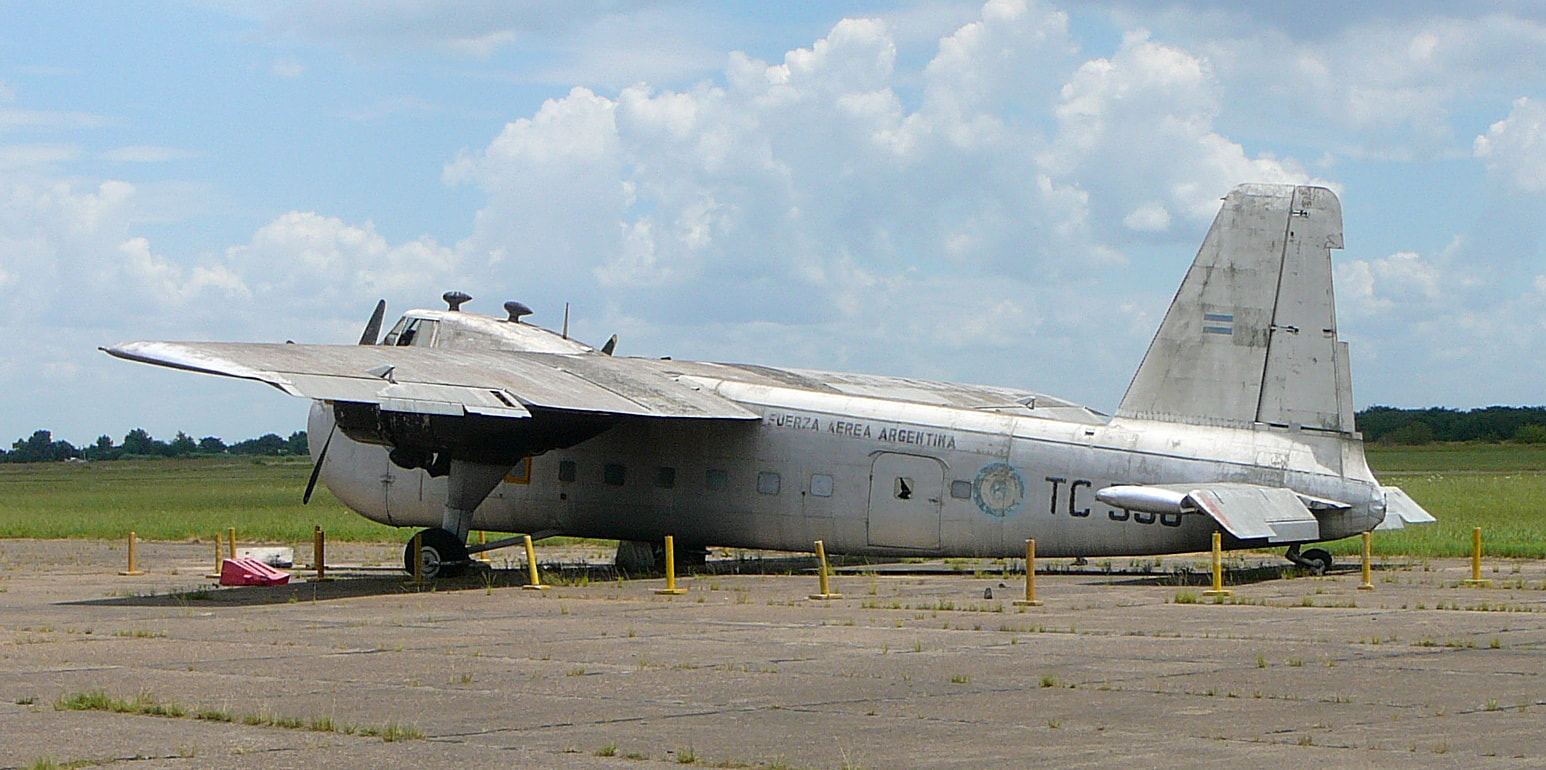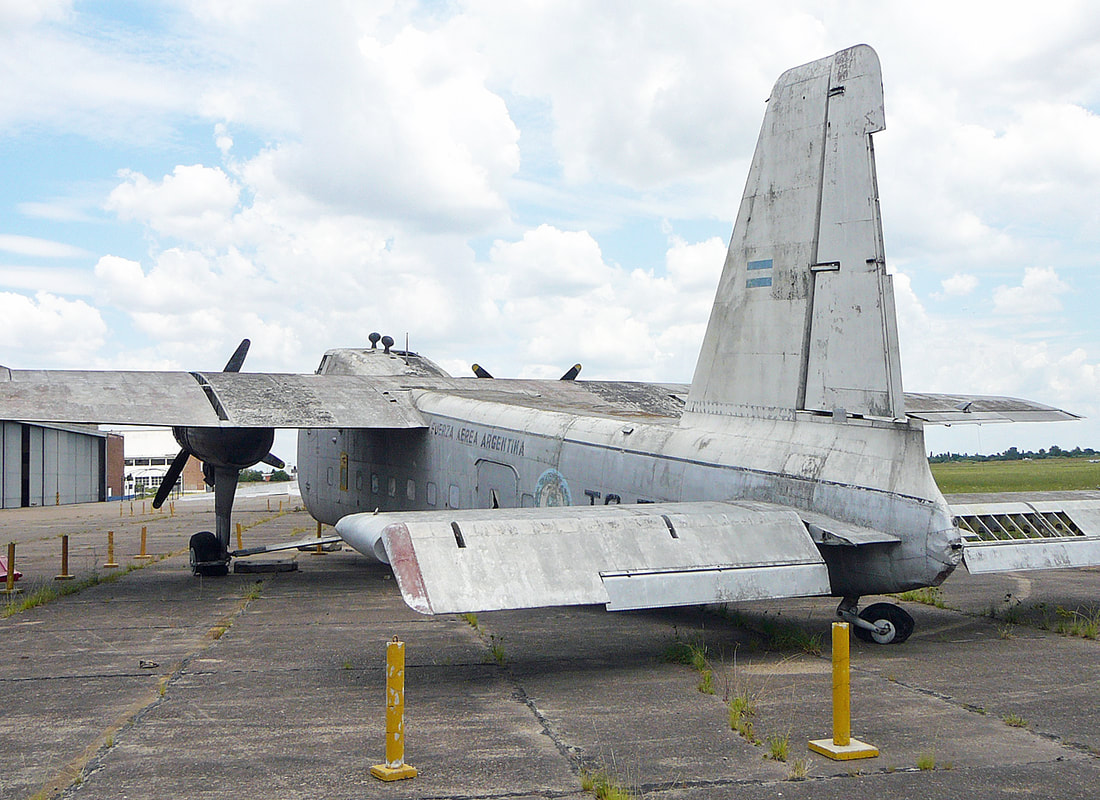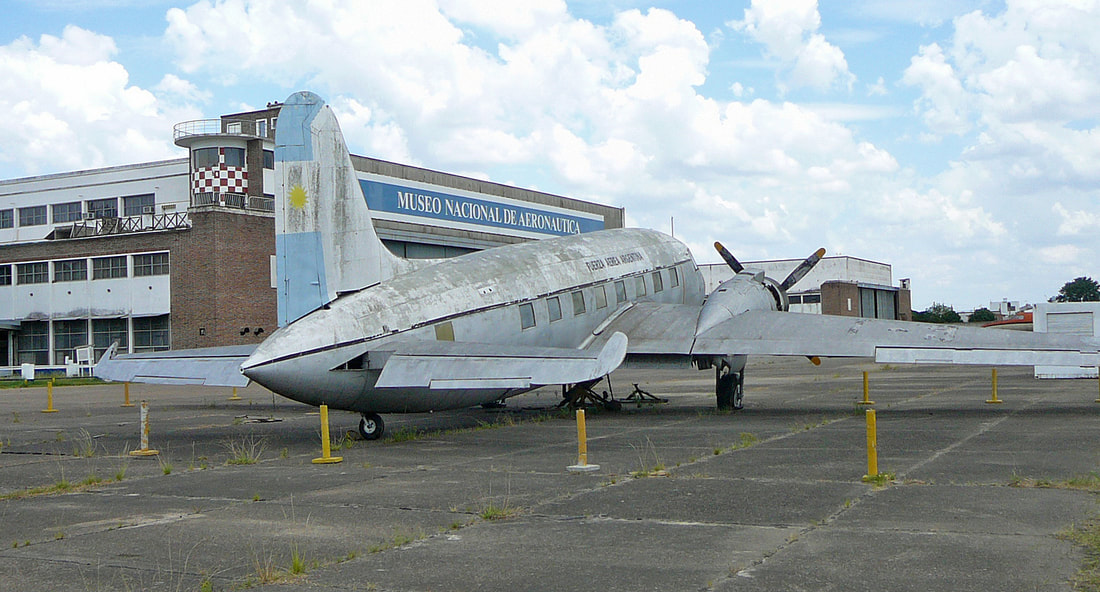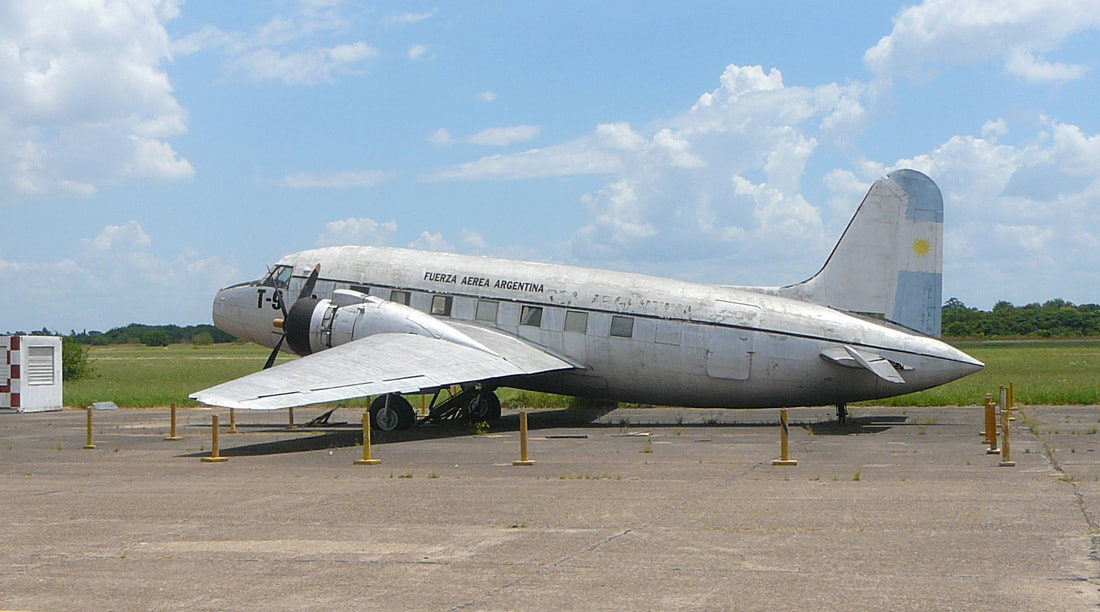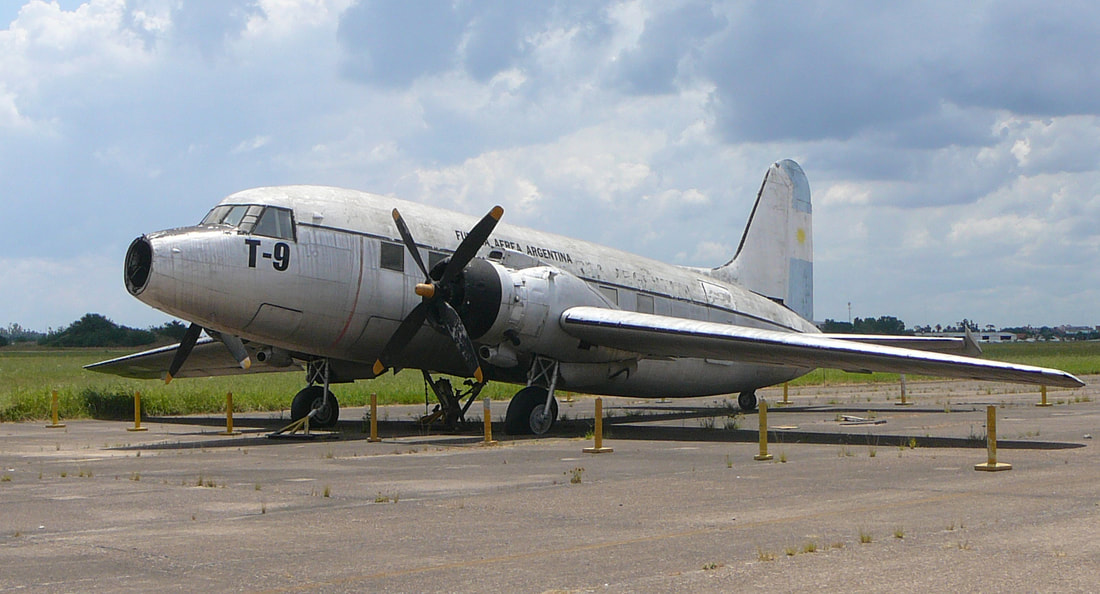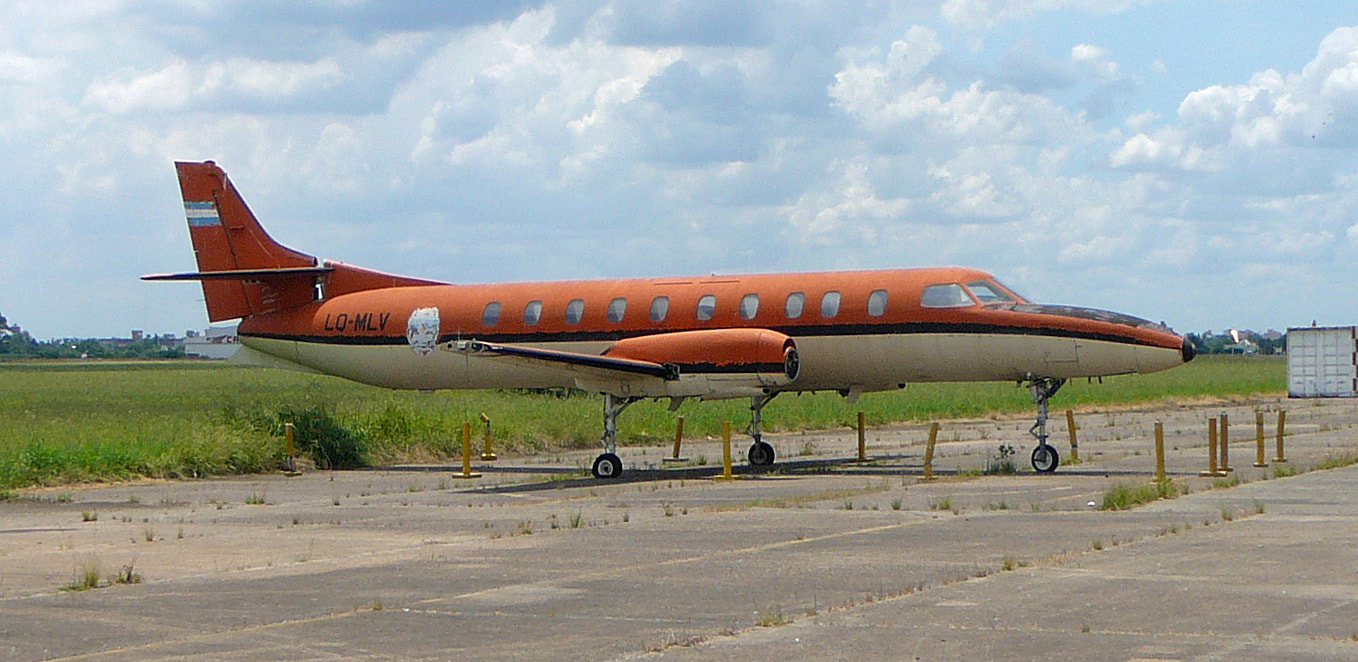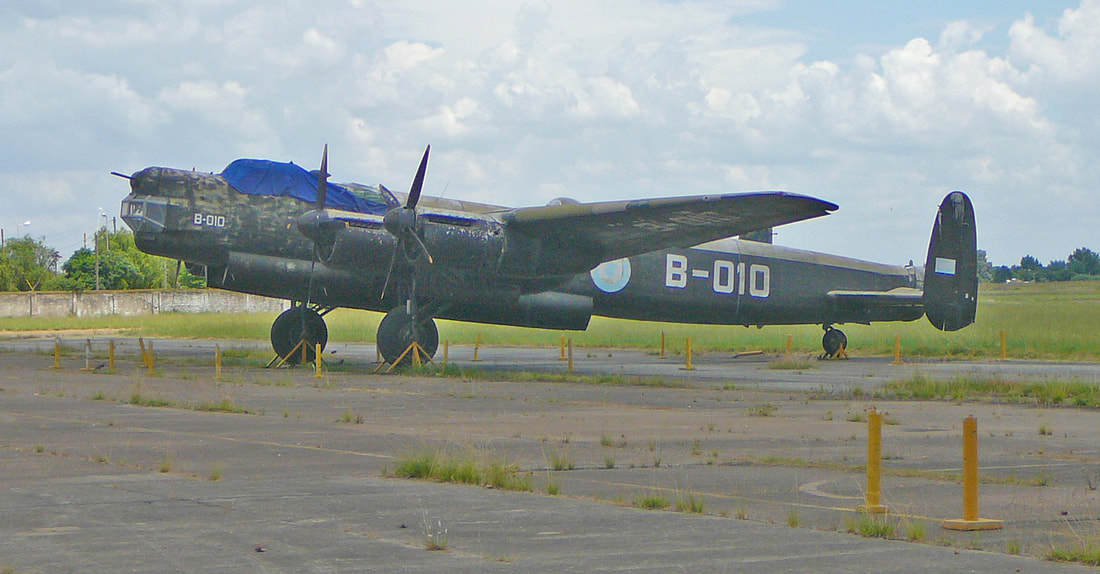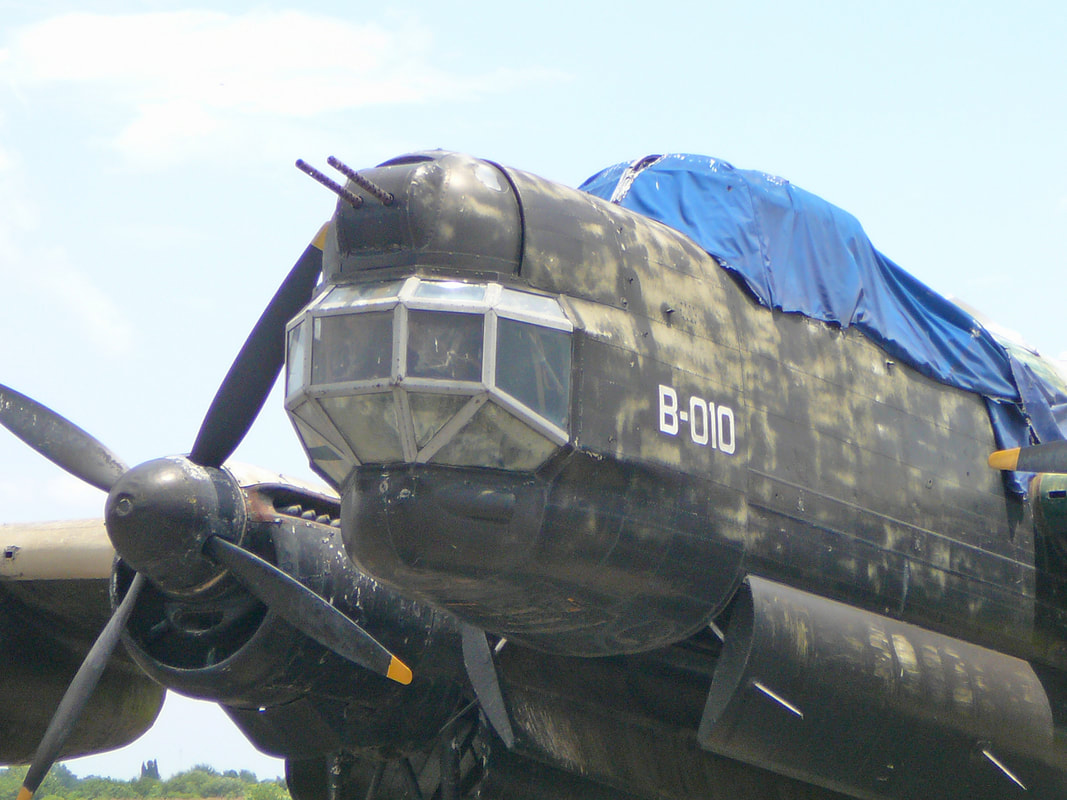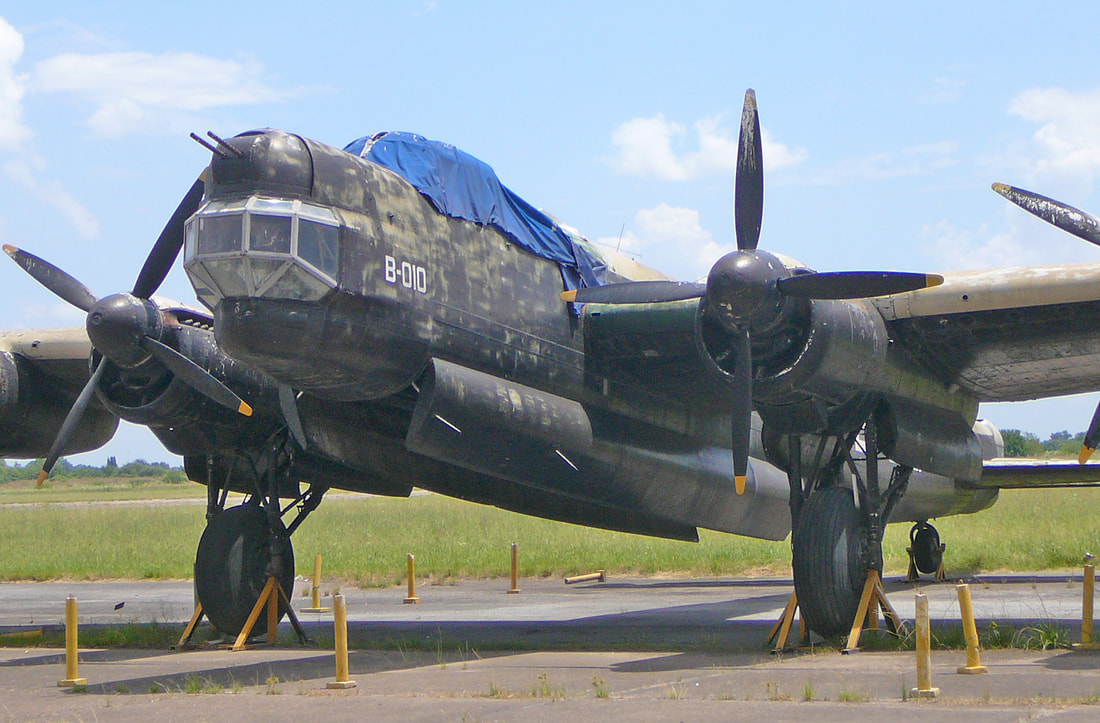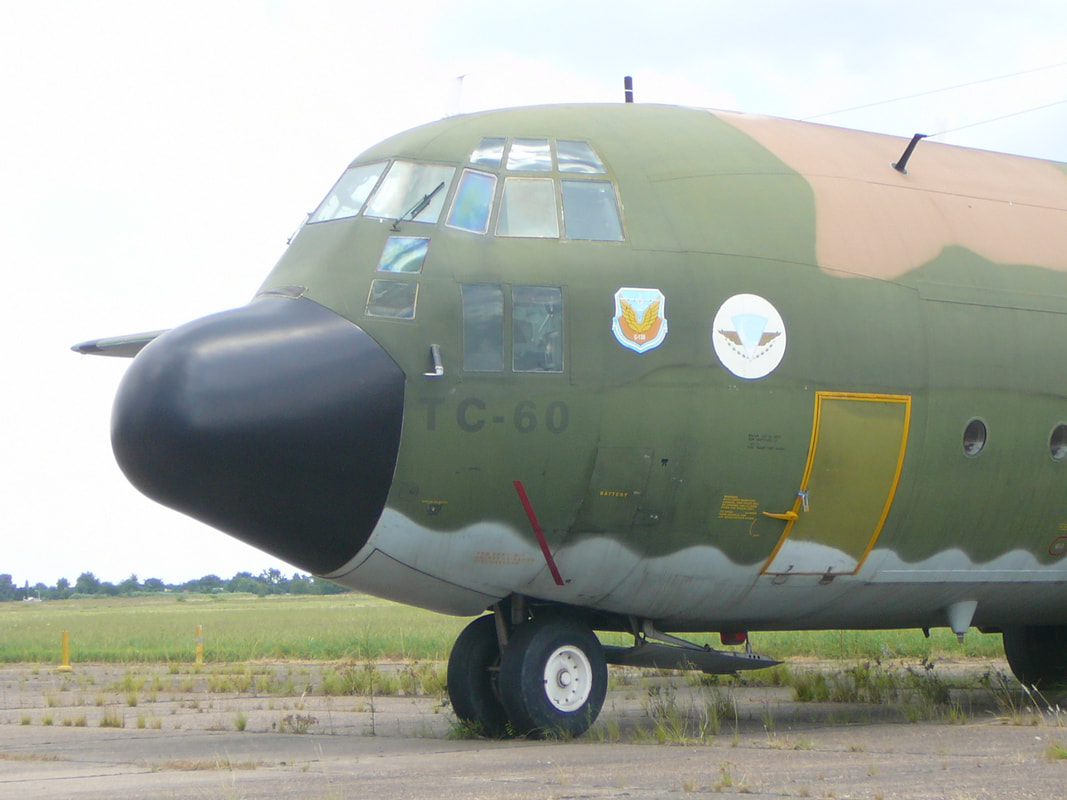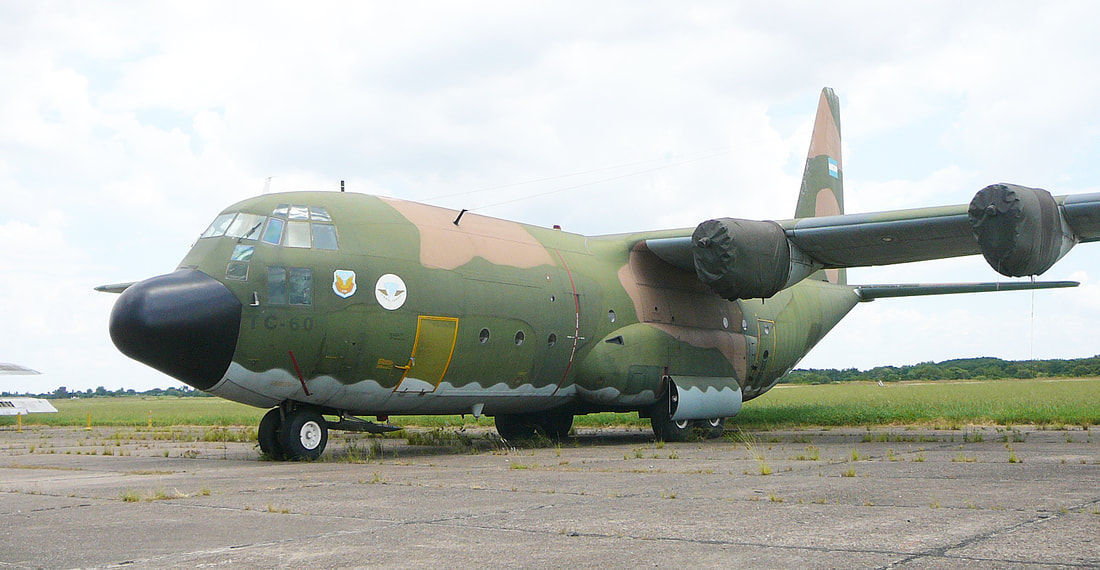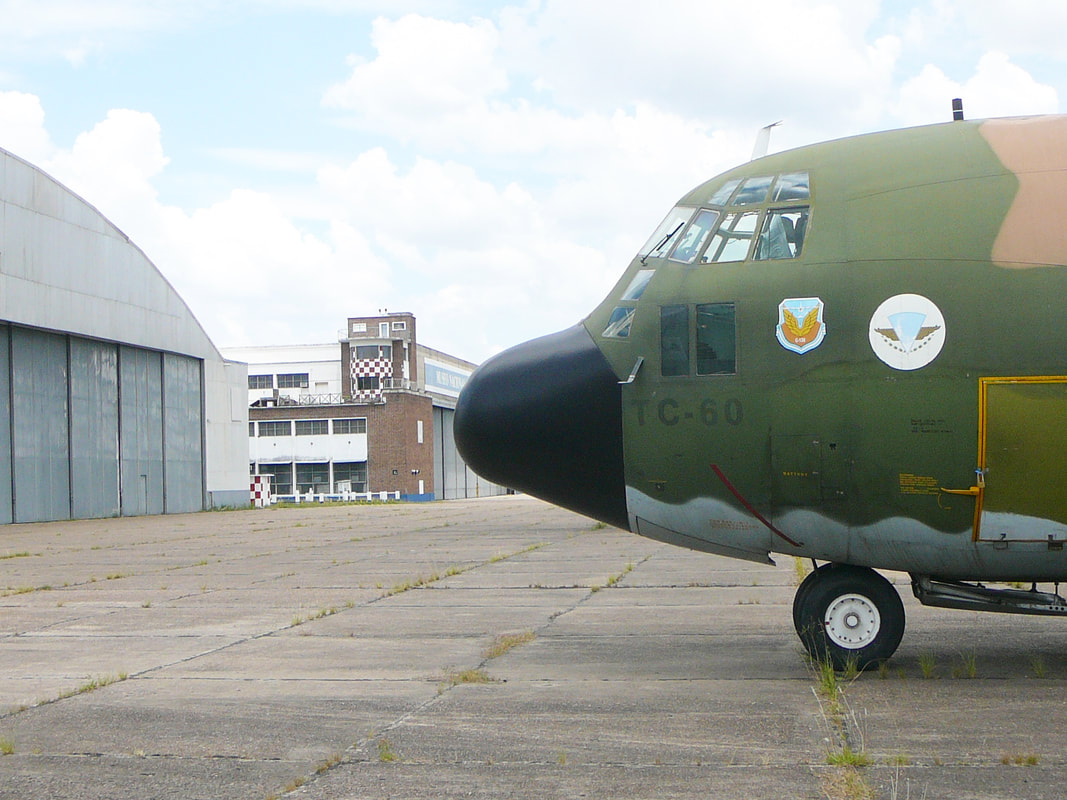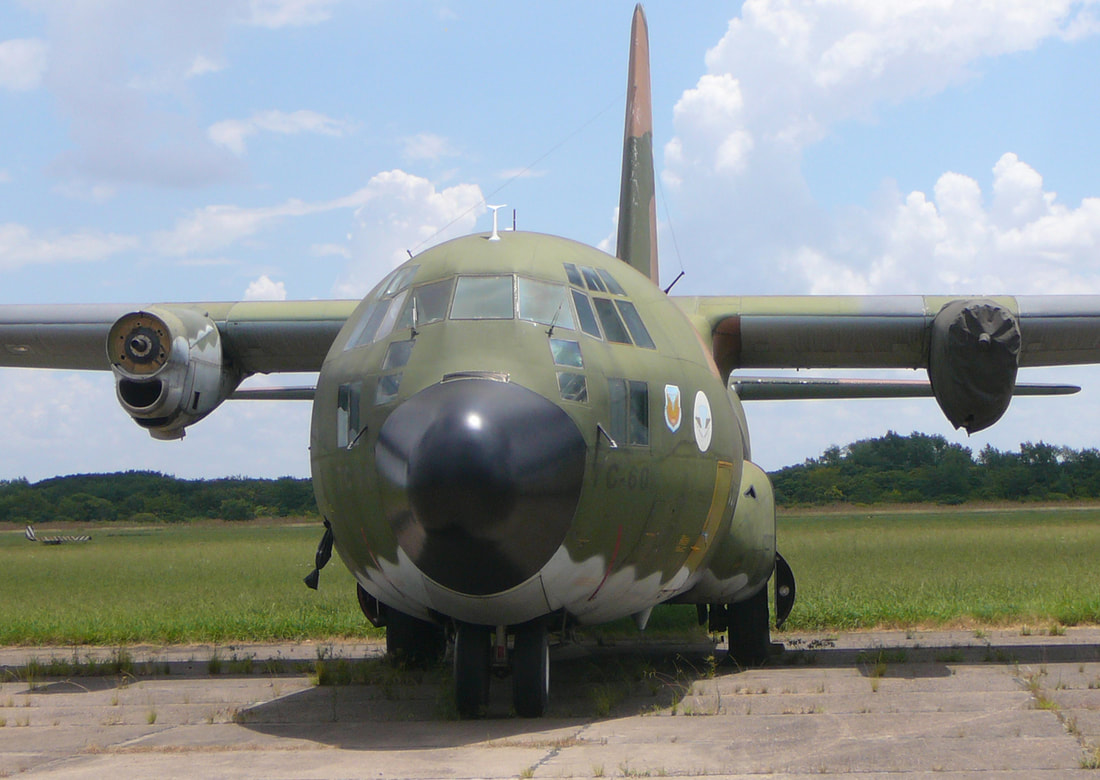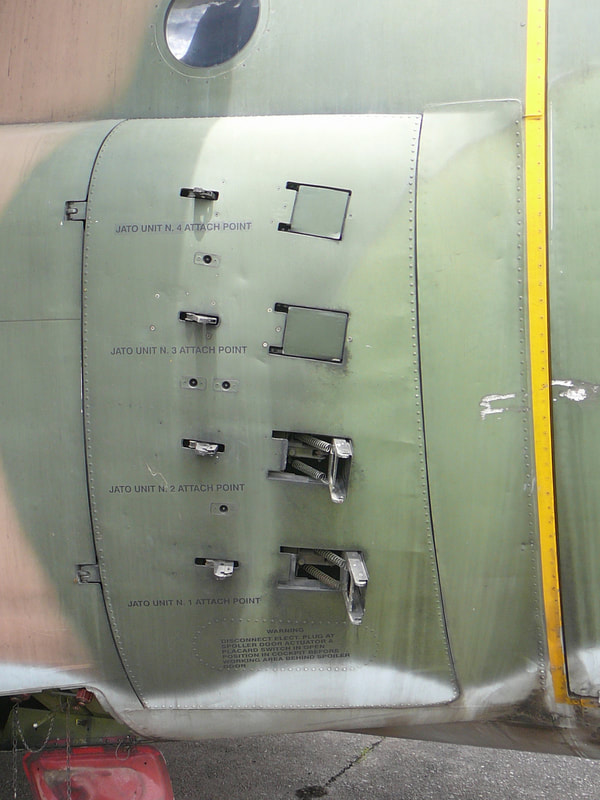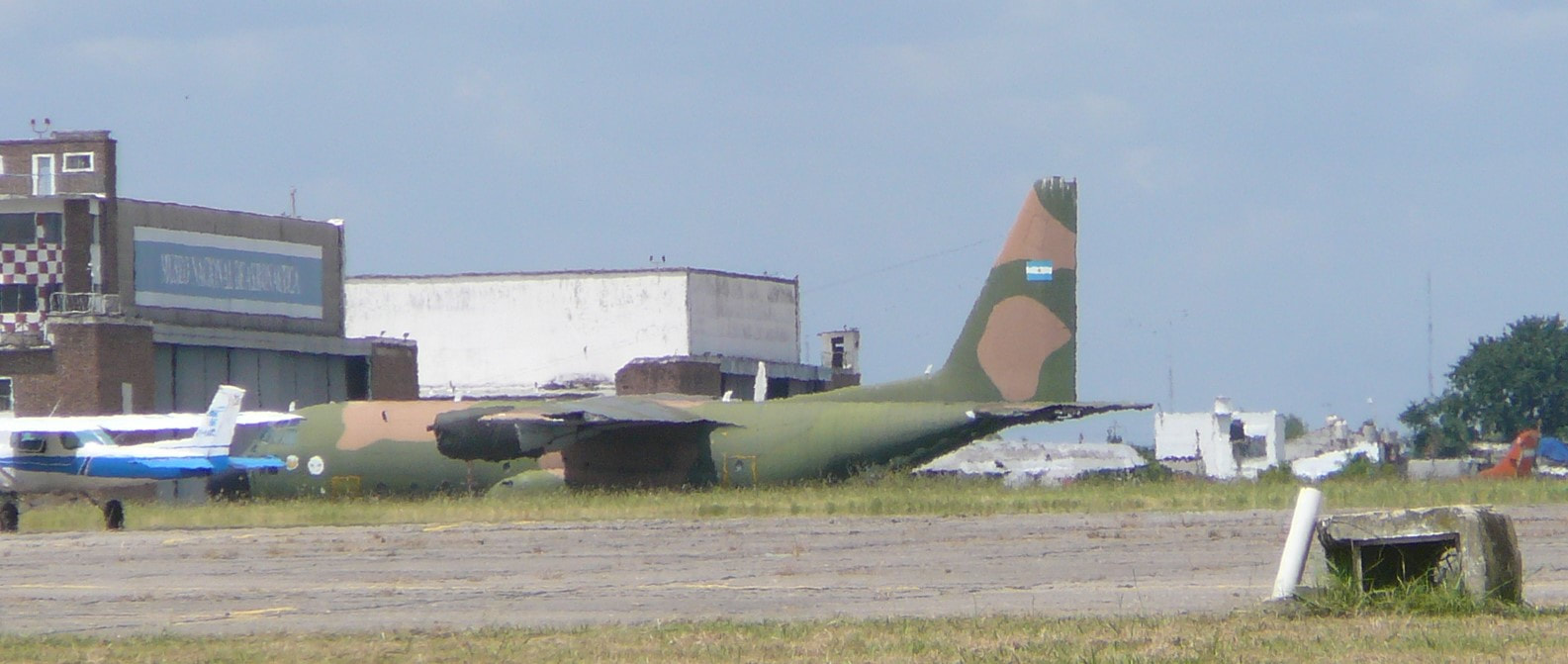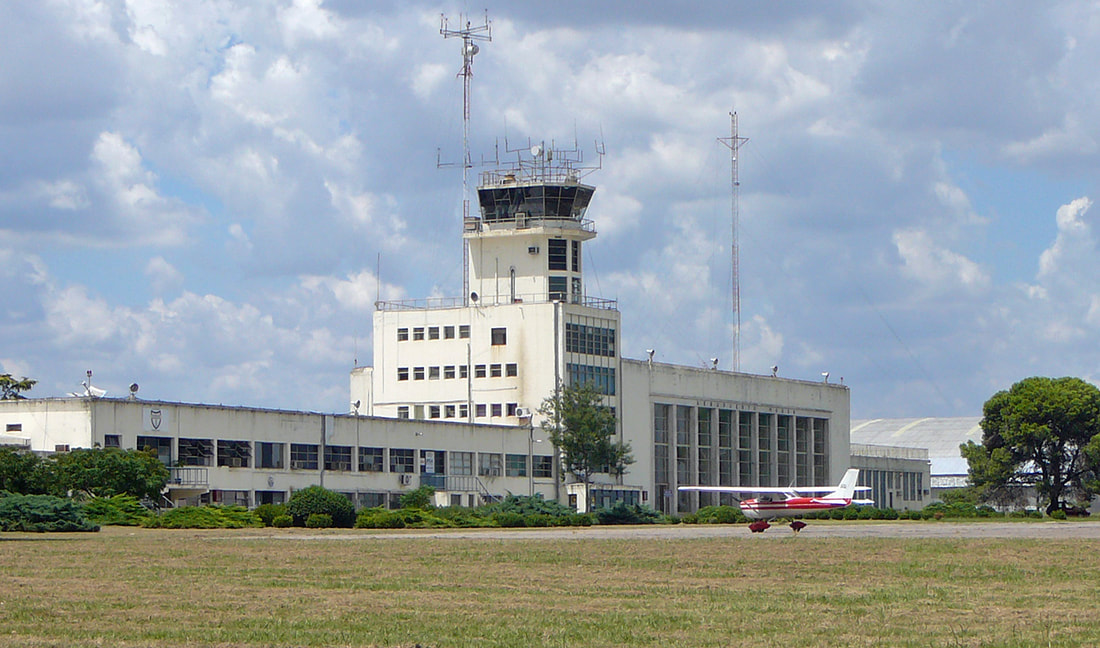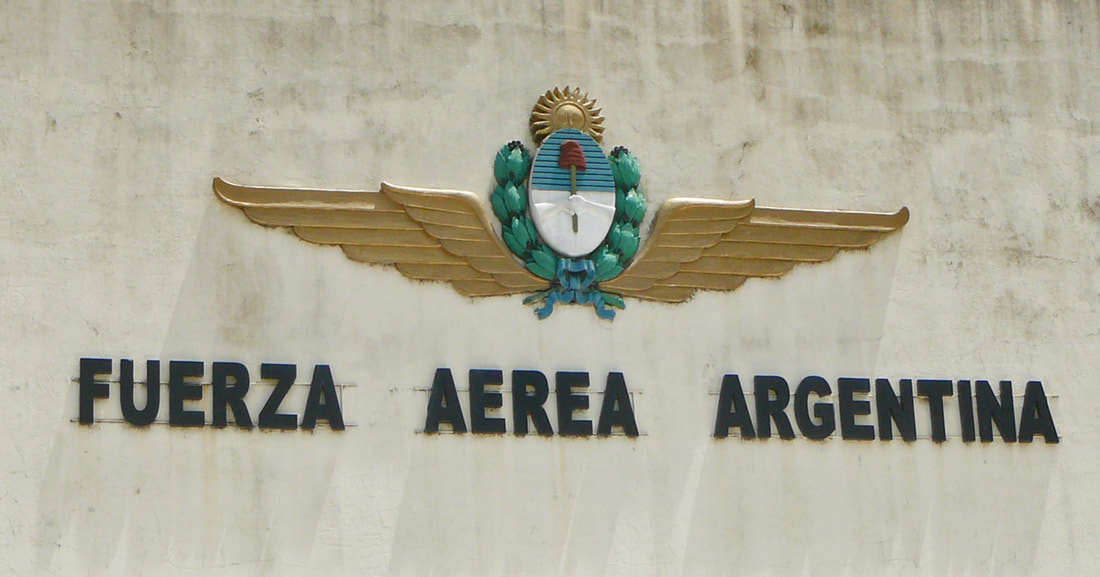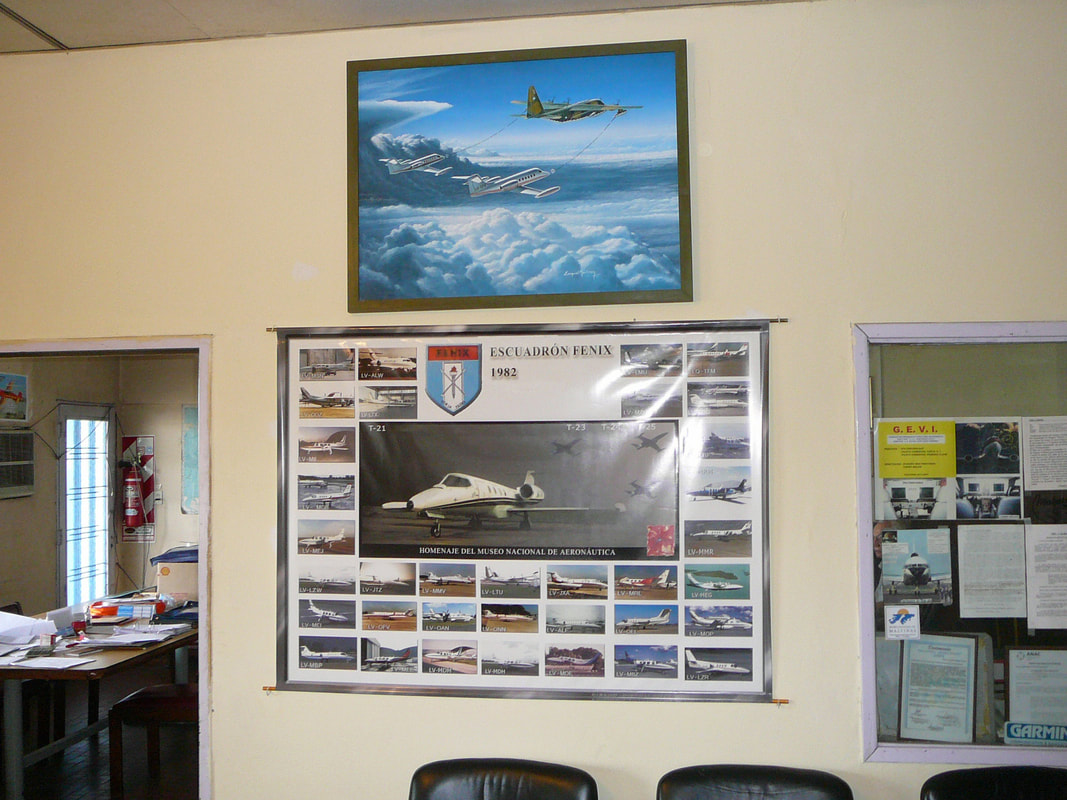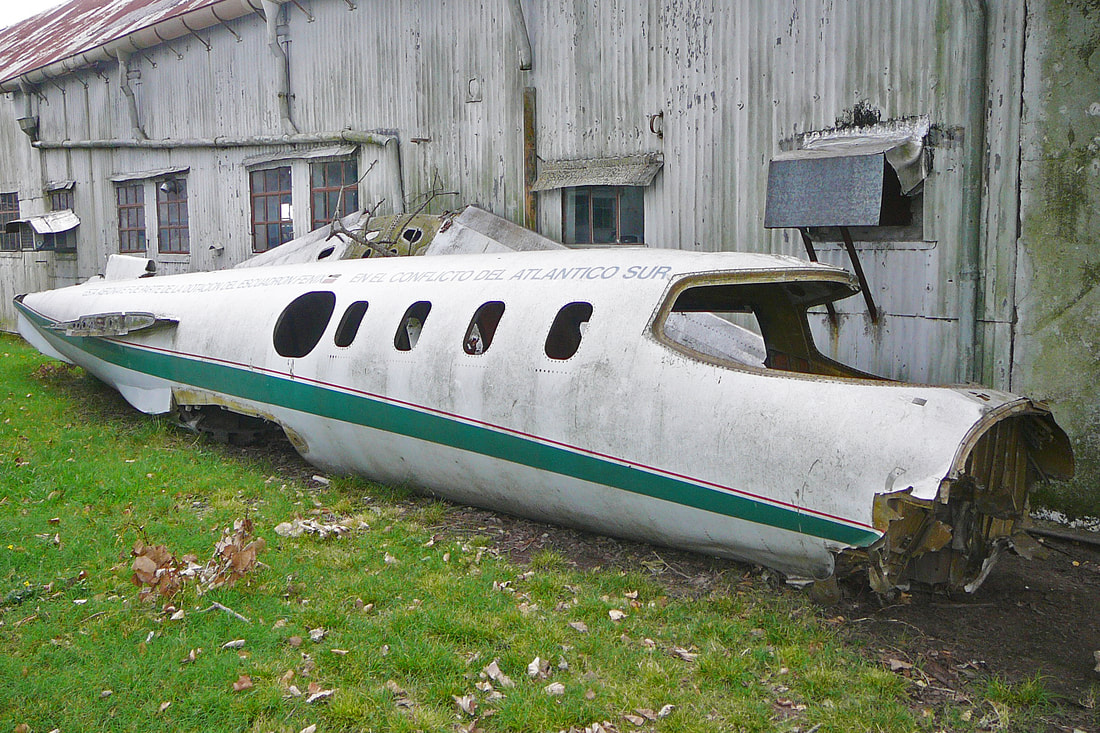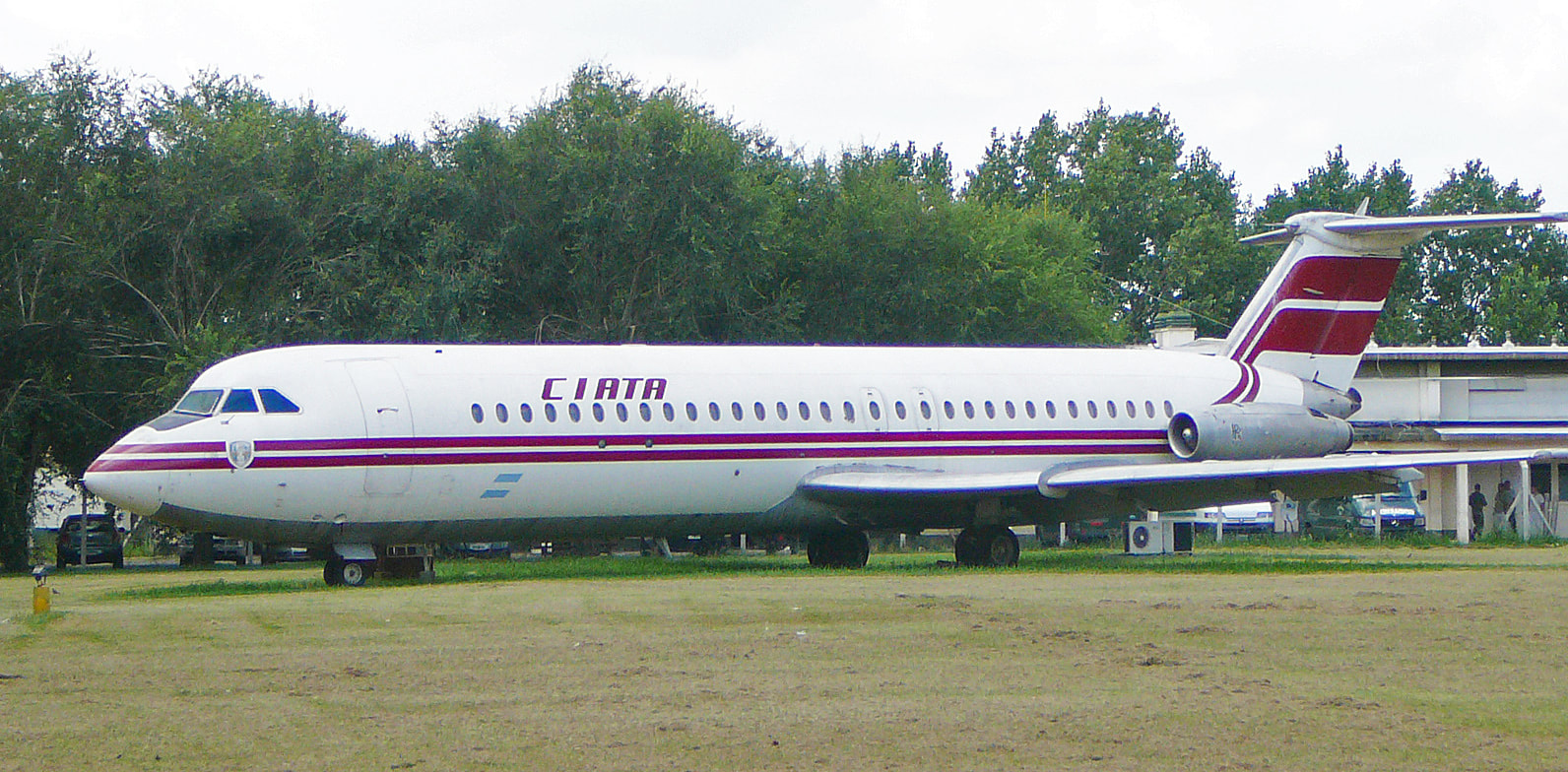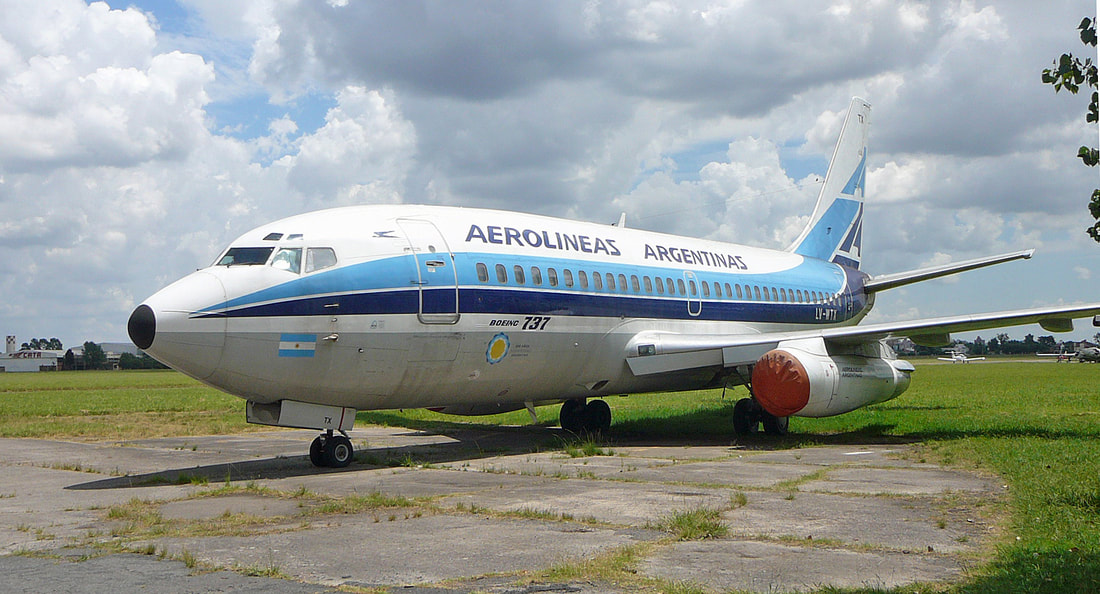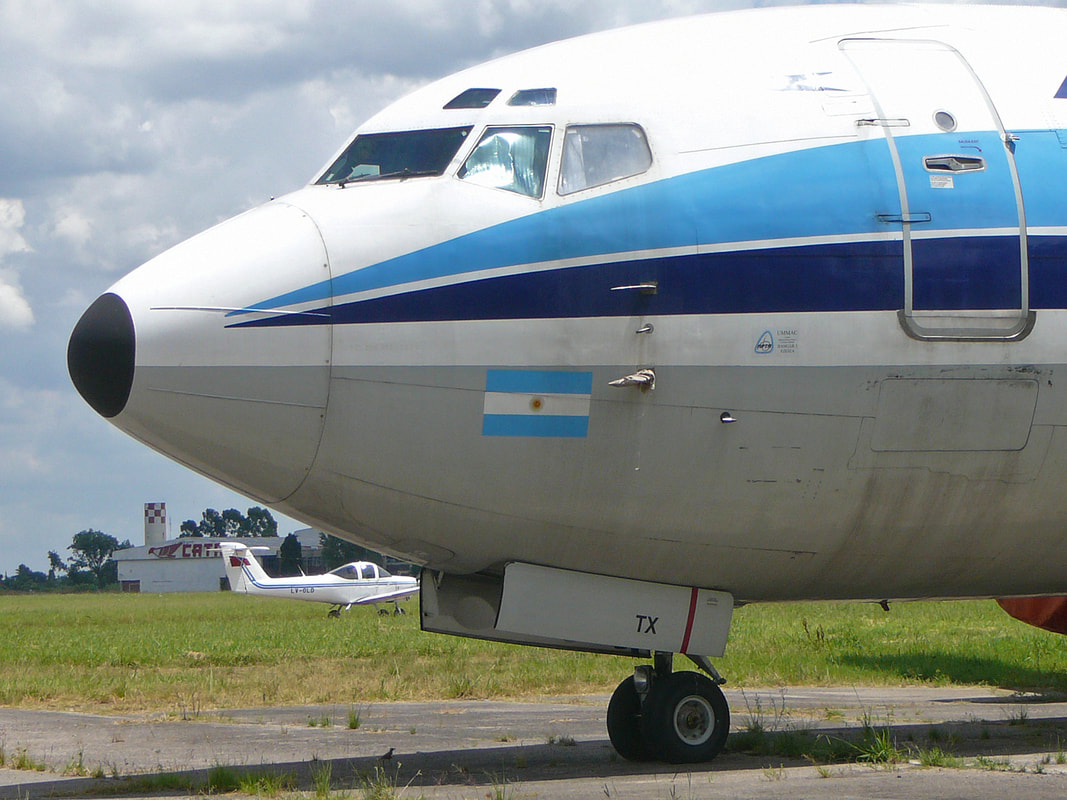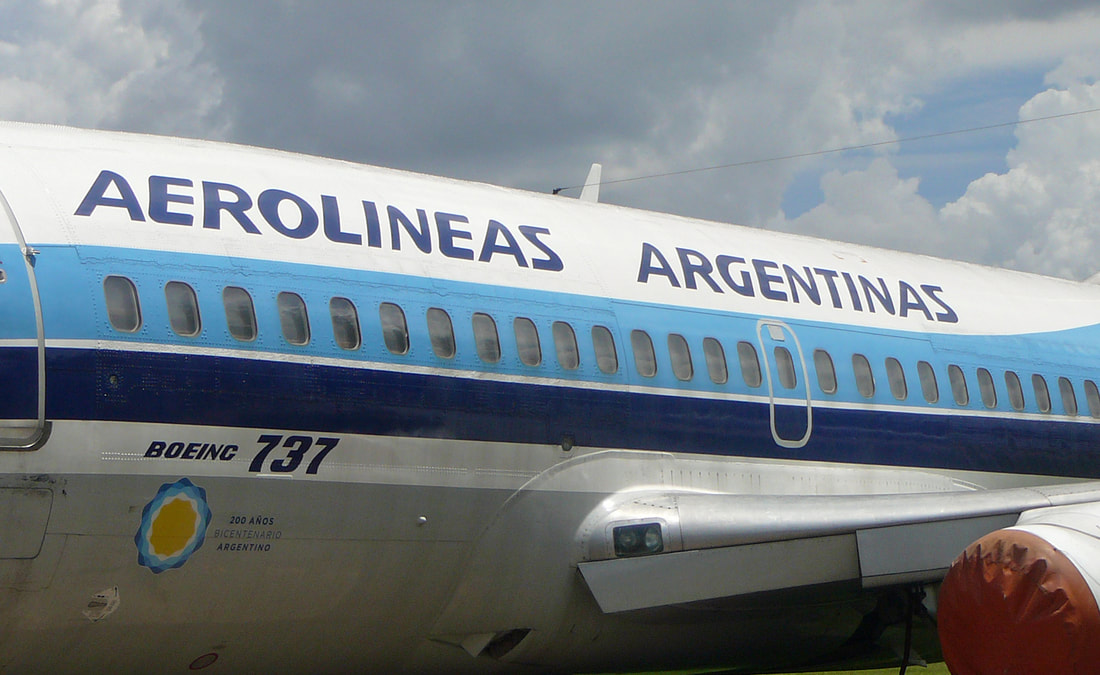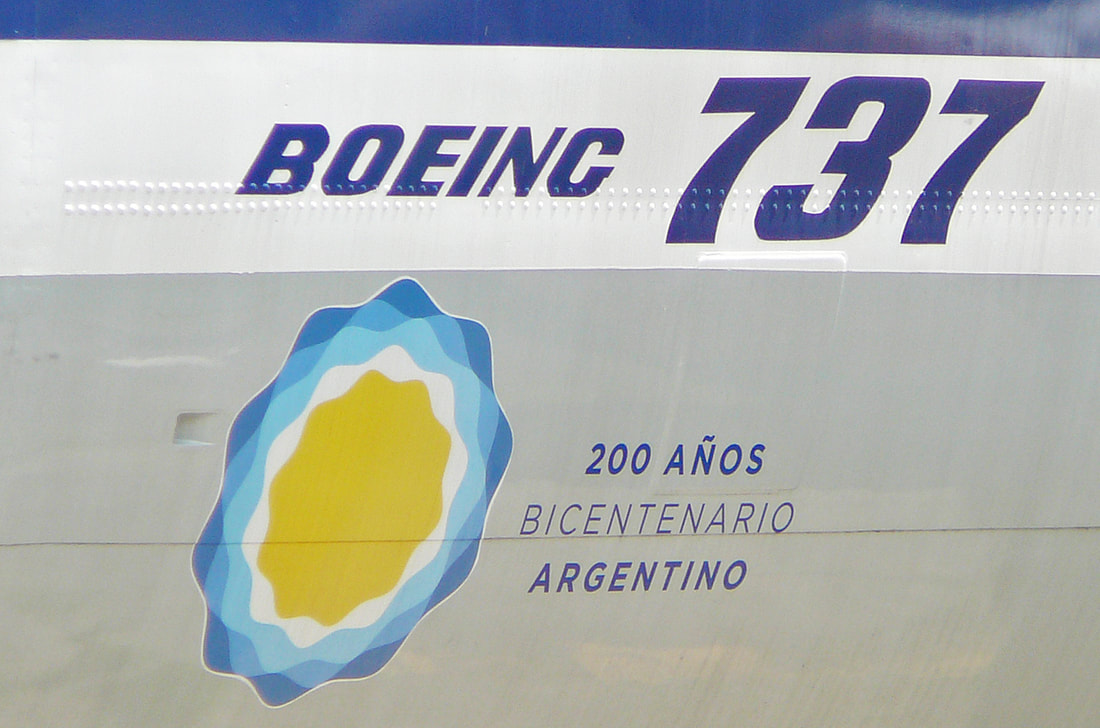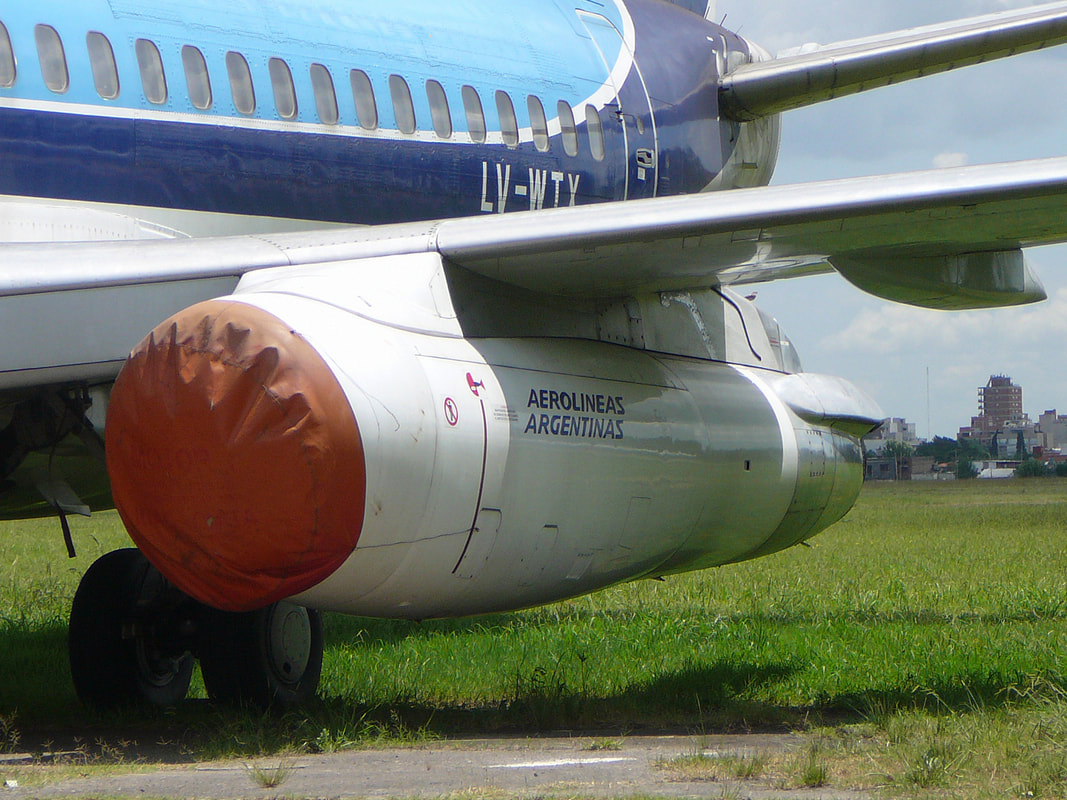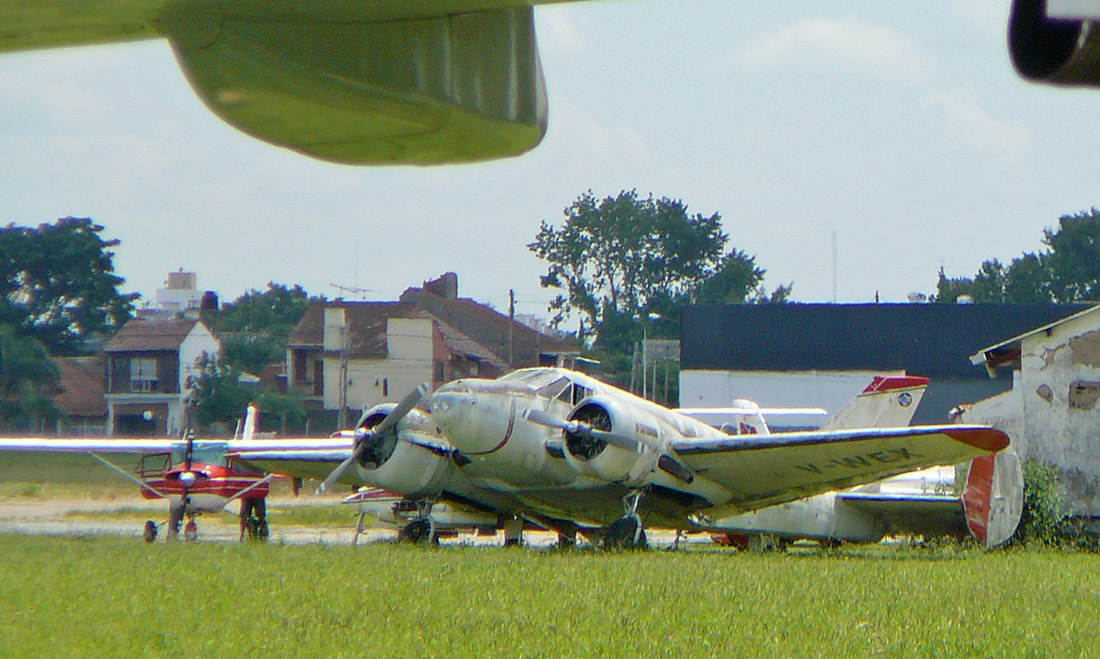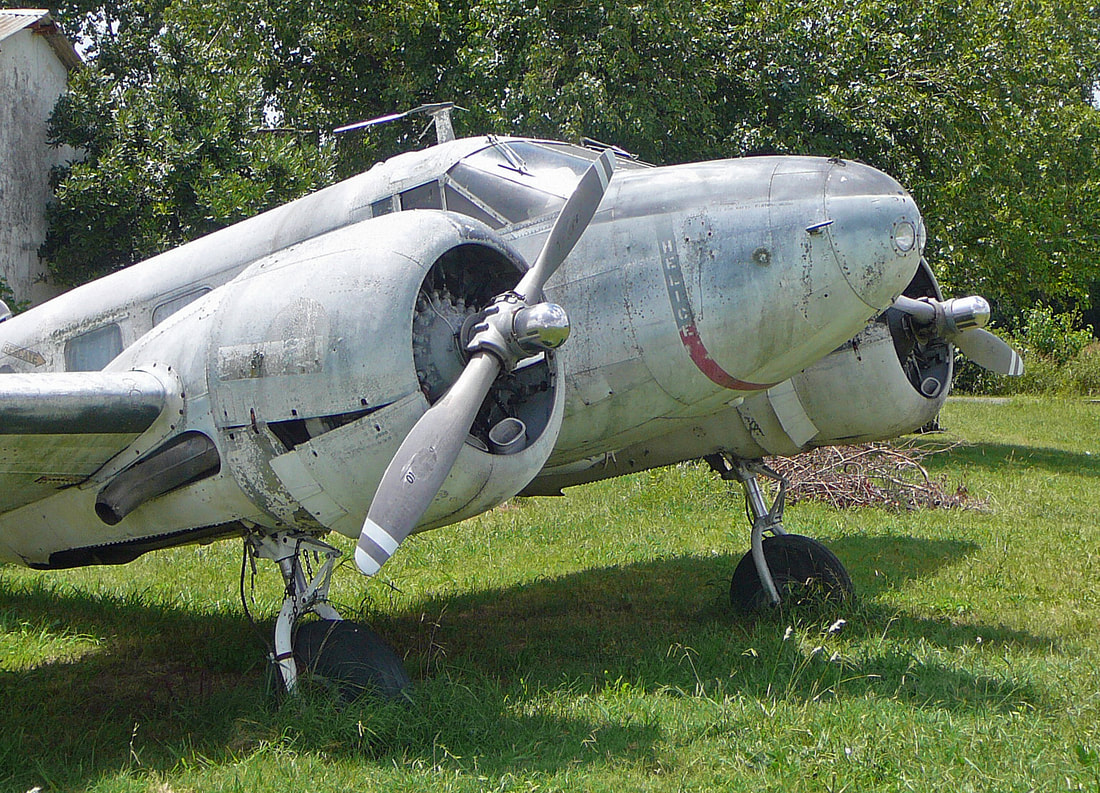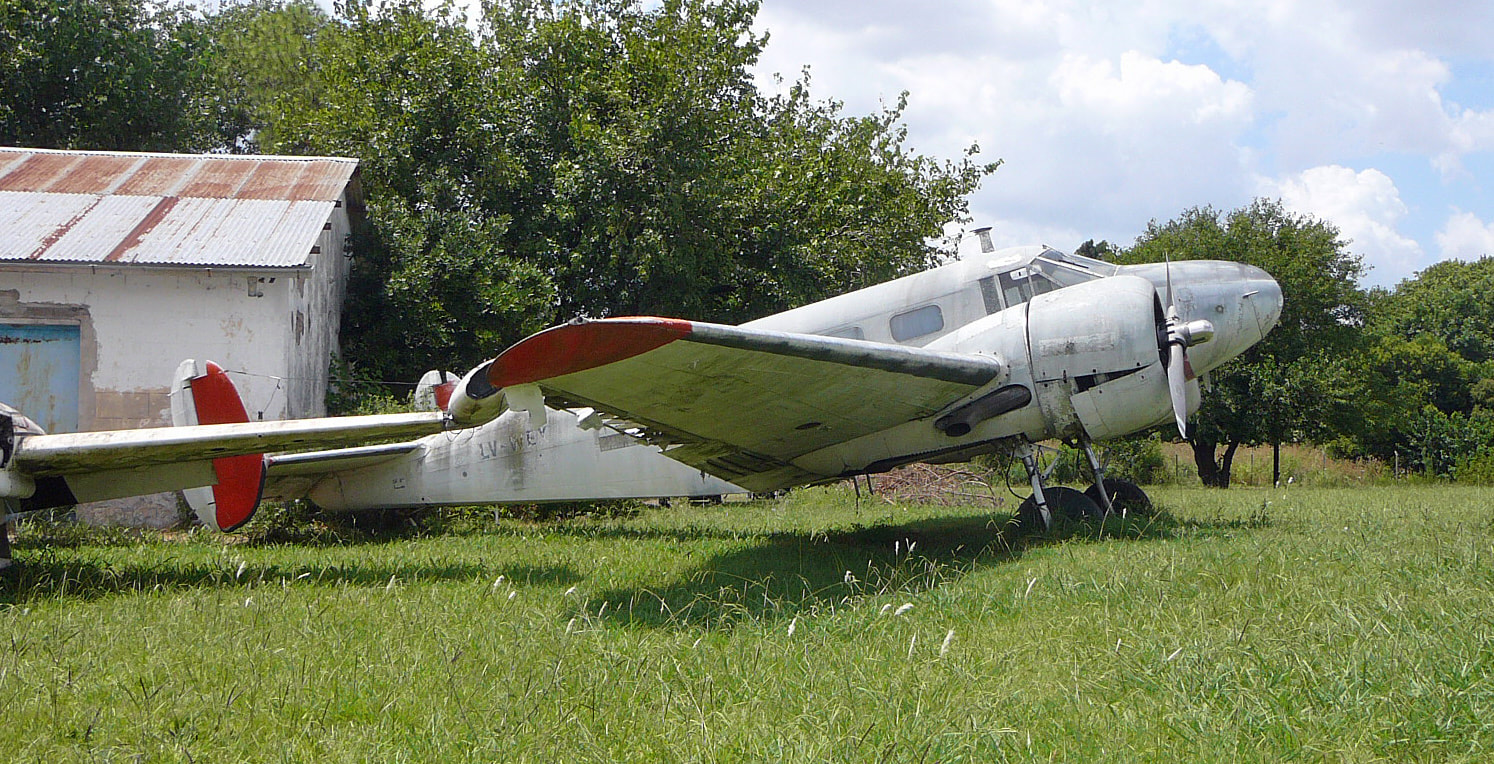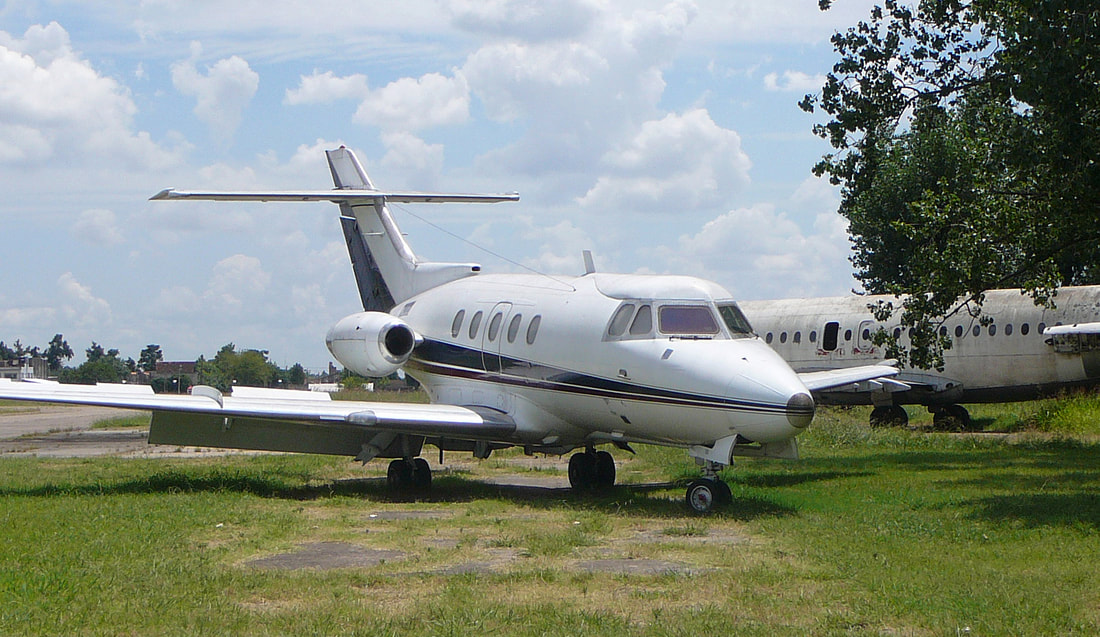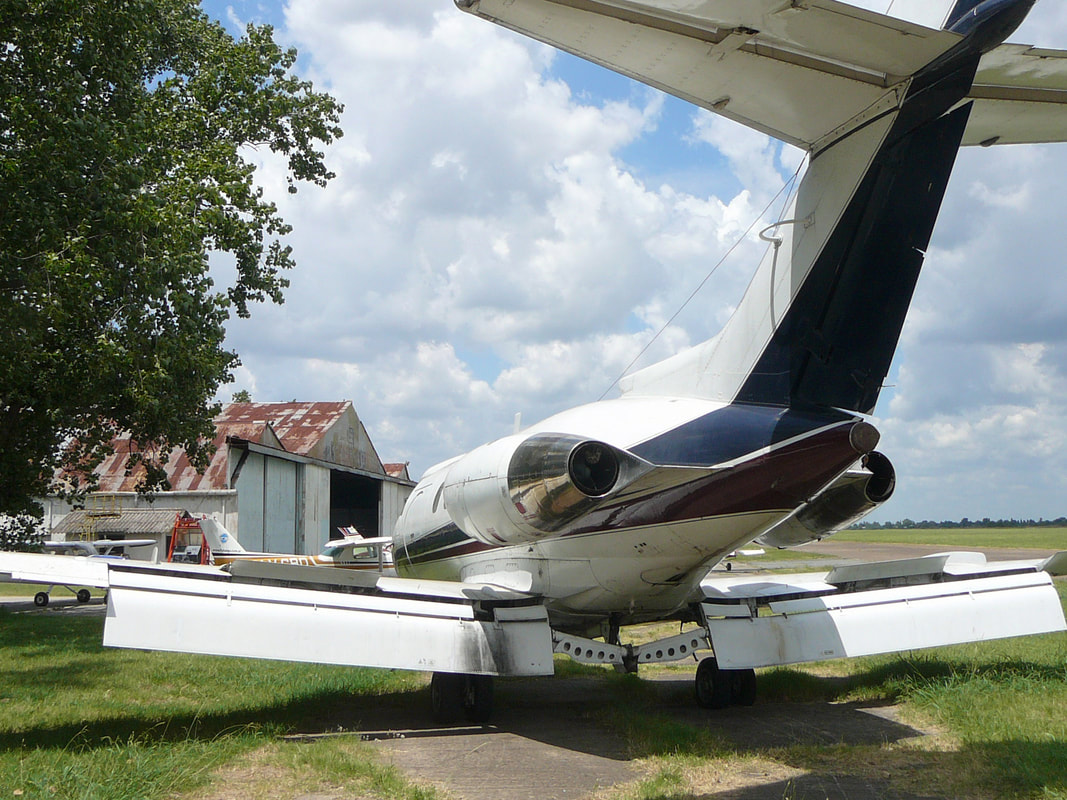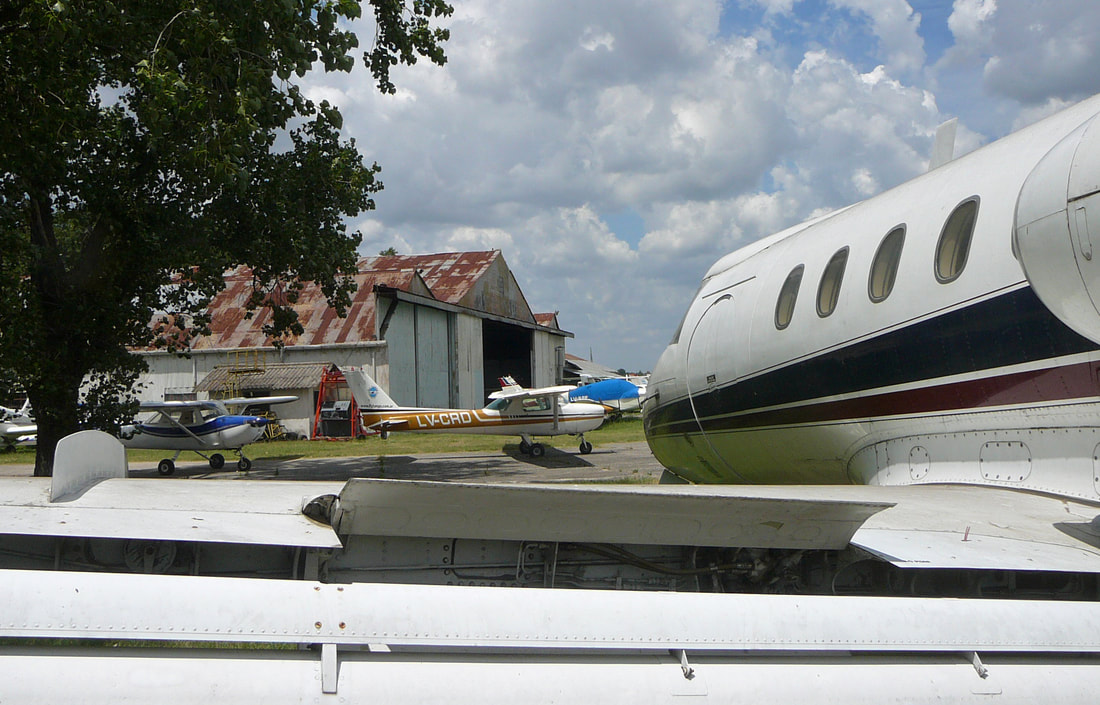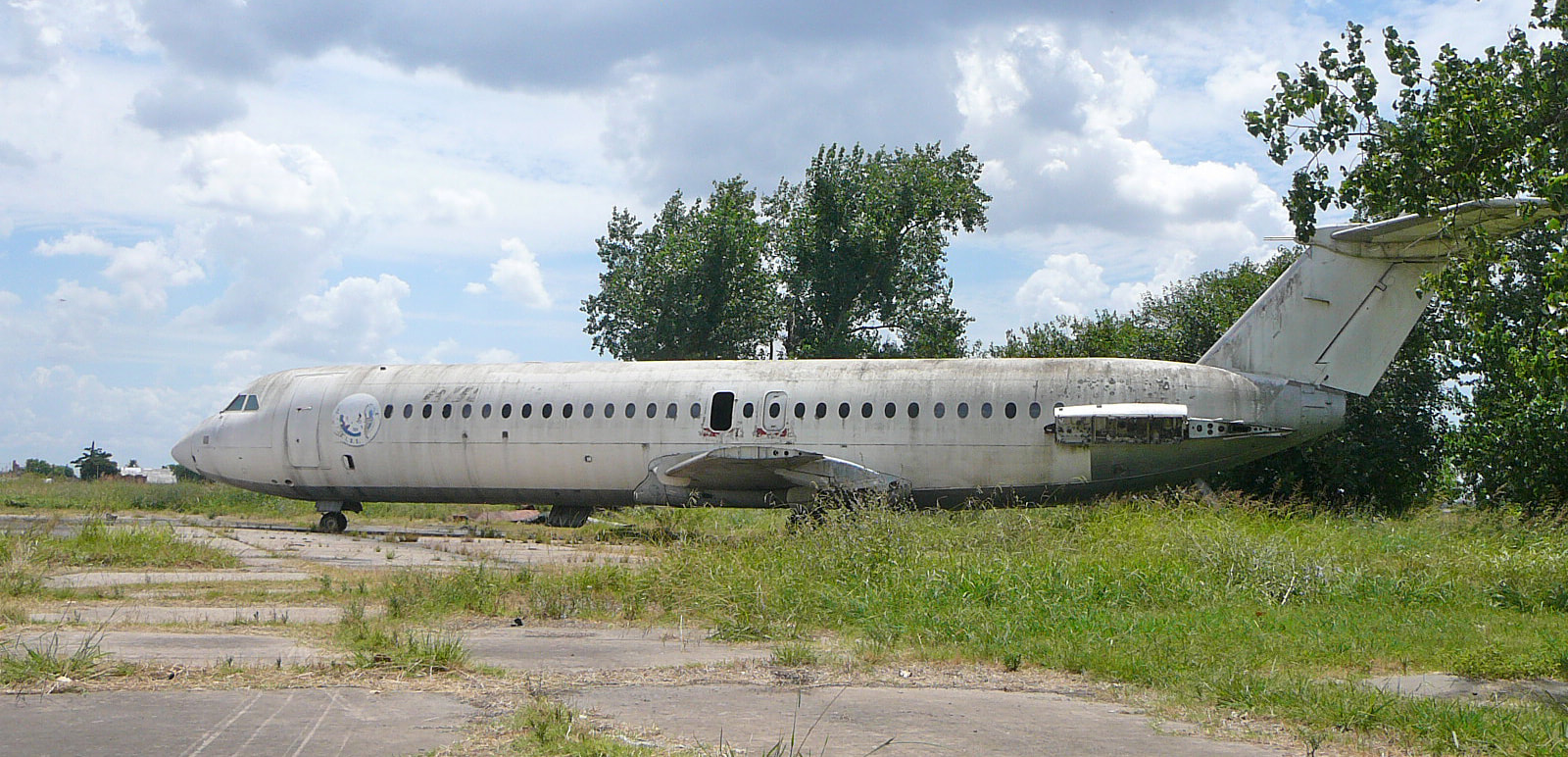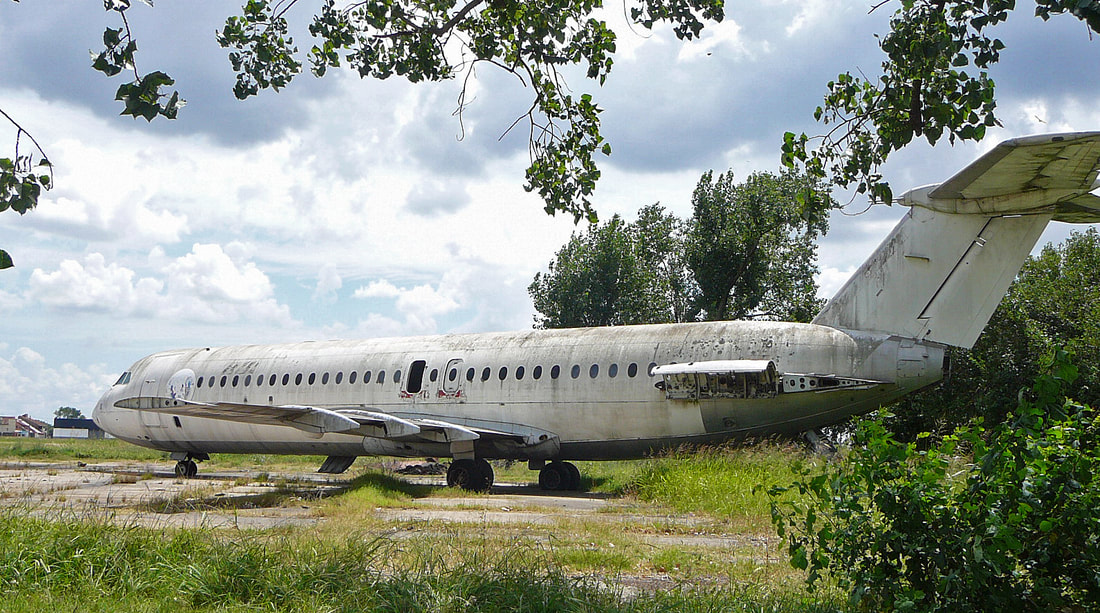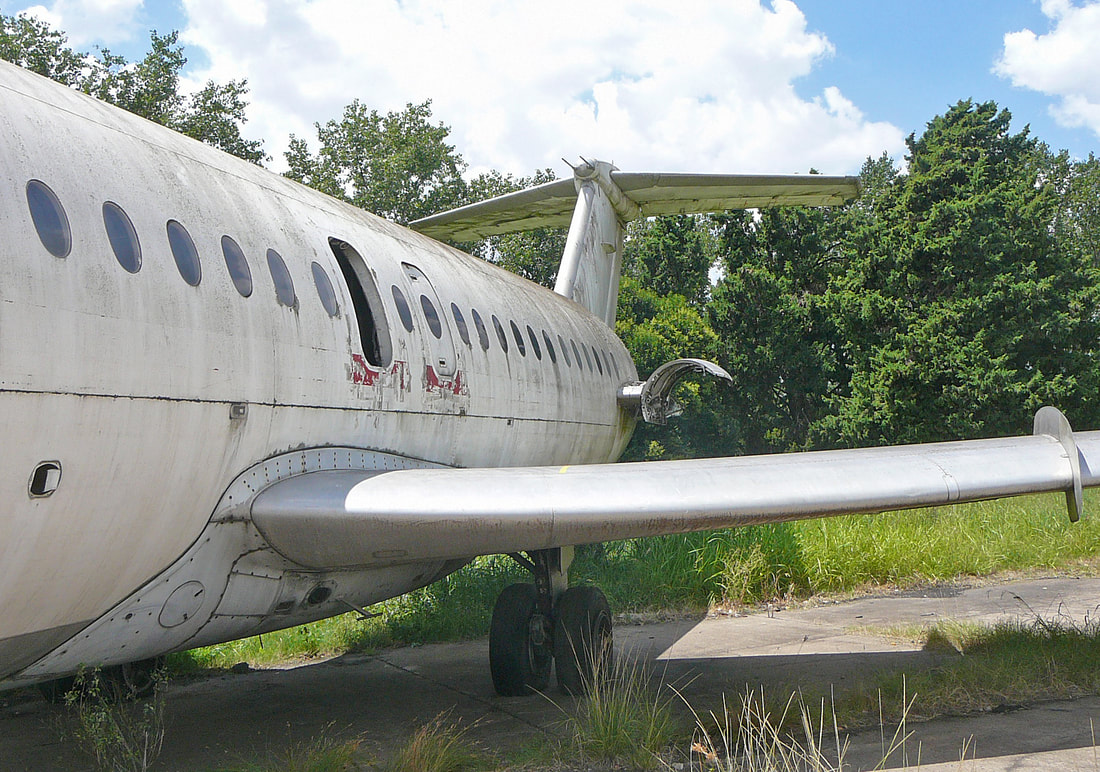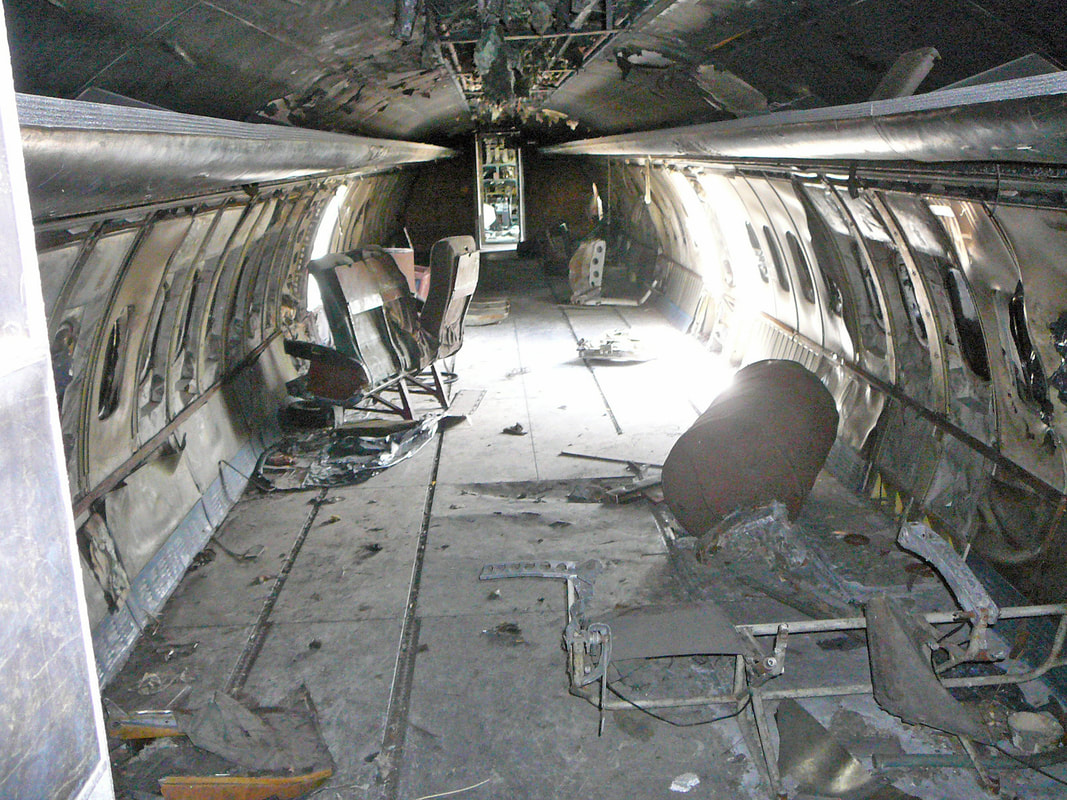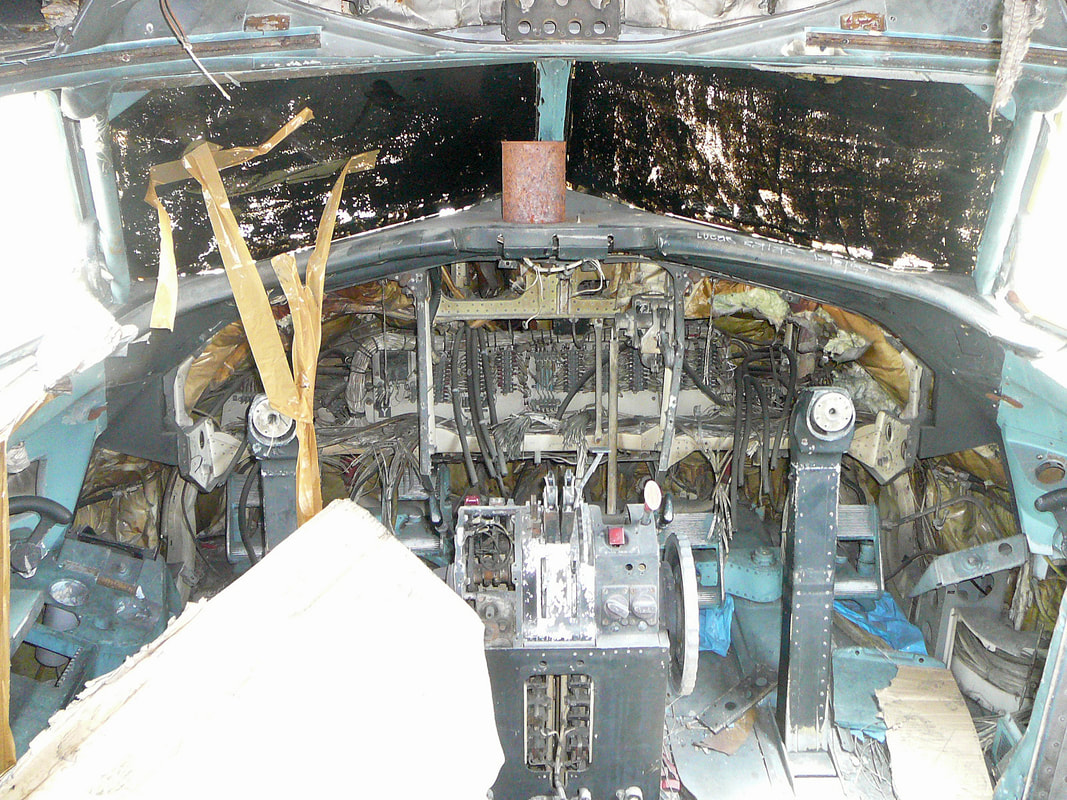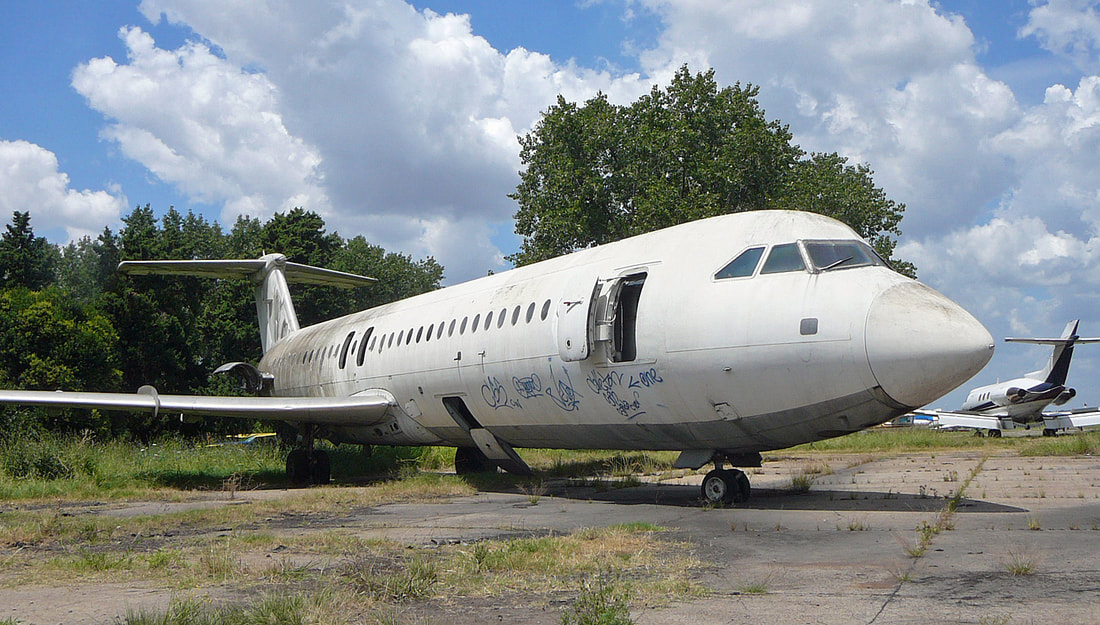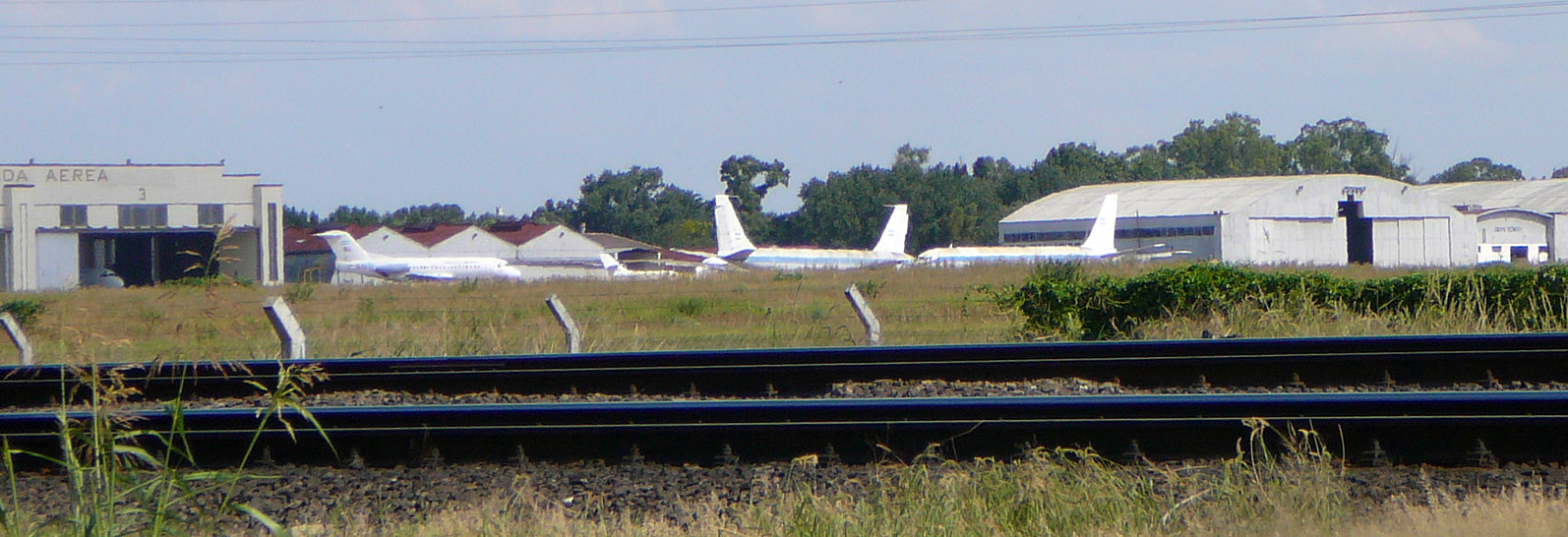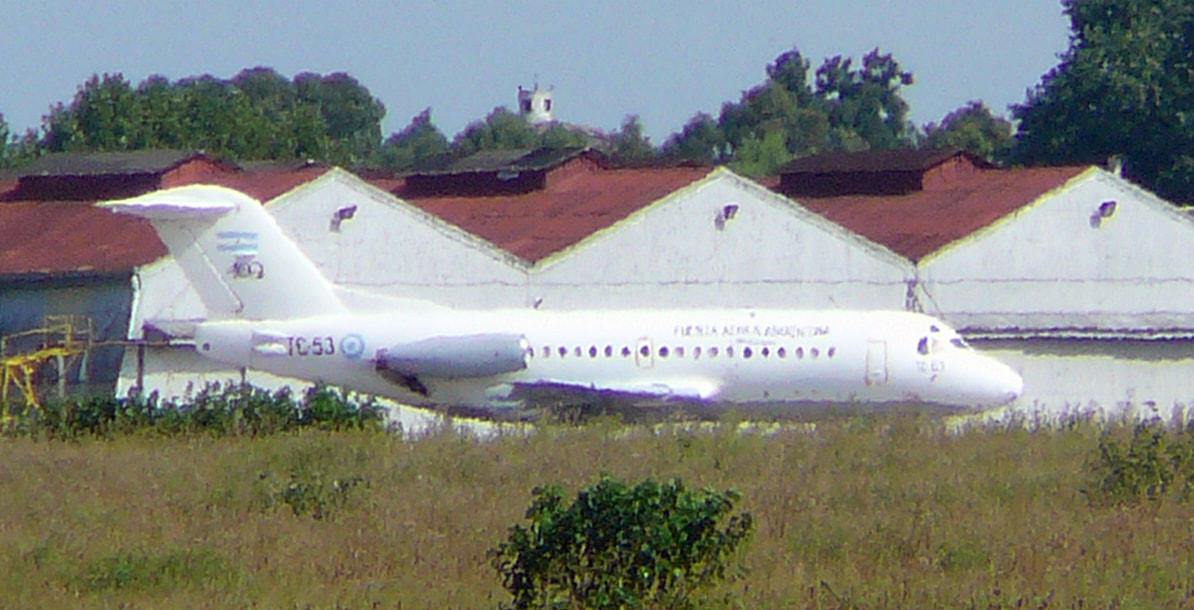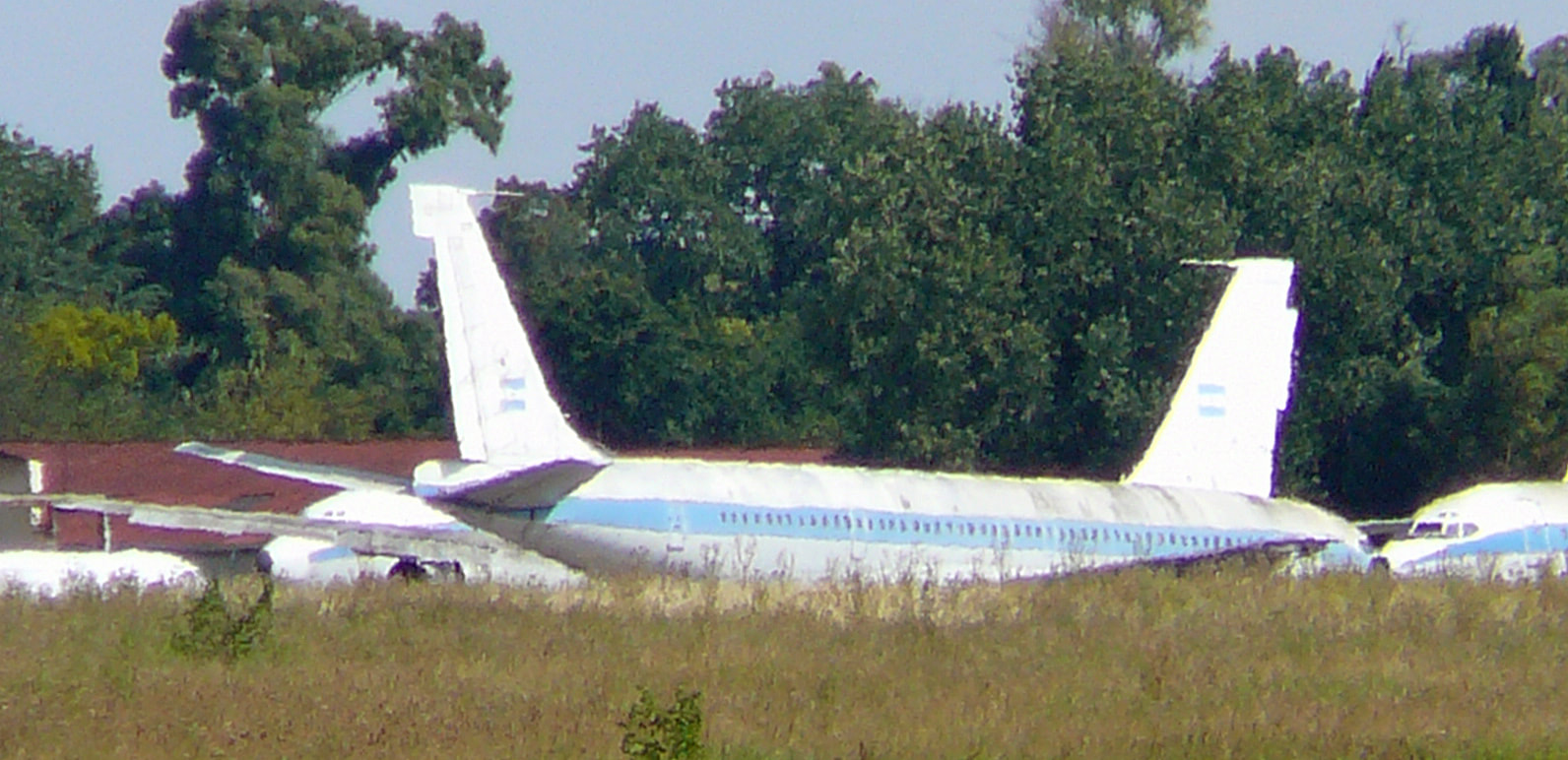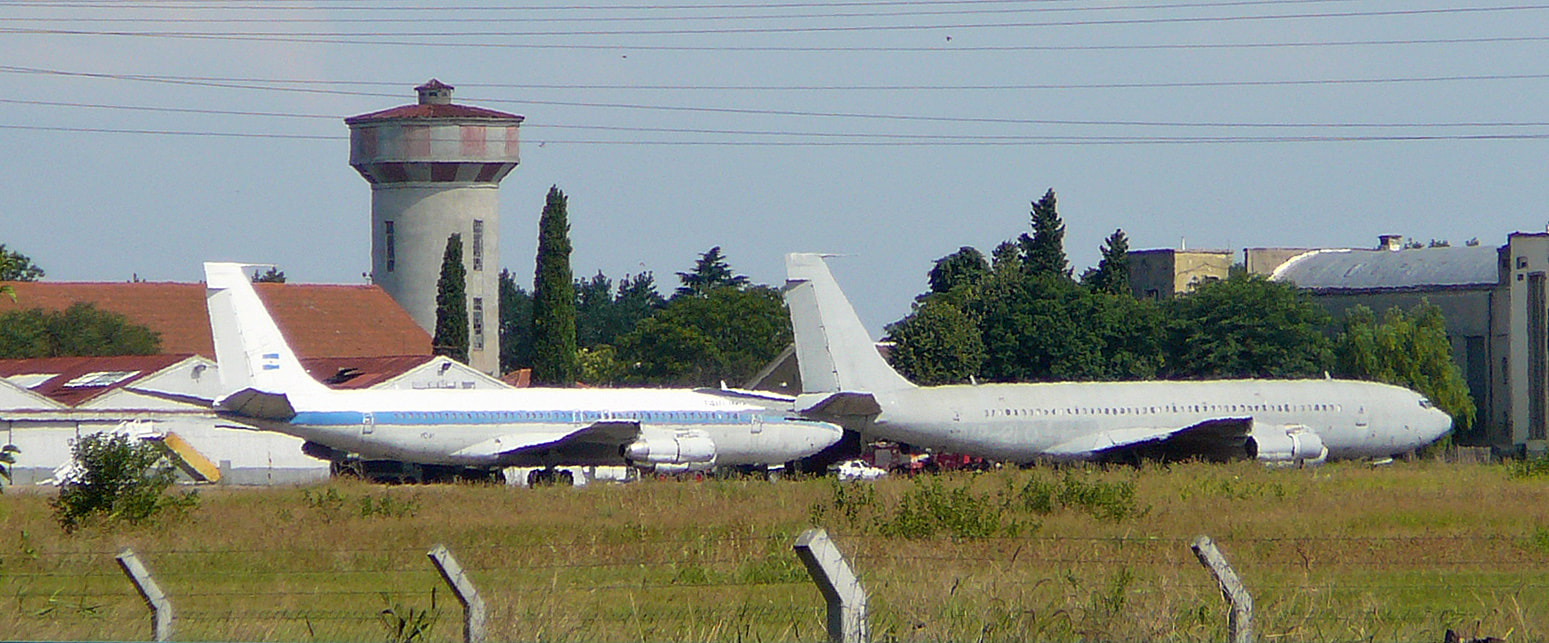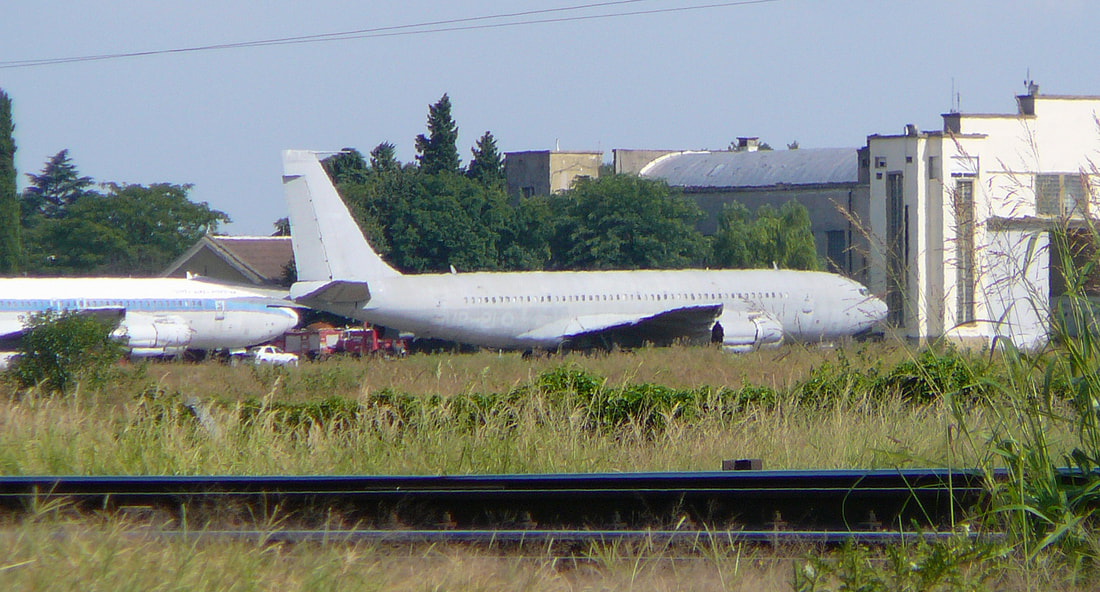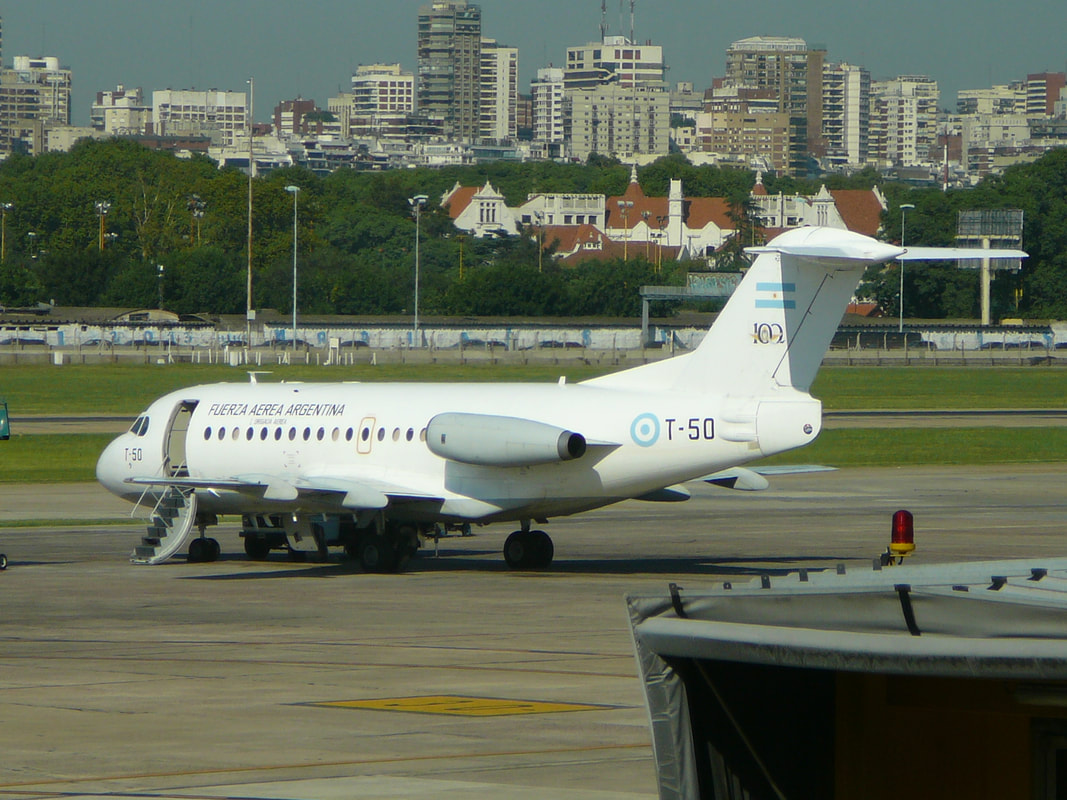Argentina Air Force Museum
Aeropuerto Móron
by Jan Koppen
In January 2013, my girlfriend, our son, and I visited Argentina and Uruguay. I took the opportunity to visit the Moron Air Force Museum and Porlamar Air Base on Buenos Aires' outskirts. Enjoy the pics and captions.
Morón Airport is 3 kilometers southwest of the center of Morón, a western suburb of Buenos Aires in the Buenos Aires Province of Argentina.
The airport is located within a densely populated metropolitan area. The runway length includes a 515 meters (1,690 ft) displaced threshold on Runway 20. The airport is located about 20 kilometers from Buenos Aires city and was the main airport in Argentina prior to the opening of Ministro Pistarini International Airport in 1944.
The airport is located within a densely populated metropolitan area. The runway length includes a 515 meters (1,690 ft) displaced threshold on Runway 20. The airport is located about 20 kilometers from Buenos Aires city and was the main airport in Argentina prior to the opening of Ministro Pistarini International Airport in 1944.
Morón was the base of the defunct airline CATA, which operated between 1986 and 2004.
Also located at Morón are the following institutions:
Also located at Morón are the following institutions:
- the Museo Nacional de Aeronáutica, an aircraft museum with historic aircraft on display.
- the Instituto Nacional de Aviación Civil, a government organization providing training to civilian pilots and technicians.
- a flying school operated by the Aero Club Argentino (Argentine Air Club).
From 1951 to 1988 Móron was the location of the VII Air Brigade (Spanish: VII Brigada Aérea) of the Argentine Air Force, which operated various aircraft, including: Gloster Meteor, Morane-Saulnier MS-760, Bell UH-1D, Hughes 369, Sikorsky S-58T, Grumman Albatross and T-34 Mentor.
Fuerza Aerea Argentina North American F-86F Sabre 'C-122' is part of the Museo Nacional de Aeronáutica.
In the 1960's new aircraft were incorporated in the FAA inventory, including the F-86F Sabre jet fighter which was used for ground-attack.
The Falklands War was the first war fought by the Argentine Air Force against an external enemy. They were unprepared for this war: in comparison to Britain's most modern weapons, some of the Argentine aircraft were obsolete. During the war, the Air Force division of the Junta Militar was called the Southern Airforce (FAS, Fuerza Aerea Sur), led by Ernesto Crespo.
The Falklands War began on May 1, 1982. The RAF initiated Operation Black Buck, in which RAF Avro Vulcan XM607 bombers attacked the Malvinas Military Air Base. The Task Force then proceeded to send Harrier planes to attack positions at Stanley and Goose Green. The first casualties of the Fuerza Aerea Argentina.
The Argentian Air Force reacted by sending IAI Dagger and A-4 Skyhawk attack aircraft, and Mirage III interceptors. The Mirage III went into combat with the Harriers on Bourbon Island, with one Mirage lost to a Harrier. On the day of May 21, the Battle of San Carlos (1982) ("Bomb Alley") began when the Air Force attacked a detachment of British ships making a landing in the San Carlos Water. The Dagger and Skyhawk aircraft sank 3 British ships (HMS Coventry, a Type 42 destroyer; 2 frigates, the HMS Antelope and the HMS Ardent and damage to another 8 ships).
During the march of June 8, the Air Force carried out an operation in Bluff Cove. The British needed to position Infantry Brigade 5 to complete their lock on Puerto Argentino or Port Stanley. For this they used the landing ships RFA Sir Galahad and RFA Sir Tristram. Squadrons of A-4 Skyhawk and Dagger intervened. The planes destroyed both ships and the landing craft Foxtrot 4. The A-4s suffered casualties at the hands of Harriers.
On June 13, the A-4 Skyhawk of the Argentian Air Force renewed their attacks. They were in two formations of four planes each. They launched an attack against enemy troops and helicopters on Two Sister Mount. On June 14, 1982 the Argentine command gave the surrender. The United Kingdom took control of the Falklands, Georgia, and South Sandwich Islands. The Argentine Air Force suffered 55 dead and 47 wounded, in total 101 casualties. With 505 combat departures, the casualties were:
The Falklands War began on May 1, 1982. The RAF initiated Operation Black Buck, in which RAF Avro Vulcan XM607 bombers attacked the Malvinas Military Air Base. The Task Force then proceeded to send Harrier planes to attack positions at Stanley and Goose Green. The first casualties of the Fuerza Aerea Argentina.
The Argentian Air Force reacted by sending IAI Dagger and A-4 Skyhawk attack aircraft, and Mirage III interceptors. The Mirage III went into combat with the Harriers on Bourbon Island, with one Mirage lost to a Harrier. On the day of May 21, the Battle of San Carlos (1982) ("Bomb Alley") began when the Air Force attacked a detachment of British ships making a landing in the San Carlos Water. The Dagger and Skyhawk aircraft sank 3 British ships (HMS Coventry, a Type 42 destroyer; 2 frigates, the HMS Antelope and the HMS Ardent and damage to another 8 ships).
During the march of June 8, the Air Force carried out an operation in Bluff Cove. The British needed to position Infantry Brigade 5 to complete their lock on Puerto Argentino or Port Stanley. For this they used the landing ships RFA Sir Galahad and RFA Sir Tristram. Squadrons of A-4 Skyhawk and Dagger intervened. The planes destroyed both ships and the landing craft Foxtrot 4. The A-4s suffered casualties at the hands of Harriers.
On June 13, the A-4 Skyhawk of the Argentian Air Force renewed their attacks. They were in two formations of four planes each. They launched an attack against enemy troops and helicopters on Two Sister Mount. On June 14, 1982 the Argentine command gave the surrender. The United Kingdom took control of the Falklands, Georgia, and South Sandwich Islands. The Argentine Air Force suffered 55 dead and 47 wounded, in total 101 casualties. With 505 combat departures, the casualties were:
- 19 A-4 Skyhawk
- 2 Mirage III
- 11 Dagger
- 2 Canberra
- 24 IA-58 Pucará
- 1 C-130H Hercules
- 1 Learjet 35
- 2 Bell 212
Fuerza Aerea Argentina Douglas A4D-2N Skyhawk 'C-240'.
During the 1970's the Air Force re-equipped itself with modern aircraft, including Mirage III interceptors, IAI Dagger multi-role fighters (Ex-Israeli, copy of the Mirage V) and C-130 Hercules cargo planes. A counter-insurgency airplane, the Pucará, was also used in substantial numbers. The FAA also participated in the 1976 Argentine Revolution as part of the Junta Militar that supported the new military dictatorship.
Fuerza Aerea Argentina A4D-2N 'C-240' is a veteran of Malvinas War.
Fuerza Aerea Argentina Mirage-3CJ 'C-712'.
Douglas A4-P Skyhawk 'C-207'.
Dagger and Skyhawk aircraft sank 3 British ships (HMS Coventry, a Type 42 destroyer; 2 frigates, the HMS Antelope and the HMS Ardent and damage to another 8 ships).
Fuerza Aerea Argentina English Canberra F.4. 'B-109'.
Fuerza Aerea Argentina 'B-109' was a former RAF Canberra. It was incorporated into Argentina Air Force on September 14, 1971 and withdrawn from use in 2000. Now she is on display at Museo de la Aeronáutica de Morón.
Fuerza Aerea Argentina Gloster Meteor F.4. 'C-041'.
Fuerza Aerea Argentina Morane Saulnier MS.760 Paris 'E-207'.
Fuerza Aerea Argentina Fábrica Militar de Aviones (FMA) Instituto Aerotéchnico (I.Ae) DL-22 'E.a.-701'.
Fuerza Aerea Argentina Percival Prentice T1 'E-390'.
Fuerza Aerea Argentina FMA I.Ae.53 Mamboreta 'PGAX-01'.
Fuerza Aerea Argentina FMA I.Ae.35-16 Huanquero 'A-316'.
The Fábrica Argentina de Aviones S.A. (FAdeA), officially Fábrica Argentina de Aviones "Brigadier San Martín" S.A., is Argentina's main aircraft manufacturer. Founded on October 10, 1927 and located in Córdoba, for most of its existence it was known as Fábrica Militar de Aviones (FMA), until its privatization in the 1990's to Lockheed Martin. In 2009 the concession ended and the companly is now wholly owned by the Argentine government.
Here, your author is caught on camara, at the helm of Huanquero 'A-316', on a sticky day at Móron Air Force museum.
The cockpit of the 'Huanquero' is simple but functional.
Fuerza Aerea Argentina Fiat G.46-5B 'F-441'.
Fuerza Aerea Argentina FMA I.Ae. 50B Guarani II 'F-31'.
The Turbomeca Bastan is a turboprop engine developed in France in 1957. Early models developed 650 shp (485 kW), but by 1965 this had been increased to 1,048 shp (780 kW) with the Bastan VII.
The engine's principal applications were, next to the Guarani II, the Aérospatiale N 262 (Nord 262) and Nord 260 airliners.
The I.Ae. Guaraní II is an Argentine utility aircraft designed at the DINFIA (successor to the "Instituto Aerotecnico" - AeroTechnical Institute) in the early 1960's.
FMA stands for Fábrica Militar de Aviones and I.Ae. stands for Instituto Aerotéchnico.
'F-31' was the last operational G-II and retired in 2006, at the Museo Nacional de Aeronáutica de Argentina.
Fuerza Aerea Argentina Fairchild-82D LV-FHZ.
The Fairchild 82 is an utility aircraft produced in Canada in the mid-1930's, based on designs by Fairchild Aircraft Ltd. (Canada)'s parent company in the United States.
Two Fairchild 82D were purchased by the Argentine government in 1937, initially assigned to survey duties with the Instituto Geográfico Militar. Both aircraft retired by 1963.
Fuerza Aerea Argentina de Havilland Dove 104 'F-12'.
Fuerza Aerea Argentina Max Holste 1521C Broussard 'PG-336'.
Douglas C-47A LQ-GJT looks to be in superb condition.
LQ-GJT was the Argentinian Presidential aircraft between 1960-67. She is presently preserved at the National Museum of Aviation, Moron.
Fuerza Aerea Argentina Douglas R4D-1 Skytrain 'TA-05'.
In 1952 the Air Force began flight to supply the Antarctic scientific bases using ski-equipped C-47’s and establishing Marambio Base on September 25, 1969.
The Argentine Air Force modified TA-05 by fitting it with a Turbomeca Marbore jet engine in the tail and subsequently equipped it with RATO bottles as well. The aircraft was used in Antarctica and survives today at the excellent Museo Nacional Aeronautica in Buenos Aires.
The Argentine Air Force C-47 TA-05, here shown, belonged to the FATA (Antarctic Tasks Air Force), with operational base in Tandil, Buenos Aires, Argentina. This airplane was prepared in 1964 with the operating target of reaching the South Pole for the first time. In that epoch it became the only aircraft around the world because of its technology and preparation. Besides its P&W R-1830 motors its power was increased with JATO rocket units, and with a Marboré III C turbine, of 300 Kgs. thrust, placed inside the tail under the rudder. This was a creative solution to add additional thrust, just in case of motor failures or as help to take off in hazardous flight conditions or on icy runways.
Among the most remarkable characteristics I can list; - additional fuel tanks on the fuselage for the three motors, gear train reinforced with skies, double flight instrument, meteorological radar (a novelty from that time).
A classic cockpit view.
The front office of TA-05, but can a photograph communicate the feel of this wonderful machine?
What a treasure.
In 1952 the Air Force began flight to supply the Antarctic scientific bases using ski-equipped C-47’s and establishing Marambio Base on September 25, 1969.
An iconic bird.
Argentine Air Force DHC-2 Beaver 'P-05' was used in Antarctica.
Fuerza Aerea Argentina Grumman UH-16B Albatross 'BS-02'.
Fuerza Aerea Argentina Aero Commander 500 'T-137'.
Fuerza Aerea Argentina Sikorsky S-61 'H-2'.
|
Argentina does not use porper heraldic arms, but the left emblem, which is commonly referred to as a coat of arms. The emblem was adopted in 1813. Both right human forearms represent the union of all towns into the United Provinces of River Plate. The red cap is an older symbol for liberty and the pike demonstrates the purpose of holding it even when fighting.
The rising sun, announces to the world the appearance of a new nation. The laurels are symbols of victory and triumph, depicting the glory acquired in Suipacha and Tucumán battles. The ribbon and the shield in blue and white colours, have similar colours of each part of the ellipse and it is allusive to the Argentine nationality. |
Fuerza Aerea Argentina Douglas C-54A Skymaster 'T-45'.
This airframe (c/n. 7465) had serviced the USAAF as ship 42-107446. After the war she was transferred to a reconstruction finance corporation in exported to Argentina with registration LV-XGL. She was delivered to the Fuerza Aérea Argentina as 'T-45' in 1947 and was struck off charge in 1966. It seemed she was scrapped during 1968 and only the cockpit section was saved and can be seen in the Museo Nacional de Aeronáutica, Morón, Buenos Aires.
Fuerza Aerea Argentina Fokker F-27-600 'T-42'.
'T-42' looked rather lackluster back in January 2013.
Fuerza Aerea Argentina Bristol 170 Freighter C.1A 'TC-330' was built in 1946.
This sturdy freighter entered service with the 1 Brigada Aerea in 1946. Later on in 1952 was transfered to Escuadrón del Grupo 1 de Transporte Aereo. She was withdrawn from use in 1967.
|
The Bristol Type 170 Freighter was a British twin-engine aircraft designed and built by the Bristol Aeroplane Company as both a freighter and airliner. Its best known use was as an air ferry to carry cars and their passengers over relatively short distances. A passenger-only version was also produced, known as the Wayfarer.
The Freighter was developed during the Second World War, having attracted official attention from the British Air Ministry, which sought the development of a rugged vehicle capable of carrying various cargoes, including a 3-ton truck. Various changes to the design were made to accommodate their requirements, but being completed too late to participate in the conflict, the majority of sales of the Freighter were to commercial operators. |
Well worn, 'TC-330' exudes rugged dependability.
In the RAF slang they should say; - "Things were going a bit pear-shaped at the time!".
An airplane stored outside will be subject to streaking down the paintwork from dust and dirt deposits unless washed regularly. Damage to the fuselage side of multi—engine airplanes is likely due to ice breaking from propeller blades when de—icing equipment is in use. Dented skin and chipped paintwork will be evident on the fuselage in the plane of the propeller disc.
Fuerza Aerea Argentina Vickers Viking 1B 'T-9' was built in 1947.
With a midday temperature of over 40 degrees centigrade, Fuerza Aerea Argentina Vickers Viking 1B 'T-9', rests on Móron Airbase tarmac, on a lazy January day in 2013.
A very scruffy and weathered, 1978 built, Fairchild Swearingen SA-226TC Metro II, registered LQ-MLV, was retired at Móron in March 2009 and still wears its faded paint scheme from its days with the Ministry of Health air ambulance (MEDEVAC).
Fuerza Aerea Argentina Avro 694 Lincoln B2 'B-010'.
Lincoln 'B-010' was ordered for the Royal Air Force as RE351, but diverted to Argentina. The aircraft is actually B-004 but is marked B-010 and is displayed at the museum.
The Avro Type 694, better known as the Avro Lincoln, is a British four-engined heavy bomber, which first flew on 9 June 1944. Developed from the Avro Lancaster, the first Lincoln variants were initially known as the Lancaster IV and V; these were renamed Lincoln I and II. It was the last piston-engined bomber operated by the Royal Air Force (RAF).
Fuerza Aerea Argentina Lockheed C-130B Hercules 'TC-60'.
'TC-60' was delivered to the USAF as a C-130B-LM Hercules in 1962. After her military career in the U.S. she was imported into Argentina the Fuerza Aérea Argentina, 1st Brigada Aérea in February 1994. She was withdrawn from use in September 2011 and preserveed in the Museo Nacional de Aeronáutica, Morón, Buenos Aires.
It was a sticky day at Móron Airbase, on January 23, 2013.
Aeropuerto Moron
Fuerza Aerea Argentina
The Phoenix Squadron (Spanish: Escuadrón Fénix) was a volunteers' special unit of the Argentine Air Force established during the 1982 Falklands War. The Argentine Air Force reconnaissance force at that time was formed around the Grupo 1 Aerofotográfico (English: 1st Air Photographic Group) part of the 2nd Air Brigade equipped with two Learjet 35As and based at Parana province of Entre Rios.
In April 1982, the unit was deployed to Comodoro Rivadavia and was reinforced with several civilian planes and their civilian pilots who volunteered to fly them. During the war, the Learjets performed 52 missions including search and reconnaissance flights, communications retransmission flights, and pathfinder flights to guide combat jets with the Learjets’ superior navigation systems.
The unit's most difficult missions were 126 sorties in which the Learjets acted as decoys, flying day and night to simulate strike aircraft preparing to attack the fleet. Many believe that most of the Argentine A-4 Skyhawks and Daggers successes were achieved because the British Sea Harriers had been drawn away from more important targets. His improvised Fenix squadron creatively baited the British with decoys, forced a response and stretched their CAP coverage to improve the chances of survival and success of his attack force. On one of these flights, on June 7, an Air Force Learjet was shot down over Pebble Island by a surface-to-air Sea Dart missile fired by HMS Exeter.
In April 1982, the unit was deployed to Comodoro Rivadavia and was reinforced with several civilian planes and their civilian pilots who volunteered to fly them. During the war, the Learjets performed 52 missions including search and reconnaissance flights, communications retransmission flights, and pathfinder flights to guide combat jets with the Learjets’ superior navigation systems.
The unit's most difficult missions were 126 sorties in which the Learjets acted as decoys, flying day and night to simulate strike aircraft preparing to attack the fleet. Many believe that most of the Argentine A-4 Skyhawks and Daggers successes were achieved because the British Sea Harriers had been drawn away from more important targets. His improvised Fenix squadron creatively baited the British with decoys, forced a response and stretched their CAP coverage to improve the chances of survival and success of his attack force. On one of these flights, on June 7, an Air Force Learjet was shot down over Pebble Island by a surface-to-air Sea Dart missile fired by HMS Exeter.
Learjet 25D LV-MMV tucked up next to a hangar in the somewhere at Móron Airbase.
Learjet 25D LV-MMV, with 'El Conflicto Del Atlantico Sur' titles, crashed into the sea on September 23, 1989, but she was salvaged and trucked to Móron Airbase for part-out.
CIATA BAC One-Eleven 515FB, LV-MZM.
This frame flew with Bavaria Germanair as D-AMAS, When I was 18 year old we often went on a spotting trip from AMS to DUS to spot new frames, including D-AMAS. Some 30 years later I saw her again. This time in Argentian. She served Austral from dec. 1979 until 1993. LV-MZM, is preserved at the INAC (Instituto Nacional de Aviación Civil) for the use of C.I.A.T.A. (Centro de Instrucción de Aeronavegantes y Técnicos Aeronáuticos) where it is used for training purposes. LV-MZM was also used for ferrying supplies to Comodoro Rivadavia from the El Palomar military base in Buenos Aires, Cordoba and Neuquén in support of the Falklands campaign but never flew to Port Stanley.
The portside wing of Boeng 737-200 LX-WTX, form a fitting frame for Beechcraft C-45 expeditor LV-WEX.
LV-WEX is a very scruffy and weathered Beechcraft C-45 expeditor.
It is a 'H' model without a lick of paint on its dull, grimy hide other than the registration, LV-WEX.
This unmarked HS.125, (LV-YGC), is tucked away at Moron Airport in Argentina.
Geriatric jet hulks, like this BAC One-Eleven 524FF, LX-OAX, are an increasingly familiar sight around the world.
This frame flew with Hapag Lloyd as D-AMOR, When I was 18 year old we often went on spotting trip from AMS to DUS to spot new frames, including D-AMOR. She served Austral from 1980 until 1993. LV-OAX, is presently used by the fire school.
During Falkland War LV-OAX was chartered by the Argentine Government to operate four rotations between Comodoro Rivadavia and Port Stanley in the Falkland Islands in April 1982. She was also used for ferrying supplies to Comodoro Rivadavia from the El Palomar military base in Buenos Aires, Cordoba and Neuquén in support of the Falklands campaign and even flew to Port Stanley with soldiers.
During Falkland War LV-OAX was chartered by the Argentine Government to operate four rotations between Comodoro Rivadavia and Port Stanley in the Falkland Islands in April 1982. She was also used for ferrying supplies to Comodoro Rivadavia from the El Palomar military base in Buenos Aires, Cordoba and Neuquén in support of the Falklands campaign and even flew to Port Stanley with soldiers.
The BAC One-Eleven was designed for smaller airports, so independence from ground facilities was an important requirement. This led to one of the One-Eleven's most distinctive features: the built-in airstair that opens from the rear underbelly of the fuselage.
Does that not pull your heart out to see this?
She provided yeoman service for Hapag Lloyd and Austral, but she now rots at a disused Argentinian Airbase .
A glance at Brigada Aerea No. 1 at El Palomar. Here the Fuerza Aerea Argentina had its 707's, F-28's and C-130's based. We didn't stay long. Carlos ensured me that the neighborhood was very unsafe, as robbery and shootings seemed a common practice in this area!
Fuerza Aerea Argentina Fokker F-28-1000's; TC-50, TC-52, TC-53 and TC-54 were spotted at El Palomar, on January 23, 2013.
Here, Fuerza Aerea Argentina Fokker F-28-1000, TC-53 simmer in the dry heat of an Argentinian afternoon in January 2013.
Fuerza Aerea Argentina Boeing 707's; TC-91, TC-94, TC-95, VR-21 and former LV-WXL, were spotted under the intense Argentinian sunshine in January 23, 2013.
Budgetary constraints in 2010, lead to the disbanding of the Boeing 707 transport squadron.
Fuerza Aerea Argentina Boeing 707-387C VR-21 soaks up the afternoon day sun at El Palomar.
Before this trip I was informed about the possibility to fly LADE F-28’s from Aeroparque. Lineas Aereas del Estado is a part of the Fuerza Aerea Argentina and operates four F-28-1000’s. Given the fact that there are hardly any Fokker Fellowship operators left in the world, Bangladesh Biman grounded their F-28s last year, and being a Dutchman, a flight aboard this Fokker Jet is an opportunity not to be missed.
LADE operated every Thursday and Tuesday flight 5U/770 with a Fokker F-28-1000. Leaving Aeroparque at 09:30 hours for Ushaia in the southern-most tip of Argentina. Stops were made in Mar del Plate, Bariloche, Calafate and Rio Gallegos. Beware; with so many stops this flight will take whole day! Tickets could be bought with LADE’s town office. My wife and I opted for the first leg to Mar del Plate.
Our flight to Mar del Plata
Designated aircraft for our flight appeared F-28-1000 T-50. T-50 has had a very interesting career. She rolled out of the Fokker factory in March 1972 and started flying for Fairchild Hiller corp. and two years later she was leased by Fokker to Aviateca. In 1976 she was displayed at the Farnborough show before she was sold to Argentinian government as ship T-02 and later as T-04. During these years she was the personal transport for several presidents and even the Pope. In 2005 she was transferred to the military as T-50.
With a fresh coat of paint T-50 seemed externally in very good shape. Internally the 40+ year old Fokker is looks very classic with her open head racks. The beautiful leather fauteuils are even more comfortable than many business class seat on A-class carriers !
During the flight a had a meet and greet with the flight crew. The crew, wearing their Air Force uniforms, consisted of Cpt. Matias Vallejos, Vice-cpt. Cartos Pesante and Co-pilot Walter Dulgais. The purser was Raul Fernandez.
The 45 minutes flight to Mar del Plate was very pleasant. Raul explained me that (in 2013) four F-28s and two F-27s of the Fuerza Aerea are operational. On my question; “how much longer will the Fellowships soldier on ?”, - Raul remarked with a smile on his face - “until they will fall from the sky"!
LADE operated every Thursday and Tuesday flight 5U/770 with a Fokker F-28-1000. Leaving Aeroparque at 09:30 hours for Ushaia in the southern-most tip of Argentina. Stops were made in Mar del Plate, Bariloche, Calafate and Rio Gallegos. Beware; with so many stops this flight will take whole day! Tickets could be bought with LADE’s town office. My wife and I opted for the first leg to Mar del Plate.
Our flight to Mar del Plata
Designated aircraft for our flight appeared F-28-1000 T-50. T-50 has had a very interesting career. She rolled out of the Fokker factory in March 1972 and started flying for Fairchild Hiller corp. and two years later she was leased by Fokker to Aviateca. In 1976 she was displayed at the Farnborough show before she was sold to Argentinian government as ship T-02 and later as T-04. During these years she was the personal transport for several presidents and even the Pope. In 2005 she was transferred to the military as T-50.
With a fresh coat of paint T-50 seemed externally in very good shape. Internally the 40+ year old Fokker is looks very classic with her open head racks. The beautiful leather fauteuils are even more comfortable than many business class seat on A-class carriers !
During the flight a had a meet and greet with the flight crew. The crew, wearing their Air Force uniforms, consisted of Cpt. Matias Vallejos, Vice-cpt. Cartos Pesante and Co-pilot Walter Dulgais. The purser was Raul Fernandez.
The 45 minutes flight to Mar del Plate was very pleasant. Raul explained me that (in 2013) four F-28s and two F-27s of the Fuerza Aerea are operational. On my question; “how much longer will the Fellowships soldier on ?”, - Raul remarked with a smile on his face - “until they will fall from the sky"!
- The End -
